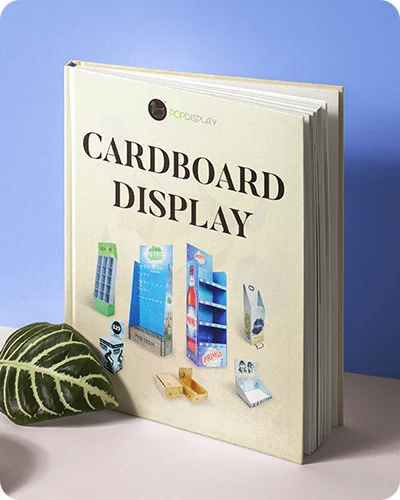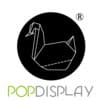Popdisplay is a trusted manufacturer and supplier of high-quality cardboard displays in China, with over a decade of experience in the industry. We offer customized sizes, shapes, and designs to perfectly fit your project needs. Our comprehensive one-stop service ensures that every detail is taken care of. Request a quote today and get fast, competitive pricing for your next display project!
Your Trusted Manufacturer of Cardboard displays
Cardboard displays are known for their excellent versatility, strength, and eco-friendly properties. Lightweight yet durable, they are perfect for showcasing products in retail environments. At Popdisplay, we specialize in designing and manufacturing custom cardboard displays tailored to your exact needs. With over a decade of experience, we provide solutions in various sizes, shapes, and designs, all customizable to fit your branding and display requirements. Whether you need a unique design or a specific structure, we have the perfect solution for your project. Contact us today for a personalized quote!

POP UP Cardboard Displays
Built for versatility, our cardboard displays combine lightweight strength with creative potential. Resistant to wear and tear, these displays offer a durable, eco-friendly solution for showcasing your products in retail and trade show settings. With customizable designs, sizes, and branding options, we bring your vision to life while ensuring a lasting impression.

Pallet Cardboard Displays
Popdisplay offers a full range of customizable cardboard displays, designed to meet your brand's needs. Whether you're looking for unique designs, structural adjustments, or specific dimensions, our team is ready to create the perfect display solution for your business. We provide prototypes, free modifications, and high-quality production to ensure satisfaction every time.

Retail Cardboard Displays Shelf
Engineered for reliability, our cardboard displays stands offer exceptional strength while maintaining a lightweight profile. Perfect for both heavy-duty and lighter products, these stands are designed to enhance the visibility of your merchandise. Customizable for all retail environments, they ensure your products are presented with both stability and style.
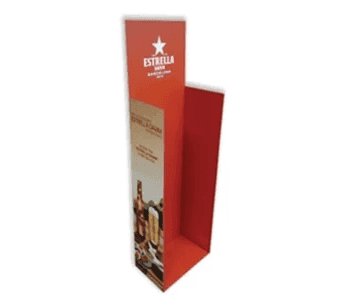
Beer Drink Case Stacker Displays
Point of Purchase displays are designed to capture customer attention right at the moment of purchase. Made from durable cardboard, these displays can be fully personalized to feature your product, brand logo, and promotional messages. Our custom POP displays are an ideal way to drive sales and boost brand awareness.
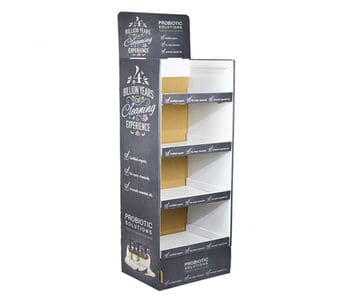
4 Shelves Floor Display Stand
Eco-Friendly Cardboard Displays
Crafted from sustainable materials, our cardboard displays offer a responsible yet high-performance solution. Designed to be strong and durable, these displays are perfect for businesses that prioritize environmental impact without sacrificing style. Fully customizable, they let your products shine while supporting your brand's green initiatives.

Divider Pocket/Cell Floor Displays
Floor stand cardboard displays are a highly effective way to showcase your products in retail environments. These displays offer a great balance of stability and visibility, making them perfect for point-of-sale areas. Crafted with care, they can be fully customized to match your branding and product needs.

Tray Corrugated Displays Stand
Branded Cardboard Displays
Exude professionalism and creativity with our custom-branded cardboard displays. Designed to align with your brand identity, these displays help highlight your products in the best possible way. With vibrant print options and sturdy structures, these displays not only enhance your product's visibility but also elevate your brand's presence in any retail or trade environment.
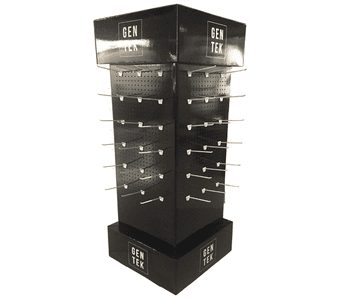
4 Side Hang Pegable/Hooks Displays
When durability and easy setup are essential, cardboard floor display stands are the perfect solution. Whether you're showcasing individual products or a series of items, these stands are designed to offer a high-quality presentation that enhances customer engagement and visibility.

Counter Displays
Compact and stylish, Pop-Up Counter Displays bring products right to the customer’s eye level. Great for checkout counters and tabletops, they help drive last-minute purchases. Fully customizable in shape and graphics, these displays showcase small products like accessories, cosmetics, or gadgets while keeping the focus on your brand.
Tailor-Made Cardboard Displays for Your Unique Needs
At Popdisplay, we understand that every project is unique, and we are committed to delivering cardboard displays that perfectly match your requirements. With years of experience in the industry, we've built a reputation for providing high-quality, custom solutions that not only meet but exceed expectations. From custom sizes and shapes to unique branding and design features, we specialize in creating displays that truly reflect your brand and products. Trust us to bring your vision to life with precision and care.
Trust Popdisplay for displays that reflect your brand's image and drive sales in your stores.
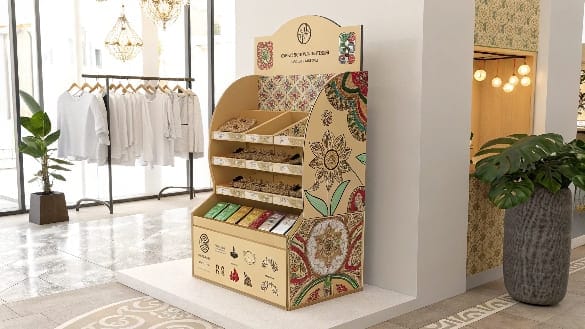
Our Tailored Service List:
- Custom Sizes: Whether small countertop displays or large floor stands, we design displays to your exact dimensions.
- Unique Designs: From sleek modern to bold promotional styles, our creative team ensures your display stands out.
- High-Quality Printing: Crisp, vibrant graphics that match your brand's identity perfectly.
- Strong & Durable Materials: We use premium cardboard to ensure your displays can hold the weight of your products.
- Full Customization: Choose from various shapes, sizes, finishes, and features to suit your marketing needs.
More Than Your Cardboard Displays Supplier
With years of experience in creating custom cardboard displays, Popdisplay offers a comprehensive range of solutions to meet the unique needs of every business. We focus on providing high-quality, eye-catching designs with fast delivery and competitive pricing, making us a trusted partner for businesses worldwide.
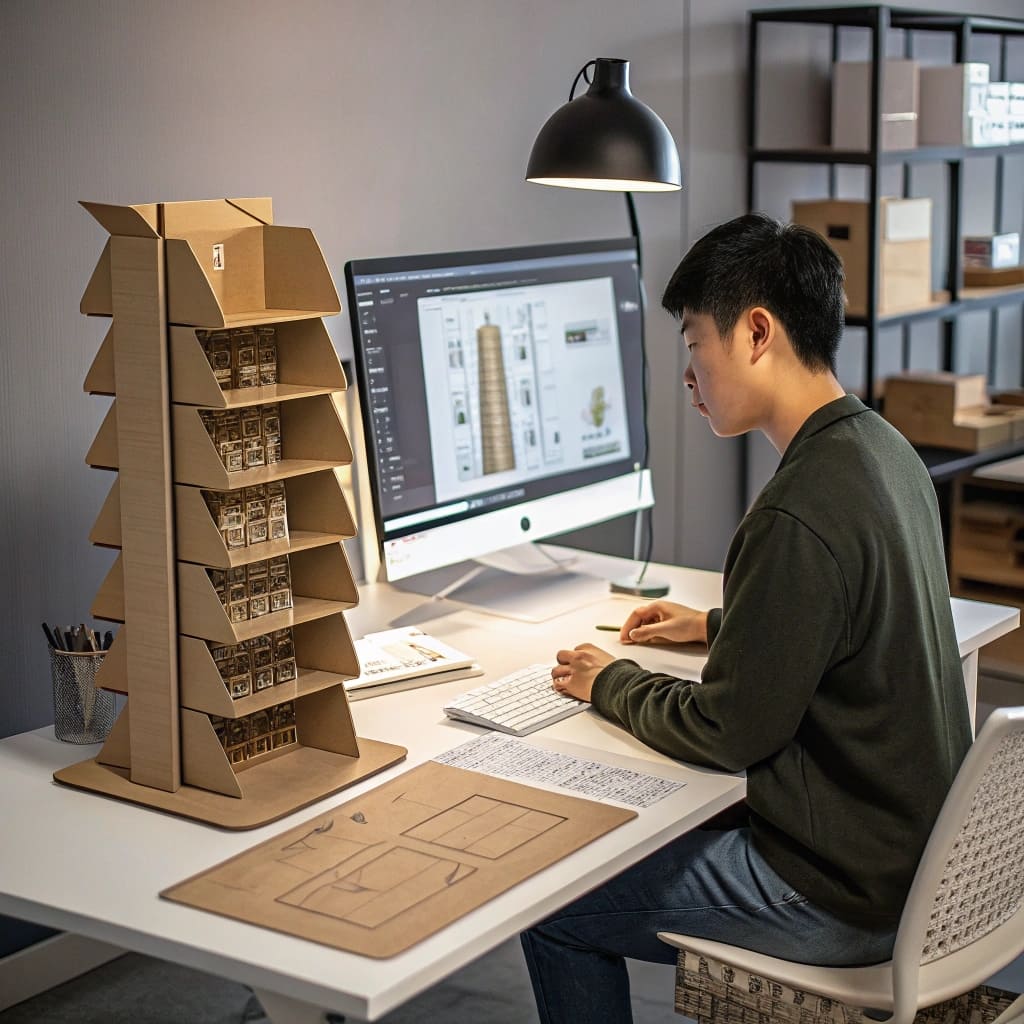

Cardboard Displays Design Recommendations
Unsure about the best display style for your products? Let our experts guide you in selecting the perfect design that highlights your brand while ensuring functionality and durability.

Customer Support
Need help with your display order? Our team is here to assist. Whether it's design advice, project insights, or assistance with logistics, we offer full support throughout your process.
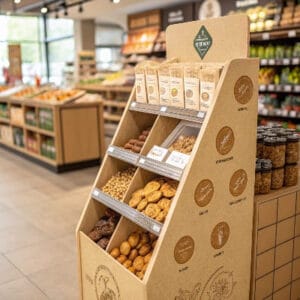
Extensive Range of Displays
Popdisplay offers a wide variety of cardboard displays options, from point-of-purchase stands to floor displays, all tailored to different product types and retail environments.
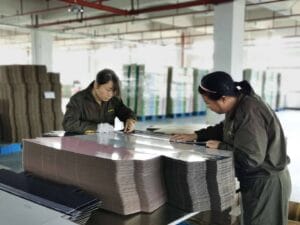
High-Quality Production
With our experienced production team, we ensure that every cardboard displays is crafted with precision and quality, matching your exact specifications for both design and strength.
Why Choose Cardboard Displays from PopDisplay?
At Popdisplay, we are committed to providing outstanding custom cardboard displays solutions. Since our inception, we have specialized in delivering high-quality, eye-catching displays tailored to the unique needs of retail businesses. With our dedicated team and cutting-edge production processes, we ensure that every display is built to maximize your brand's impact.
- 12+Years of Expertise: With extensive experience in the cardboard displays industry, Popdisplay combines a team of skilled designers and engineers with advanced production capabilities to deliver high-quality displays with precision and reliability.
- Competitive Pricing: We provide cost-effective solutions without sacrificing quality. Our efficient manufacturing processes allow us to offer excellent value while ensuring that your displays meet the highest standards.
- One-Stop Solution: Popdisplay offers a full-service solution—from initial design to fast production and delivery. We make it easy for our clients to receive custom displays tailored to their specifications, all with minimal hassle.
Choose Popdisplay, and enjoy the benefits of our expertise, affordable pricing, and comprehensive service that elevates your brand in every retail space.

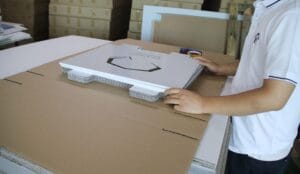

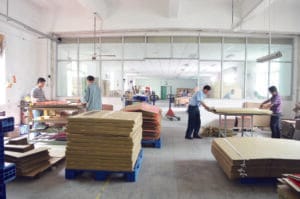
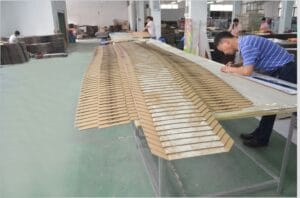
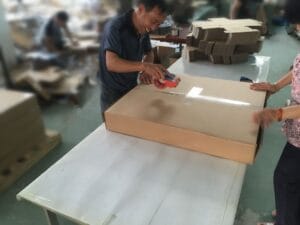

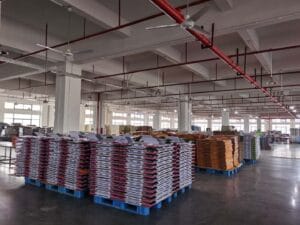
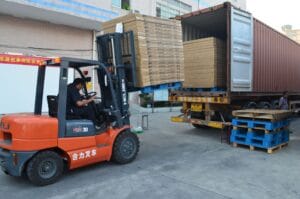
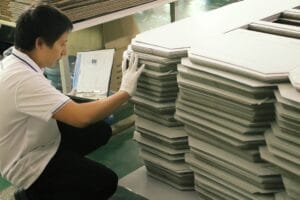
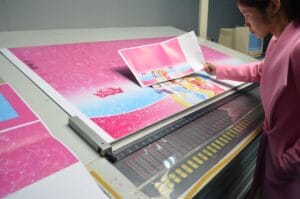

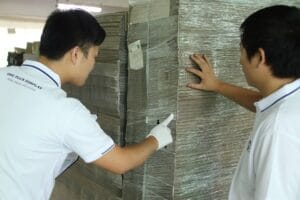
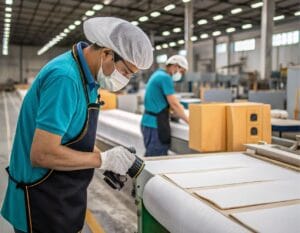
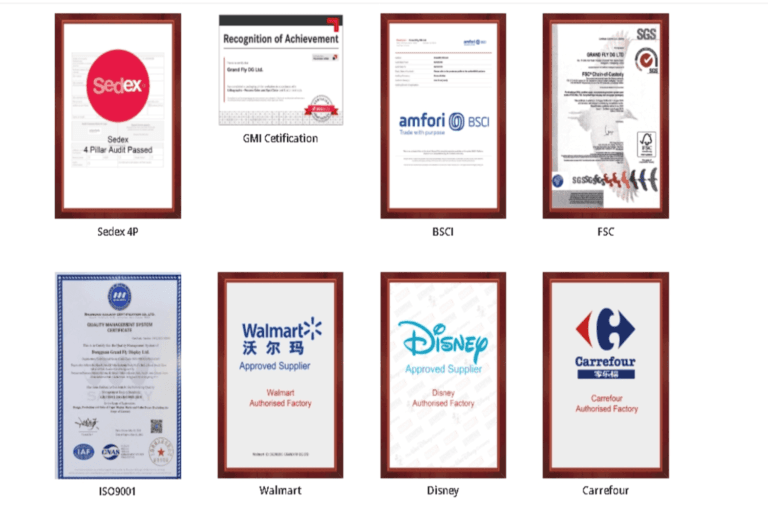

The Ultimate Guide to Procuring Custom Cardboard Displays
Cardboard displays are essential marketing tools used across various industries, from retail and consumer goods to trade shows and promotional events.
Whether you're a retailer, event organizer, or distributor – this guide reveals industry secrets most suppliers won't tell you. From cost-effective sourcing to maximizing display lifespan – Your step-by-step playbook for dominating promotions with cardboard displays.
Still unsure where to start? 90% of buyers begin with the [New Buyer Playbook] – Your shortcut to avoiding costly mistakes.
Your Journey: [New Buyer Playbook] → [Vetted Supplier Network] → [Total Cost Calculator] → [Engineering Lab] → [Asset Guardian]
Your Complete Procurement Journey
Select the module that best fits your current needs and experience level
New Buyer Playbook
Master the fundamentals and avoid costly rookie mistakes. Learn display types, sourcing strategies, and customization benefits from industry experts.
-
What is a Cardboard Displays?→
-
Applications of Cardboard Displays→
-
Different Types of Cardboard Displays→
-
The Evolution of Cardboard Displays: A Historical Timeline→
-
Characteristics of Cardboard Displays→
-
Understanding Cardboard Displays Products→
-
How Do Cardboard Displays Enhance Product Promotion?→
-
Comparing Cardboard Displays vs. Traditional Display Methods→
-
Cardboard Displays Classifications→
-
How Does a Cardboard Displays Work?→
Vetted Supplier Network
Connect with pre-screened manufacturers and discover quality control secrets. Learn factory specifications and why 200+ brands trust our supply chain.
- 8 Deadly Sins of Sourcing Cardboard Displays from China (And How Top 5% Buyers Avoid Them)
- Overview of Our Cardboard Displays Production Capabilities
- How to Choose a Reliable Cardboard Displays Supplier?
- Our Supply Capacity of Cardboard Displays
- Cardboard Displays Quality Standards
- Our Cardboard Displays Specifications
- Grades of Cardboard Displays
- Quality Assurance for Custom Cardboard Displays
- Key Considerations for Choosing a Cardboard Displays
- Cardboard Displays Solutions: Custom, Durable, and Eco-Friendly
- Key Factors Influencing the Cardboard Displays Manufacturing Process
- Cardboard Displays, Tray, and Shelf Comparison
- Benefits of Using Custom Cardboard Displays
- Considerations When Purchasing Cardboard Displays
Total Cost Calculator
Discover why "cheap" displays cost more long-term. Compare materials, avoid hidden fees, and calculate real ROI with our smart pricing guide.
- Cardboard Displays vs. Other Materials: A Simple Comparison
- Understanding Cardboard Displays Pricing
- 5 Mistakes That Destroy Your Cardboard Displays (And How to Avoid Them)
- Comparison: Cardboard Displays vs. Acrylic Displays
- Comparison: Cardboard Displays vs. Plastic Displays
- Comparison: Cardboard Displays vs. Metal Displays
- Comparison: Cardboard Displays vs. Wood Displays
- Comparison: Cardboard Displays vs. Steel Displays
Engineering Lab
Deep-dive into material science, structural design, and eco-innovations. Perfect for engineers and designers building high-performance displays.
- Cardboard Displays Manufacturing Process
- Physical Properties of Cardboard Displays Compared to Other Materials
- The Production of Cardboard Displays: A Step-by-Step Guide
- Cardboard Displays: Standard vs. Custom Designs
- Cardboard Displays Geometry Design Guide
- Customizable Surface Finishing Options for Cardboard Displays
- Composition of Custom Cardboard Displays
- Key Factors Influencing the Effectiveness of Cardboard Displays Designs
- Cardboard Displays: Components and Construction
- The Role of Protective Coatings: A Superior Solution for Cardboard Displays Durability
- Guidelines for Maximizing the Performance of Your Cardboard Displays
- How to Optimize Your Custom Cardboard Displays Selection?
- How to Choose the Right Custom Cardboard Displays for Retail Promotions?
- Cardboard Displays vs. Other Display Solutions: Key Differences
- Understanding Corrosion and Its Impact on Cardboard Displays Durability
- How Does a Cardboard Displays Maintain Stability?
- Understanding the Impact of Improper Grounding on Cardboard Displays
Asset Guardian
Maximize your investment with expert installation, maintenance, and lifespan extension strategies. Protect your displays from setup to retirement.
- 1Side Effects of Cardboard Displays Usage
- 2Lifespan of Cardboard Displays
- 3Cardboard Displays Use Precautions
- 4Installation and Maintenance of Cardboard Displays
- 5How to Install Custom Cardboard Displays
- 6How We Ensure the Quality of Our Custom Cardboard Displays
- 7Advantages of Custom Cardboard Displays
- 8Choosing the Best Custom Cardboard Displays for Your Business
- 9How to Customize Your Cardboard Displays?
Chapter 1
What is a Cardboard Displays?
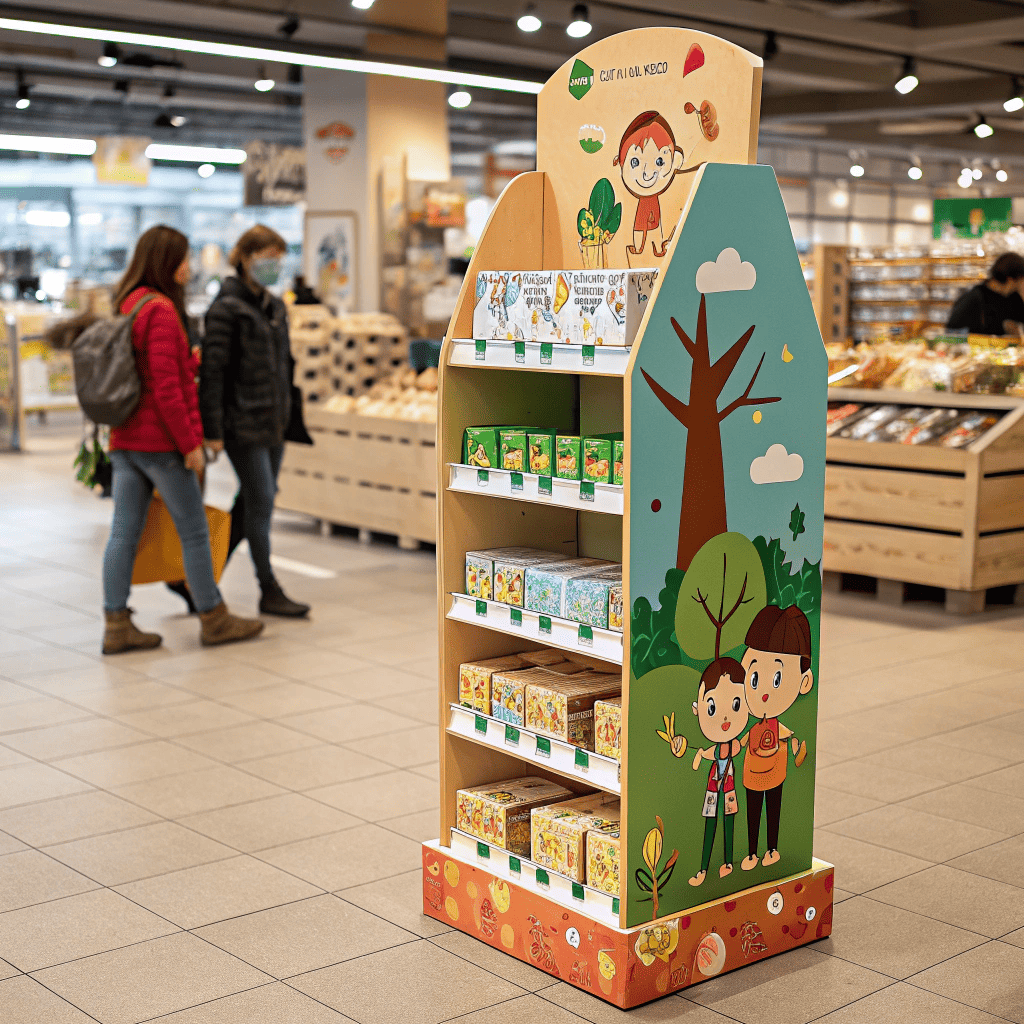
A Cardboard Displays is a lightweight, eco-friendly marketing tool designed to showcase products in a visually appealing way. Made from durable, high-quality cardboard, these displays are widely used in retail environments to promote products, enhance brand visibility, and drive sales. The customizable nature of cardboard displays makes them perfect for a variety of industries, from food and beverage to electronics and cosmetics.
Cardboard displays are commonly used in stores, trade shows, exhibitions, and other promotional settings. They can be designed in various shapes, sizes, and configurations, such as countertop displays, floor stands, or pallet displays, depending on the product and placement requirements.
What makes them particularly attractive is their customizability. You can add your branding elements, such as logos, colors, and messaging, to ensure your product stands out. With a combination of affordability, effectiveness, and versatility, cardboard displays are a great way to highlight products while remaining environmentally conscious.
In summary, a cardboard displays is a powerful marketing tool, tailored to suit your specific needs, ideal for improving product presentation and boosting brand awareness in any retail or promotional setting.
Chapter 2
Applications of Cardboard Displays
Custom cardboard displays are an incredibly versatile marketing tool used across various industries to promote products in retail and public spaces. Their unique ability to combine eye-catching designs with practicality makes them essential in areas like retail marketing, trade shows, product launches, and in-store promotions. Let’s explore how custom cardboard displays serve different industries and applications, highlighting their impact on visibility, customer engagement, and sales growth.
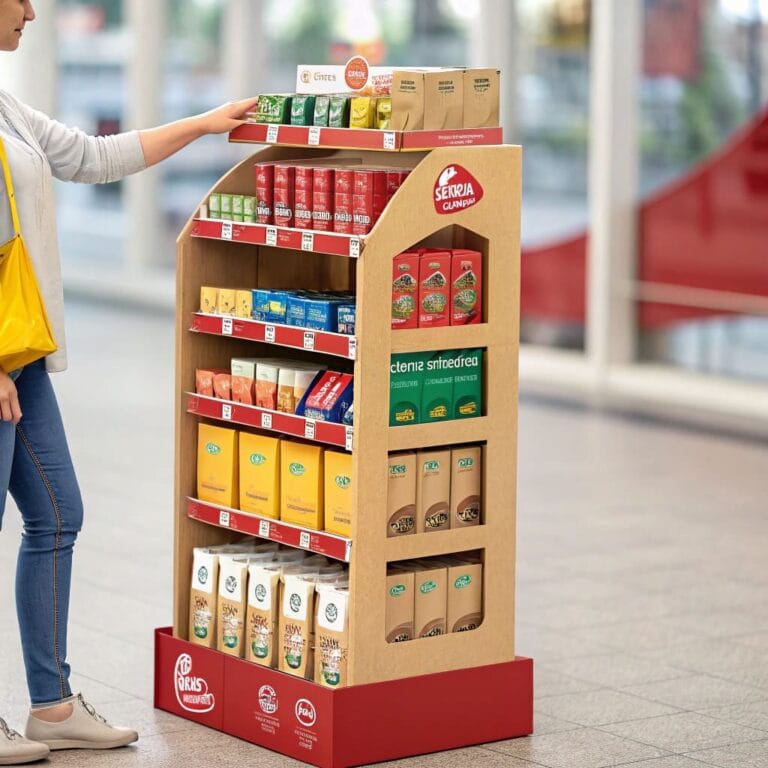
Retail Promotions: Used extensively in stores to showcase products such as cosmetics, electronics, toys, and more. These displays help grab customer attention and drive sales by presenting products in an attractive and organized manner.
Point-of-Purchase (POP) Displays: Ideal for placing near checkout counters or high-traffic areas, POP displays encourage impulse purchases by highlighting special offers or new arrivals.
Trade Shows and Exhibitions: At trade shows, competition for attention is fierce. Custom cardboard displays are a perfect solution for standing out in crowded exhibition halls. Their vibrant designs and customizable features allow you to create a memorable booth that attracts visitors and facilitates product interaction.
Promotional Displays: Perfect for marketing campaigns, cardboard displays can be used for product launches, special offers, or seasonal promotions, helping businesses stand out in competitive retail environments.
Event Displays: Whether for corporate events, conferences, or product demonstrations, custom cardboard displays provide a cost-effective and impactful way to present information or products to attendees.
Eco-Friendly Solutions: As sustainable materials, cardboard displays are increasingly used by businesses looking to reduce their environmental footprint while maintaining high-quality marketing materials.
Product Launches: When launching a new product, creating excitement and awareness is crucial. Custom cardboard displays are ideal for this purpose, as they can be tailored to highlight key product features and create an engaging presentation. These displays not only help to catch the attention of potential customers but also guide them toward making a purchase decision.
Point-of-Sale Displays: Custom point-of-sale (POS) displays are designed to capture customer attention right at the checkout counter. These displays are strategically placed to promote impulse buys and reinforce your brand message. Whether it’s a countertop display for a small accessory or a larger floor-standing unit for a more substantial product, these displays make the most of limited space.
Seasonal and Holiday Campaigns: Custom cardboard displays are ideal for seasonal campaigns, especially around holidays and special events. These displays can be tailored to fit seasonal themes, such as Christmas, Halloween, or summer promotions, providing the flexibility to adjust designs quickly and effectively for each campaign.
In-Store Branding: With a variety of design options, these displays can be integrated seamlessly into any store environment, whether you need standalone units or shelf displays. By combining functionality with creativity, custom displays help you create a cohesive and engaging shopping experience that resonates with customers and encourages repeat visits.
In conclusion, custom cardboard displays are a powerful tool for enhancing product visibility, driving customer engagement, and increasing sales. Tailored to fit your business needs, these displays offer a cost-effective, eco-friendly, and highly customizable way to showcase your products across multiple retail environments. Whether for a product launch, seasonal campaign, or in-store promotion, cardboard displays are the perfect solution for elevating your brand’s presence.
Chapter 3
Different Types of Cardboard Displays
Custom cardboard displays come in various shapes and designs to meet specific retail or promotional needs. Here’s a breakdown of the most common types:
Floor Displays: These are freestanding displays designed to be placed on the floor. They are often used for larger products or in high-traffic areas where they can attract attention from a distance.
Countertop Displays: Smaller, compact displays designed to sit on counters or tables. Ideal for showcasing smaller items like cosmetics, gadgets, or impulse-buy products.
Dump Bins: These displays are open containers often used to hold products like snacks, toys, or promotional items. They are designed for bulk products and are great for high-volume sales.
Shelf Displays: Designed to fit within shelving units, these displays help organize products and maximize shelf space while drawing attention to specific items.
Hanging Displays: Suspended from ceilings or walls, these displays are ideal for showcasing lightweight products or marketing materials, giving your display a unique angle.
Endcap Displays: Positioned at the ends of aisles, endcap displays are strategically placed to capture customer attention as they walk by, often featuring special offers or new products.
Each display type is designed to enhance product presentation and improve customer engagement, allowing businesses to choose the right format based on the space and purpose of the display.

Floor Displays
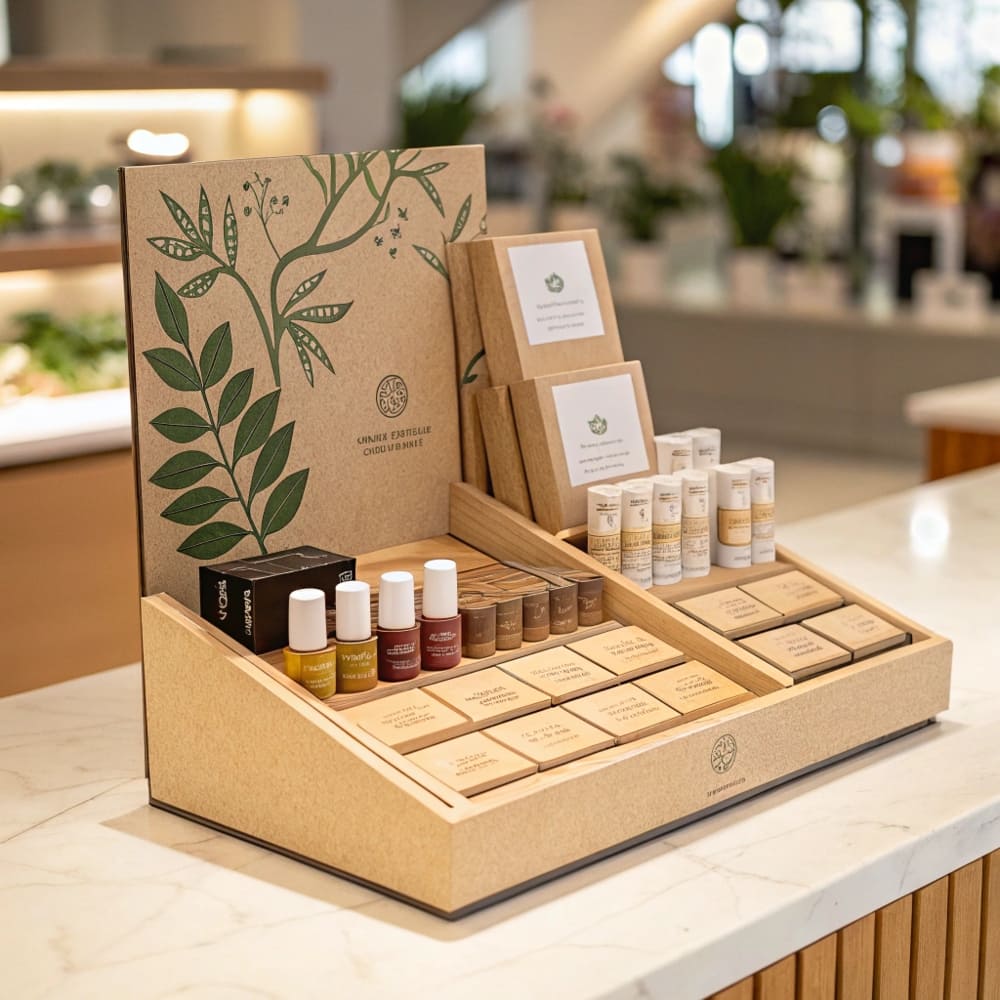
Countertop Displays
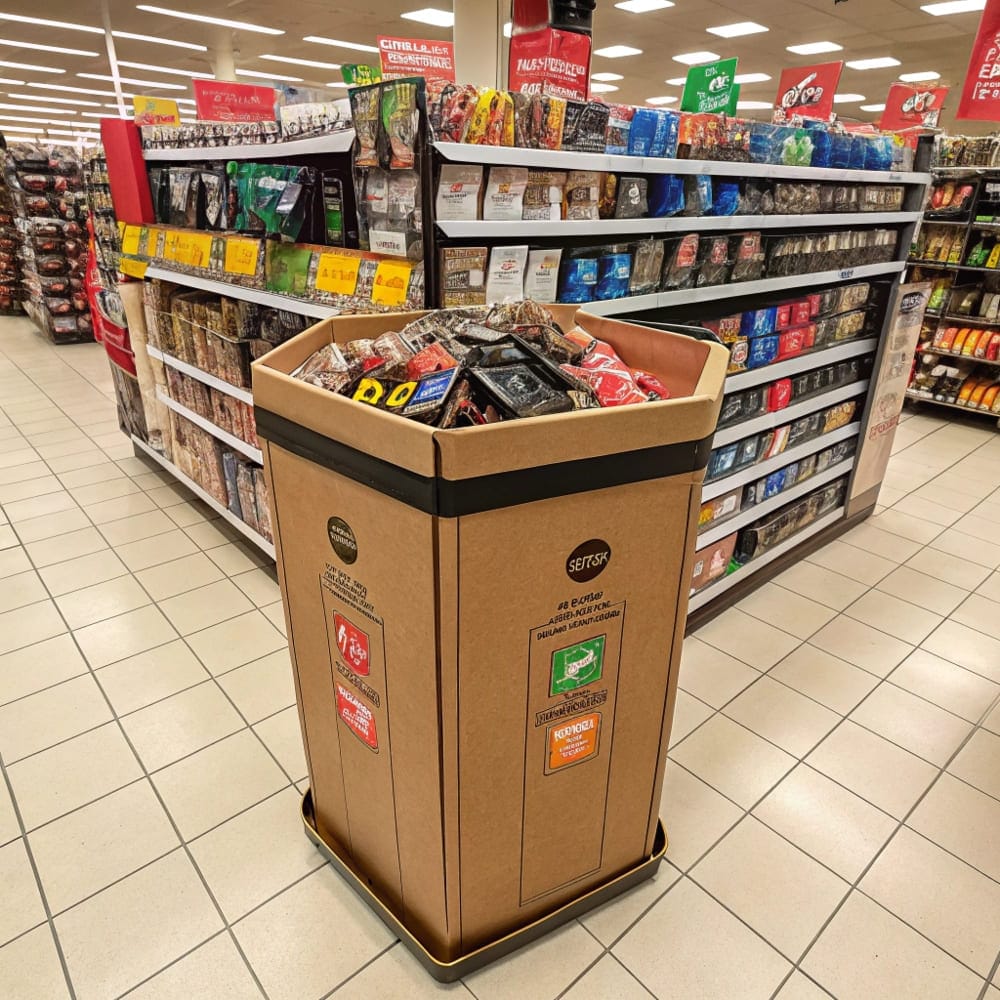
Dump Bins
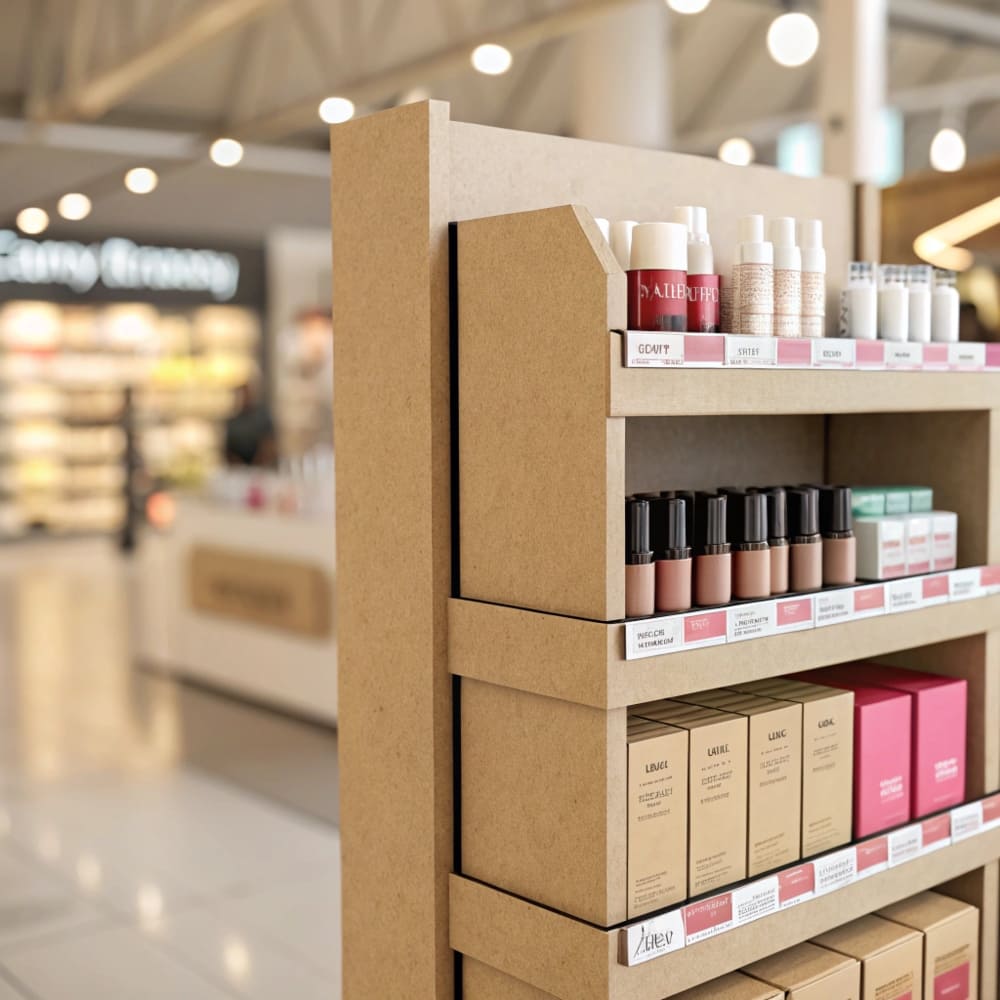
Shelf Displays

Hanging Displays

Endcap Displays
Chapter 4
The Evolution of Cardboard Displays: A Historical Timeline
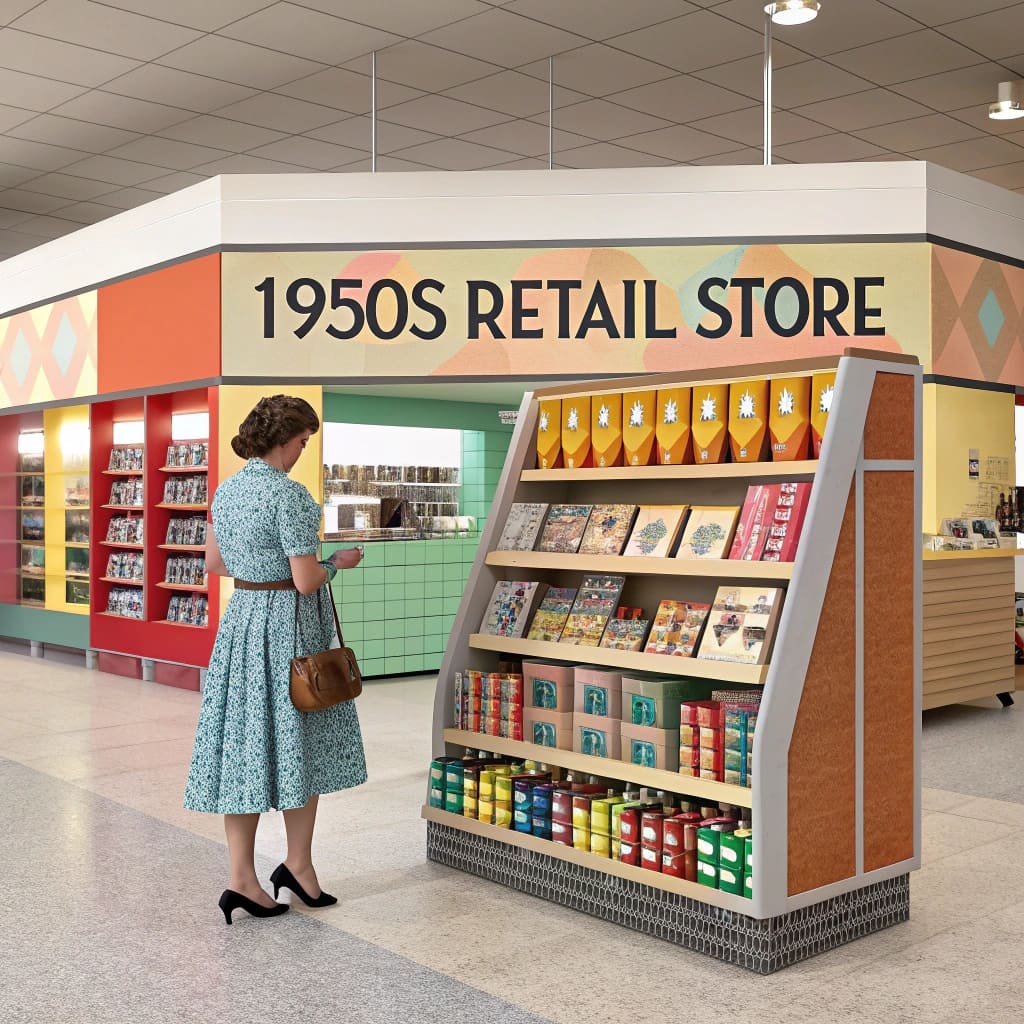
- Early 1900s – The first cardboard displays are introduced, originally used for simple retail advertising.
- 1930s – Cardboard displays become more common in stores, with brands seeking better ways to showcase products in eye-catching ways.
- 1950s – Cardboard displays structures evolve, with more durable, lightweight designs for better product presentation.
- 1960s – Printed cardboard displays begin to feature more vibrant designs, with brands increasingly using them for point-of-sale promotions.
- 1980s – The use of cardboard displays expands worldwide, with custom designs tailored to specific product types and target audiences.
- 1990s – Digital printing technology emerges, allowing for high-quality graphics and more intricate designs on cardboard displays.
- 2000s – The rise of e-commerce and online shopping further fuels demand for innovative, portable, and eco-friendly cardboard displays for retail and exhibitions.
- 2010s – Sustainable and eco-conscious materials become a key focus in cardboard displays production, meeting modern demands for green marketing solutions.
- 2020s – Advancements in 3D design and prototyping lead to highly customizable and structurally sound cardboard displays, with increasing use in global retail chains and exhibitions.
- Today – Cardboard displays remain a staple in retail environments, offering cost-effective, customizable, and sustainable merchandising solutions.
Chapter 5
Characteristics of Cardboard Displays
- Cost-Effective Solution: Cardboard displays offer an affordable way to showcase your products without compromising on visibility or impact, making them perfect for businesses looking to enhance their branding on a budget.
- Customizable Designs: Tailor every detail of your display, from dimensions to graphics, ensuring your brand message is presented exactly how you envision it. Perfect for creating a unique in-store experience.
- Eco-Friendly Material: Made from sustainable materials, cardboard displays are a green choice for businesses aiming to reduce their environmental footprint without sacrificing quality.
- Lightweight and Portable: Easy to transport and set up, cardboard displays are an ideal choice for events, pop-up stores, and trade shows, offering flexibility for on-the-go promotional needs.
- Sturdy and Reliable: Despite being lightweight, cardboard displays are engineered to be durable and hold up under various conditions, providing a reliable solution for your display needs.
- Versatile for Various Industries: Whether you’re in retail, exhibitions, or even promotional events, cardboard displays can be adapted for various product types, offering a creative solution to showcase anything from cosmetics to electronics.
- Simple Assembly: No need for complex tools or labor—cardboard displays can be assembled quickly and easily, saving you time and effort.
- Eye-Catching and Attention-Grabbing: With vibrant printing capabilities, your cardboard displays can feature bold graphics that catch customers’ eyes, ensuring your products stand out in a crowded market.
- Space-Saving: Cardboard displays can be easily broken down and stored, making them an efficient option for businesses that require flexible storage solutions without taking up too much space.
- Cost-Effective Shipping: The lightweight nature of cardboard reduces shipping costs, making these displays a practical choice for businesses aiming to optimize logistics and lower overall expenses.
- High-Quality Printing: Supports vibrant, high-resolution printing to attract customer attention and enhance brand recognition.

Chapter 6
Understanding Cardboard Displays Products
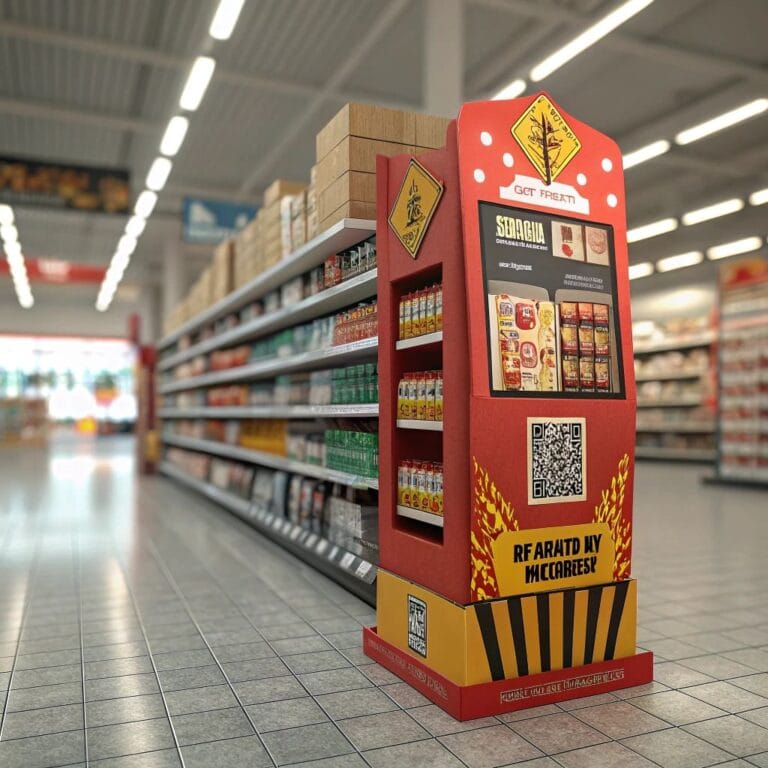
Cardboard displays products are versatile, eco-friendly promotional tools made from high-quality, sturdy cardboard. Due to their lightweight, customizable nature, and durability, they are widely used for product showcasing in various industries. Some common forms of cardboard displays include:
- Counter Displays: Perfect for retail spaces, showcasing small products at checkout areas.
- Floor Displays: Tall and eye-catching, ideal for showcasing products in high-traffic areas of stores.
- Endcap Displays: Positioned at the end of aisles to attract customers' attention and drive sales.
- Custom Displays: Tailored to fit specific branding needs and product types, ensuring a unique look.
Multiple industries benefit from using cardboard displays:
- Retail: Retailers use cardboard displays to enhance in-store product visibility and drive customer purchases.
- Marketing & Promotions: Brands leverage customized displays for limited-time offers, special events, and new product launches.
- Trade Shows: Easy to transport and assemble, perfect for creating impactful presentations at trade shows and exhibitions.
- Consumer Goods: Manufacturers of packaged goods use cardboard displays to enhance product appeal and streamline retail presentations.
In essence, the adaptability, cost-effectiveness, and environmental friendliness of cardboard displays make them an invaluable tool for enhancing brand visibility and promoting products across various sectors. Whether it's a one-time campaign or an ongoing retail setup, these displays offer a balance of aesthetics, functionality, and sustainability.
Chapter 7
How Do Cardboard Displays Enhance Product Promotion?
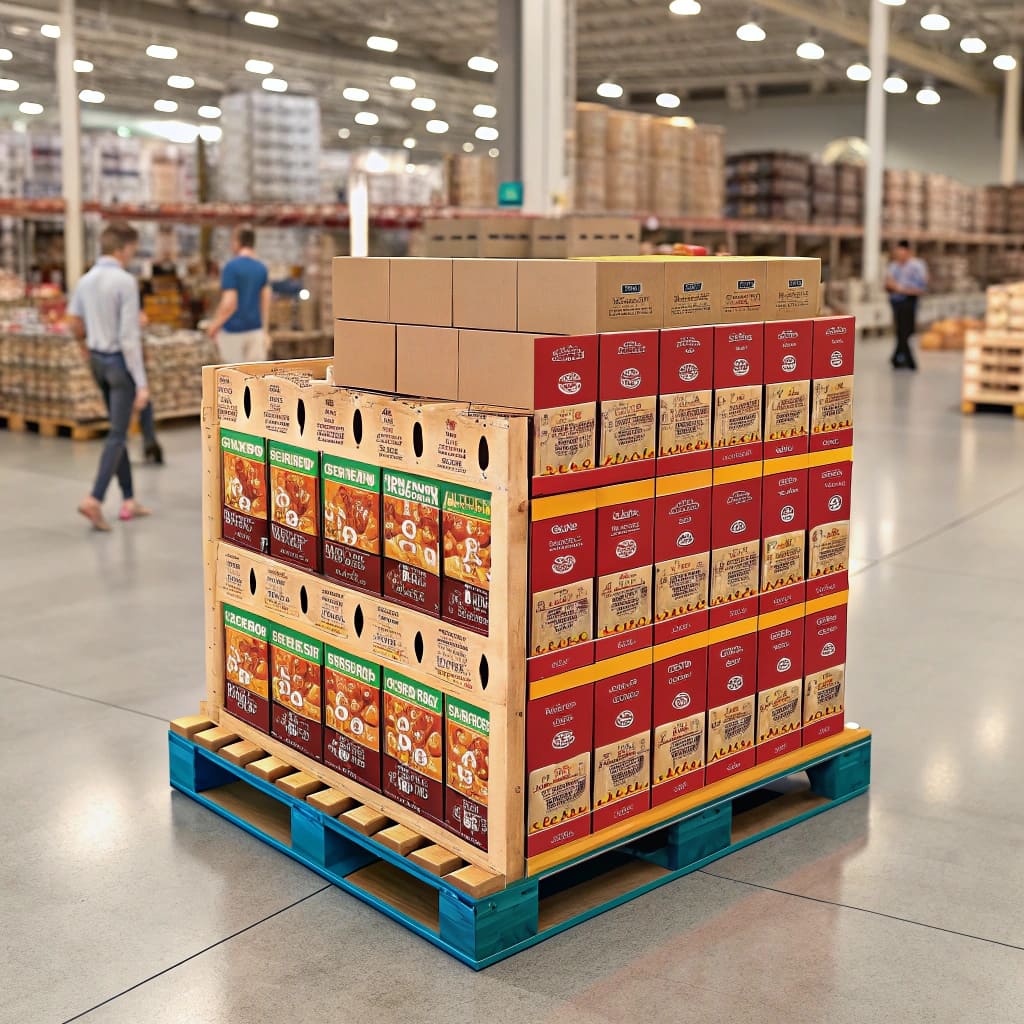
Custom cardboard displays work by strategically positioning products in high-visibility areas, drawing customer attention, and boosting engagement. These displays serve as marketing tools that not only showcase products but also communicate your brand’s identity and values in an impactful way.
When placed in retail environments or at trade shows, the displays act as interactive touchpoints that encourage product interaction and increase consumer interest. The creative and functional design of each display ensures that your products stand out, leading to higher foot traffic and potential sales.
By providing an organized and visually appealing way to showcase your offerings, custom cardboard displays effectively enhance brand visibility, reduce clutter, and encourage more consumer interaction, making them a key component in any successful product promotion strategy.
Chapter 8
Comparing Cardboard Displays vs. Traditional Display Methods
When choosing between custom cardboard displays and traditional display methods like permanent fixtures or large-scale metal displays, it's crucial to consider the unique needs of your business, budget, and promotional objectives. Each type of display offers its own set of benefits and drawbacks depending on factors like the size of your campaign, design complexity, and long-term usage.
In general, custom cardboard displays are ideal for short-term, high-impact promotions, especially in retail or event environments where flexibility and ease of use are key. Traditional displays, such as permanent metal or wooden structures, are better suited for long-term installations but often come at a higher cost and can be less adaptable.
The table below provides a detailed comparison between custom cardboard displays and traditional display methods:
| Type | Advantages | Disadvantages |
|---|---|---|
| Cardboard Displays | 1. Highly customizable – Tailor-made with branding, colors, and unique designs. | 1. Limited durability – Best for short-term or seasonal promotions. |
| 2. Lightweight & easy to transport – Saves on shipping costs and allows for quick assembly. | 2. Not ideal for heavy products – May not support excessive weight without reinforcements. | |
| 3. Eco-friendly – Made from recyclable materials, supporting sustainability efforts. | 3. Shorter lifespan – Designed for temporary displays rather than long-term use. | |
| 4. Cost-effective – Lower production costs compared to traditional materials. | ||
| 5. Easy setup & disposal – Can be quickly installed and recycled after use. | ||
| Traditional Displays | 1. Greater durability – Metal, wood, or plastic fixtures last for years. | 1. Higher costs – More expensive to manufacture and transport. |
| 2. Stronger weight capacity – Can hold heavier products without structural concerns. | 2. Limited design flexibility – Harder to customize compared to cardboard displays. | |
| 3. Long-term investment – Suitable for permanent retail fixtures. | 3. More complex setup – Requires professional installation in many cases. | |
| 4. Professional look – Provides a premium appearance for high-end retail environments. | 4. Not eco-friendly – Often made from non-recyclable materials, leading to waste. |
Key Considerations for Choosing the Right Display Type
For seasonal promotions, product launches, or short-term retail campaigns, custom cardboard displays offer a cost-effective, eye-catching, and eco-friendly solution. They allow for maximum brand visibility while keeping production and shipping costs low.
However, for long-term retail fixtures that require high durability and weight capacity, traditional displays may be a better investment, despite their higher cost and lower design flexibility.
Ultimately, the best choice depends on your budget, product type, marketing strategy, and sustainability goals.
→ Back to Table of Contents
Chapter 9
Cardboard Displays Classifications
Cardboard displays are popular in retail marketing due to their versatility, eco-friendliness, and cost-effectiveness. Available in various forms based on design, size, and application, each type of cardboard displays is tailored to meet specific retail and promotional needs. Below is a breakdown of the most common classifications:
| Display Type | Description | Applications |
|---|---|---|
| Countertop Displays | Small, compact displays designed to sit on retail counters. Typically lightweight and easy to assemble. Can be printed with high-quality graphics. | Ideal for impulse purchases, small products, or promotional items placed near checkout counters in stores. |
| Floor Displays | Larger displays designed to stand on the retail floor. Can hold a variety of products, from small items to larger boxes. Often freestanding with sturdy bases. | Perfect for showcasing a wide range of products in aisles, retail floor spaces, or as part of a special promotional campaign. |
| Pallet Displays | Large-scale displays that use pallets as their base. Often used for bulkier or more extensive product displays. Customizable for high-traffic areas. | Commonly used for bulk products, seasonal promotions, or special offers in larger retail spaces and supermarkets. |
| Hanging Displays | Lightweight cardboard displays designed to hang from ceilings or fixtures. Often used for high-visibility promotional purposes. | Ideal for attention-grabbing displays, such as seasonal promotions, or for creating vertical product presentations in stores. |
As a trusted supplier of custom cardboard displays, Popdisplay offers a full range of display solutions tailored to your specific marketing needs. Whether you need countertop, floor, pallet, or hanging displays, we ensure that each product is designed to deliver the maximum impact and durability for your promotional campaigns.
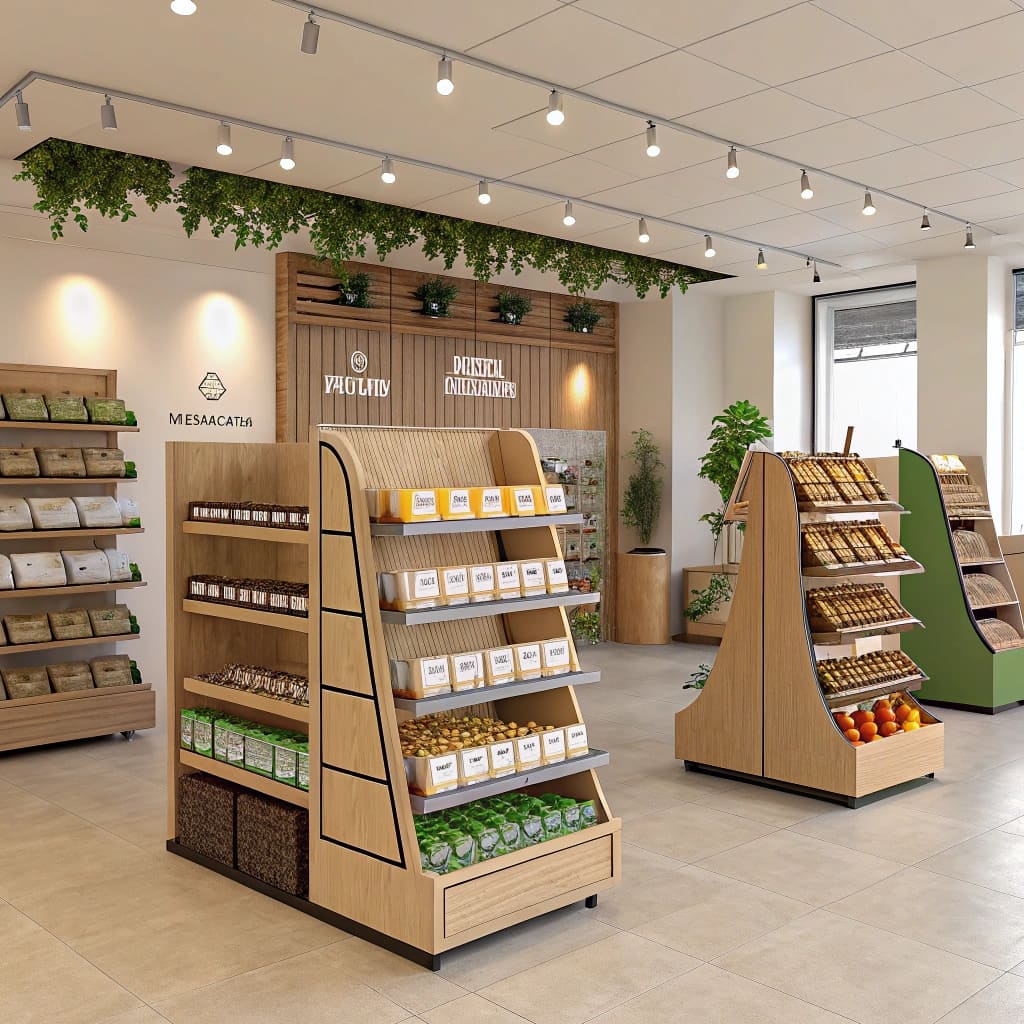
Chapter 10
How Does a Cardboard Displays Work?
A cardboard displays works as a highly effective retail marketing tool designed to attract customer attention, increase product visibility, and boost sales. These displays are strategically placed in retail stores, supermarkets, and promotional areas to highlight specific products or brands.
1. Attracting Customer Attention
Cardboard displays use vibrant colors, custom graphics, and strategic placement to catch the eye of shoppers. With high-quality printing and unique shapes, they differentiate products from standard shelf items, increasing impulse purchases.
2. Providing a Functional Display Space
A well-designed display holds and organizes products efficiently, ensuring easy access for customers. It consists of:
- Shelves or Trays – Securely hold products, preventing movement or damage.
- Side Panels & Backboards – Provide structural support and branding space.
- Header Boards – Feature promotional messages to enhance product appeal.
3. Ensuring Easy Assembly & Placement
Most cardboard displays are designed for quick, tool-free assembly, making them convenient for retailers.
- Flat-pack shipping reduces logistics costs.
- Pre-folded creases & locking tabs allow easy setup.
- Lightweight design enables repositioning in high-traffic areas.
4. Enhancing Brand Marketing
Custom branding elements like logos, slogans, and product details reinforce brand identity. Retailers and brands use displays for:
- New product launches
- Seasonal promotions
- Limited-time discounts
5. Supporting Sustainability & Cost Efficiency
Unlike plastic or metal fixtures, cardboard displays are eco-friendly and cost-effective:
- Made from recyclable materials to support sustainability.
- Lightweight & disposable for easy post-campaign removal.
- Affordable production costs compared to permanent store fixtures.
Conclusion
By combining visual appeal, functionality, and easy assembly, cardboard displays help brands maximize retail exposure and increase sales. Their versatility makes them a preferred choice for point-of-purchase marketing, ensuring a high-impact in-store presence.
At Popdisplay, we specialize in custom cardboard displays designed for maximum visibility, durability, and sustainability. Whether for floor displays, pallet displays, or countertop units, our solutions ensure effective product presentation in any retail setting.
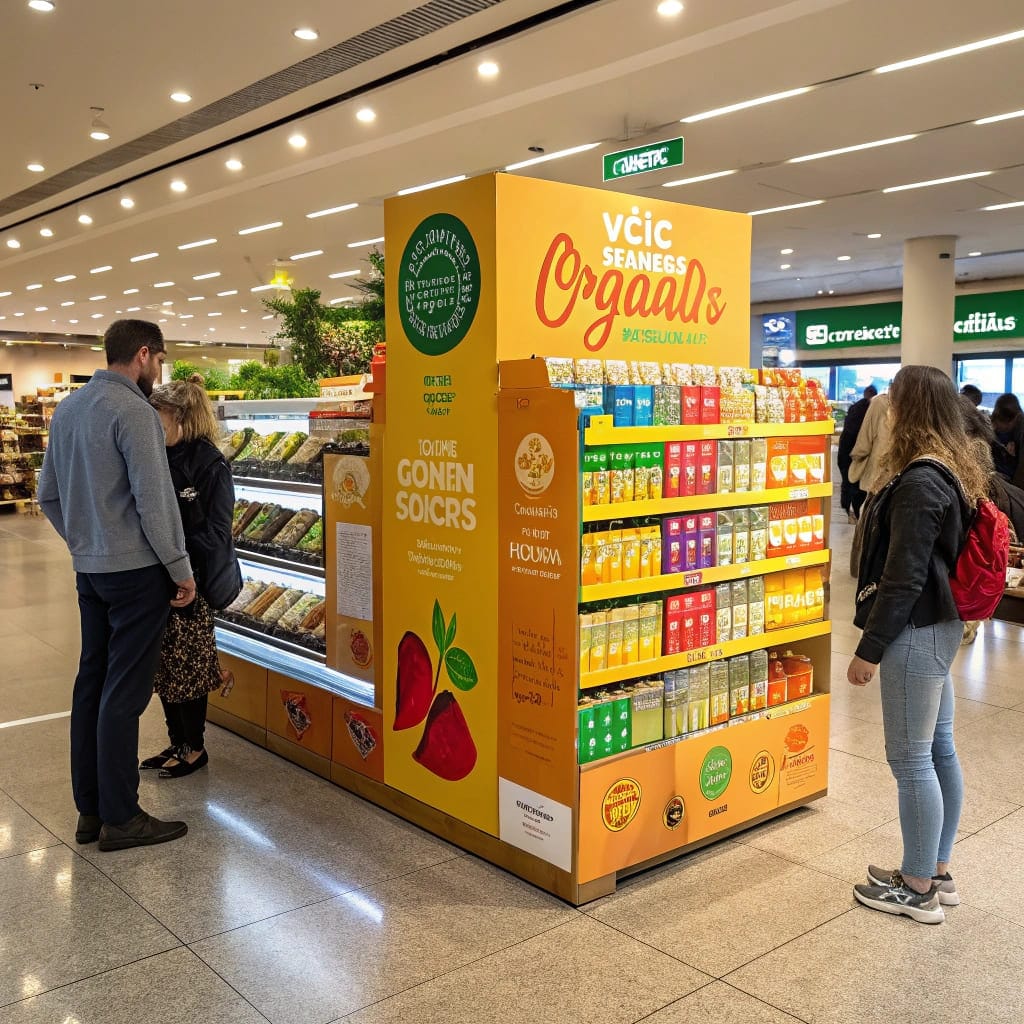
Part 1
8 Deadly Sins of Sourcing Cardboard Displays from China (And How Top 5% Buyers Avoid Them)
 Free download
Free download
1. Production Quality Control
Ensuring the quality of your cardboard displays is critical. Choose suppliers with international certifications (e.g., ISO, BSCI) and request samples for testing before committing to large orders. Quality control processes before purchasing can help avoid issues like rework or customer complaints due to subpar products.
2. Supplier Selection
When selecting suppliers, focus on their reputation and experience. Platforms like Alibaba and Made-in-China allow you to review supplier histories and customer feedback. Compare multiple vendors to avoid working with unfamiliar or unreliable manufacturers.
3. Price Negotiation
The price of cardboard displays depends on factors such as design, material, and manufacturing process. Clearly communicate your requirements and negotiate prices based on volume or long-term partnerships. Be aware of market pricing to avoid hidden costs from unusually low quotes.
4. Minimum Order Quantity (MOQ)
MOQs vary between suppliers, with customized products typically requiring higher minimums. If your order volume is small, consider negotiating with suppliers to lower the MOQ or explore group purchasing options with other buyers to meet MOQ thresholds.
5. Lead Time and Shipping
Know the supplier's production and delivery lead times to avoid project delays. Ensure your shipping method aligns with both budget and timing needs. Opt for cost-effective shipping options (sea or air freight) to control expenses while meeting deadlines.
6. Custom Design and Production
Suppliers often provide design assistance for custom cardboard displays. Share a detailed design plan and confirm with the supplier before production to prevent any errors. Choose materials that offer both durability and reusability for longer-lasting displays.
7. Tariffs and Import Process
Familiarize yourself with the tariff policies and import procedures when sourcing from China to avoid unexpected costs or delays. Work with a logistics partner to ensure smooth customs clearance and have the necessary documentation ready.
8. Eco-friendly Materials and Sustainability
Sustainability is increasingly important in product sourcing. Choose materials with eco-certifications (e.g., FSC) to reduce environmental impact and improve your brand image. Eco-friendly displays also meet the growing consumer demand for green products.
Part 2
Overview of Our Cardboard Displays Production Capabilities
This table provides a concise and organized view of our Cardboard Displays production specifications.
| Feature | Specification |
|---|---|
| Standard | Custom designs tailored to client needs, high-quality cardboard, eco-friendly materials |
| Grade | Premium, Heavy-duty, Eco-friendly, Luxury, Water-resistant, Custom |
| Display Type | Counter displays, Floor displays, Endcap displays, Shelf displays, Custom displays |
| Size Options | Customizable dimensions: Width: 100mm to 3000mm, Height: 100mm to 2500mm, Depth: 50mm to 1500mm |
| Design Flexibility | Fully customizable graphics, branding, and dimensions to suit product type and marketing strategy |
| Production Method | Die-cutting, Folding, Gluing, Printing (Offset, Digital, or Screen) |
| Finish Options | Matte, Glossy, UV coating, Lamination, Embossing, Spot varnishing |
| Load Capacity | Light-duty to heavy-duty options based on material strength and display requirements |
| Customization | Fully customizable designs with options for print artwork, structural design, and brand colors |
| Delivery Time | Fast turnaround for standard designs, up to 30 days for custom displays (depending on complexity) |
| Surface Finish | Smooth, textured, laminated, or custom finishes for an upscale look |
| Applications | Retail, Trade shows, Point of sale, Marketing promotions, Product launches, Event displays, Brand campaigns |
This guide provides an overview of our Cardboard Displays production capabilities, highlighting the wide range of design, size, and customization options available for businesses in various sectors. Whether you’re looking for a simple countertop display or a large, high-impact floor display, we offer a solution tailored to your needs.
Part 3
How to Choose a Reliable Cardboard Displays Supplier?
When selecting a supplier for your cardboard displays, there are several essential factors to consider to ensure a smooth and successful partnership:
- Industry Expertise: Look for suppliers with a proven history and extensive experience in producing high-quality cardboard displays. A well-established supplier is likely to offer more innovative designs and better product durability.
- Certifications and Standards: Ensure that the supplier follows industry standards and quality certifications. This could include environmental certifications (e.g., FSC for sustainability) and product quality assurances to guarantee reliable and safe products for your retail space.
- Customer Reviews and Testimonials: Read past customer reviews and testimonials to get a sense of the supplier's reliability, the quality of their displays, and their customer service level. Positive feedback from other businesses can give you confidence in their ability to deliver quality products.
- Product Variety: A supplier with a broad range of display designs, sizes, and materials demonstrates their ability to meet diverse business needs. It also gives you flexibility to choose the best option for your product promotion.
- Clear Pricing: A trustworthy supplier should offer clear and transparent pricing, with no hidden charges or unexpected costs. Transparent pricing ensures you get the best value for your investment while helping you stay within budget.
- Design and Customization Support: A top-tier supplier will offer customization options, from design adjustments to branding opportunities, ensuring that the display aligns perfectly with your brand’s image.
- Delivery and Shipping: Consider the supplier’s ability to meet delivery deadlines and manage logistics efficiently. Timely delivery is crucial for your marketing campaigns, so make sure they can meet your schedules.
- Communication: Good communication is key to a successful partnership. Choose a supplier who is responsive and proactive in addressing your questions, concerns, and project-specific needs.
By keeping these factors in mind and conducting thorough research, you’ll be able to find a reliable cardboard displays supplier that can meet your business requirements and support your marketing efforts.
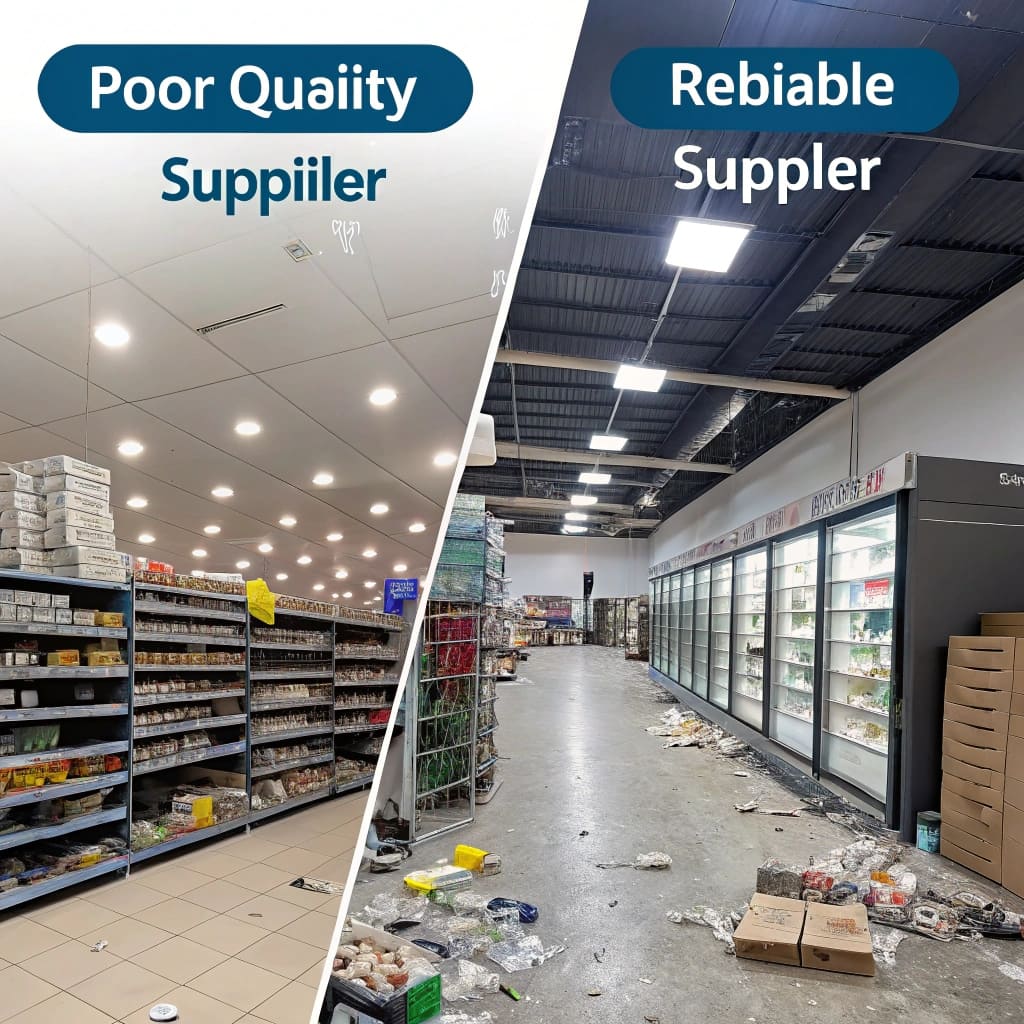
Part 4
Our Supply Capacity of Cardboard Displays
| Specification | Details |
|---|---|
| Customization | Fully tailored size, structure, and branding to match product and retail requirements. |
| Manufacturing Standard | Custom design specifications tailored to retail, promotional, and exhibition display standards. |
| Material Options | ▲ Corrugated cardboard (E-flute, B-flute, C-flute, etc.) ▲ Eco-friendly recyclable materials ▲ Premium Recycled Paperboard ▲ High-Durability Paper with Custom Finishing Options |
| Display Size | Custom sizes, ranging from small countertop displays (as small as 6″) to large floor-standing units (up to 72″) |
| Printing Methods | ▲ CMYK Offset Printing ▲ Flexographic Printing ▲ UV Printing ▲ Spot Colors & Gloss/Matt Lamination |
| Structure Types | Floor Displays, Counter Displays, Pallet Displays, Dump Bins, Hook Displays, Tiered Shelves |
| Load Capacity | Lightweight (≤5kg) / Medium (5-15kg) / Heavy-duty (15kg+) |
| Technical | Precision die-cutting, high-quality printing, CNC machining for complex shapes and sizes |
| Condition | Flat-packed, easy-to-assemble displays, ready-to-use for events or retail environments |
| Surface Finishing | Glossy/Matt Lamination, Spot UV, Embossing, Hot Stamping, Varnishing |
| Surface Treatment | Matte, glossy, or laminated finishes for enhanced durability, visual appeal, and protection against wear and tear |
| Assembly | Pre-assembled or flat-packed with easy setup design |
| Shape | Custom shapes including free-standing, countertop, shelf, hanging displays, and tray displays for specific needs |
| Usage Scenarios | Supermarkets, Retail Stores, Trade Shows, Pharmacies, Electronics Shops, Shopping Malls |
| Application | Retail marketing, point-of-sale displays, trade shows, brand promotions, product exhibitions, and product showcases |
→ Back to Table of Contents
Part 5
Cardboard Displays Quality Standards
At Popdisplay, we follow rigorous quality standards to ensure that each cardboard displays meets your needs for durability, visual appeal, and functionality. Different regions have their own established standards, with the USA and Europe being key contributors. Our production processes are aligned with global best practices, ensuring that every display not only meets your expectations but exceeds them.
Our quality standards are guided by:
- ISO 9001:2015 – Quality management systems to ensure consistent quality in all our processes.
- FSC Certification – Ensuring sustainable sourcing of the materials used in our cardboard displays.
- SGS Testing – To ensure that the displays meet environmental and material safety standards.
- ASTM D1974
China’s quality standards include:
- GB/T 4857.4-2002
- GB/T 4894-2002
Industry Standards for Cardboard Displays
Common international quality benchmarks include:
- ISO 9001: Quality management system ensuring consistent product quality.
- ISO 14001: Environmental standards for sustainable material sourcing.
- FSC Certification: Ensures the cardboard is sourced from responsibly managed forests.
- ASTM D1974
Key Material and Strength Standards:
- ECT (Edge Crush Test): Measures the stacking strength of corrugated cardboard.
- Bursting Strength Test: Ensures resistance to punctures and pressure.
- Printing Quality Standards: Guarantees high-resolution graphics and color accuracy.
Standard Material Specifications Based on Thickness and Strength
| Thickness (mm) | Material Type | Recommended Use |
|---|---|---|
| 1.5 – 3.0 | Single-Wall Corrugated | Lightweight displays for indoor promotions |
| 3.5 – 5.0 | Double-Wall Corrugated | Medium-duty retail product displays |
| 6.0+ | Triple-Wall Corrugated | Heavy-duty displays for bulkier products |
To give you a better understanding, let’s break down these standards according to display size, material grade, and the corresponding standard references:
| Display Size (mm) | Material Grade | Standard References |
|---|---|---|
| 500 x 300 to 1500 x 1000 | Premium Corrugated Cardboard | ISO 9001, FSC, ASTM D1974 |
| – | Heavy-Duty Double Wall | GB/T 4857.4-2002, ISO 9001 |
| – | Recycled Paper Grade | GB/T 4894-2002, ASTM D1974, FSC Certification |
| – | Single Wall Corrugated | ISO 9001, ASTM D1974, FSC |
| – | High-Strength Cartonboard | ISO 9001, ASTM D1974, FSC |
These standards ensure that our cardboard displays not only maintain their structural integrity under varying conditions but also showcase your products with high-quality print finishes, whether for retail, trade shows, or promotional events. With the right materials and processes in place, your display will perform consistently and make a lasting impression on your audience.
Part 6
Our Cardboard Displays Specifications
Custom cardboard displays are crafted with precision to meet the specific needs of each retail environment. The materials, design, and structural elements are selected to ensure durability, functionality, and visual appeal. Below is a table outlining the key specifications for custom cardboard displays:
| Category | Details |
|---|---|
| Standard | Custom-designed to meet retail, supermarket, and promotional display requirements. |
| Material Options | – Corrugated Cardboard (E-flute, B-flute, C-flute) – Double-Wall & Triple-Wall Cardboard – Eco-Friendly, Recyclable Materials |
| Display Size | Custom sizes available, ranging from small countertop units to large floor-standing displays. |
| Weight Capacity | – Light Duty: Up to 5kg per shelf – Medium Duty: 5-15kg per shelf – Heavy Duty: 15-30kg per shelf |
| Technical Process | Die-cutting, Laminating, Printing (Offset, Flexo, Digital), Gluing, UV Coating, Embossing. |
| Surface Treatment | – Glossy or Matte Lamination – Spot UV – Hot Stamping – Embossing – Water-based Coating |
| Main Display Types | – Floor Displays – Countertop Displays – Pallet Displays – Dump Bins – Hanging Displays |
| Display Styles | – Free-standing Displays – Shelved Displays – Hooked Displays – Foldable & Easy-Assembly Designs |
| Printing | Full-color, high-resolution printing options available |
| Customization Options | Custom shapes, logos, graphics, and branding elements |
| Design Features | Sturdy structure, easy assembly, and lightweight design |
| Assembly | Easy setup with no tools required; simple interlocking design |
| Packaging | Flat-packed or pre-assembled for efficient shipping and storage |
| Design Life | Durable for short-term to long-term use, typically 1-3 years for seasonal or promotional use |
| Key Features | – Custom Branding & Full-Color Printing – Sturdy & Lightweight Structure – Space-Saving & Cost-Effective – 100% Recyclable & Sustainable Materials |
| Application | Ideal for use in retail stores, supermarkets, trade shows, convenience stores, and promotional campaigns to enhance product visibility and sales. |
At Popdisplay, we specialize in custom cardboard displays solutions that are durable, visually striking, and easy to assemble. Whether you need countertop, floor-standing, or pallet displays, we ensure high-quality displays tailored to your brand and marketing goals.
Part 7
Grades of Cardboard Displays
Cardboard displays vary in material strength, durability, and intended applications. Choosing the right grade ensures optimal product support, longevity, and branding impact. Below is a detailed breakdown of the most common cardboard displays grades:
| Grade | Description | Key Features | Durability | Primary Uses | Strengths | Applications |
|---|---|---|---|---|---|---|
| Single-Wall (E-Flute, B-Flute, C-Flute) | Lightweight and cost-effective, suitable for short-term use. | Thin profile, smooth surface, easy to print on. | Low | Temporary promotions, light products | Cost-effective, easy to assemble, great for branding. | Countertop displays, small product promotions. |
| Double-Wall (BC-Flute, EB-Flute) | Increased durability with better load-bearing capacity. | Stronger structure, better shock absorption. | Medium | Mid-weight retail products, extended promotions | Enhanced strength, more stable than single-wall. | Floor-standing displays, medium-weight products. |
| Triple-Wall (AAA-Flute, BAA-Flute) | Heavy-duty, offering maximum strength and stability. | Maximum durability, high weight resistance. | High | Heavy-duty retail, warehouse displays, bulk sales | Superior load-bearing, long-lasting support. | Pallet displays, bulk promotions, and high-weight products. |
This table helps you identify the best cardboard displays grade based on your product type, retail setting, and durability needs. At Popdisplay, we offer custom, high-quality cardboard displays solutions designed for maximum impact, strength, and product visibility.
Part 8
Quality Assurance for Custom Cardboard Displays
At Popdisplay, we are committed to delivering high-quality custom cardboard displays that meet and exceed your expectations. To ensure top-notch performance and durability, each display goes through a stringent quality control process. Our Quality Assurance Team conducts a series of tests to assess the integrity, design accuracy, and material durability of every display before it reaches you. Only after passing these rigorous checks are the displays approved for shipment. This thorough process reflects our dedication to providing reliable and superior products that align with your retail and promotional needs.
Our quality assurance process includes the following key testing parameters:
| Test Items | Test Conditions | Qualification |
|---|---|---|
| Material Strength | Compression and load test | No deformation or bending |
| Print Quality | Visual inspection and color consistency check | No color inconsistencies |
| Structural Integrity | Weight test and load-bearing test | No collapsing or warping |
| Coating & Design Accuracy | 3D rendering comparison with final product | 100% design accuracy |
| Surface Finish | Gloss/matte lamination durability test | No peeling or bubbling |
| Durability Under Stress | Exposure to humidity and temperature variations | No warping or fading |
| Moisture Resistance | 48-hour humidity exposure test | No warping or weakening |
| Eco-Friendliness | Recyclability test | Meets eco-friendly standards |
| Customization Precision | Test assembly and disassembly process | Quick and easy setup |
| Durability for Long-Term Use | Stability test under extended display conditions | Minimum 6 months of use without damage |
| Transport Durability | Vibration and impact test in simulated transit | No major damage upon delivery |
Through these stringent tests, we ensure that our custom cardboard displays are durable, functional, and aesthetically pleasing. Each display is designed to effectively showcase your products and enhance your brand’s presence while maintaining its integrity in diverse retail environments.
→ Back to Table of Contents
Part 9
Key Considerations for Choosing a Cardboard Displays
When selecting a cardboard displays for your retail or promotional needs, it's essential to evaluate several factors to ensure you choose a solution that best meets your goals:
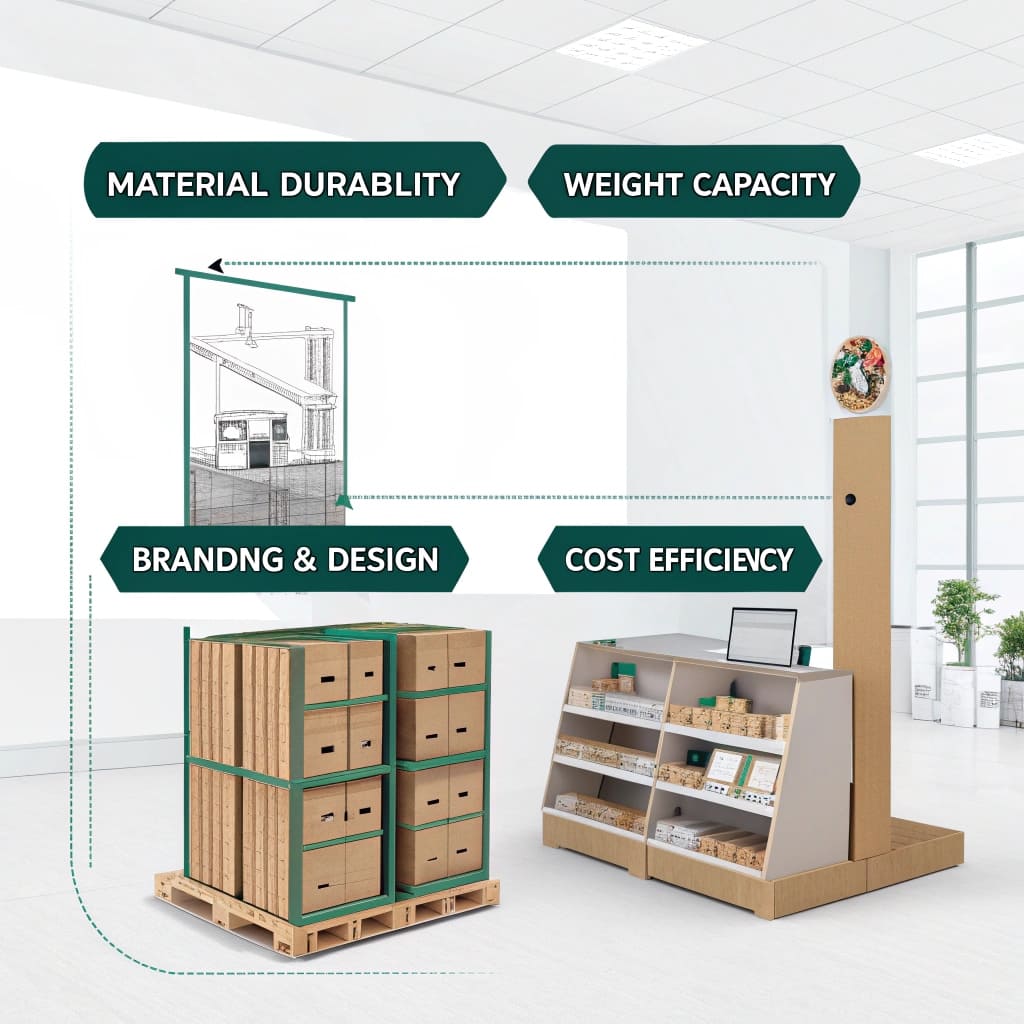
- Display Requirements: Begin by defining your display needs, including size, weight capacity, and the specific products you want to showcase. This will help you choose the most appropriate cardboard displays that highlights your products effectively and suits your space.
- Customization Options: Consider how much customization you require, from the display's structure and dimensions to the design and branding. A well-customized display can reinforce your brand's identity and make your products stand out.
- Design and Durability: Evaluate the quality of the display's design and materials. Ensure that the cardboard is strong enough to handle the weight of your products and withstand handling in various retail environments. A well-designed display will also be eye-catching and draw customers' attention.
- Manufacturer Reputation: Partner with a reliable supplier known for high-quality, durable displays. A trustworthy manufacturer should offer strong customer service, timely deliveries, and support throughout the entire process from design to production.
- Cost-effectiveness: Consider your budget and whether the manufacturer offers competitive pricing without compromising quality. Look for flexible options that allow for cost savings, especially if you plan on ordering in bulk or need multiple designs for different products.
Ease of Assembly & Transport: Consider flat-pack designs for cost-effective shipping and easy setup. Tool-free assembly with pre-folded lines and interlocking tabs can save time and reduce labor costs for retailers.
Eco-Friendliness & Sustainability: Opt for 100% recyclable and biodegradable materials to meet sustainability goals. Displays made from FSC-certified cardboard are preferred by eco-conscious brands and retailers.
By carefully considering these factors, you can ensure that the cardboard displays you choose will effectively showcase your products, elevate your brand, and provide long-lasting results in your retail or promotional setting.
Popdisplay specializes in high-quality, customizable cardboard displays that cater to your specific promotional and retail needs. Whether you need simple tabletop displays or large-scale floor stands, we offer tailored solutions to ensure your products get the attention they deserve.
Part 10
Cardboard Displays Solutions: Custom, Durable, and Eco-Friendly
Cardboard displays are an essential marketing tool for promoting products effectively while ensuring sustainability. Here’s a simplified breakdown of the different types of cardboard displays we offer, highlighting their features and applications.
| Category | Definition | Key Features | Examples/Methods |
|---|---|---|---|
| Cardboard Displays | The broadest category encompassing any display solution made from cardboard used to showcase and promote products in retail environments. | Includes a variety of designs, shapes, and sizes to fit different products and marketing needs. | Custom countertop displays, floor-standing units, pallet displays, and promotional stands. |
| Custom Displays | A type of cardboard displays specifically tailored to fit the exact branding and size requirements of the product being showcased. | Fully customizable design, color printing, and dimensions to match your product and brand image. | Personalized product stands, shelf displays, and promotional units designed for specific products. |
| Eco-Friendly Displays | A category of cardboard displays made from recycled or sustainable materials to meet the growing demand for environmentally conscious solutions. | Made from recyclable or biodegradable materials that minimize environmental impact. | Recycled cardboard displays for eco-conscious brands, biodegradable packaging stands, and sustainable shelf displays. |
| Modular Displays | Displays designed with interchangeable parts that can be adapted for different product sizes and layouts. | Flexible components allow easy adjustments, perfect for seasonal or product line changes. | Modular racks and adjustable floor-standing units for multi-product displays. |
In summary, Cardboard Displays encompass a wide range of solutions, from Custom Displays to Eco-Friendly Displays, offering flexibility and sustainability. Whether you need a tailored display to match your product's size and branding or a more modular, eco-conscious solution, our cardboard displays provide an effective and cost-efficient way to attract customers and enhance product visibility.
Part 11
Key Factors Influencing the Cardboard Displays Manufacturing Process
Creating high-quality cardboard displays that stand out requires careful attention to several crucial factors. Here are the top influences that shape the cardboard displays production process:
- Design and Customization: Tailoring the display's design to your specific brand and product is essential. Custom shapes, sizes, and colors are key to creating a unique and eye-catching display.
- Material Quality: The strength and durability of the cardboard used are vital. High-quality materials ensure the display can hold products securely and withstand transport without damage.
- Printing Quality: Clear, vibrant prints are crucial for attracting attention. Ensuring high-quality printing methods avoids issues like color discrepancies and ensures your branding is well-represented.
- Structural Integrity: The design must account for the weight of the products it will display. Proper structural design and reinforcements prevent the display from collapsing or becoming unstable.
- Production Process: Efficient production methods, including precise cutting, folding, and assembly, play a significant role in achieving consistent quality across batches.
- Environmental Factors: Sustainable and eco-friendly materials are becoming increasingly important. Ensuring the display is made from recyclable or biodegradable materials appeals to environmentally conscious consumers.
- Transportation and Packaging: Proper packaging is essential to prevent damage during shipping. Well-protected displays arrive in perfect condition, ready for use.
- Lead Time and Delivery: Meeting tight deadlines is crucial. Timely delivery of displays ensures they are available for product launches and marketing campaigns without delays.
By effectively managing these factors, manufacturers can produce high-quality, durable, and visually appealing cardboard displays. These key considerations help ensure that your displays are not only functional but also a powerful tool in promoting your products and brand.
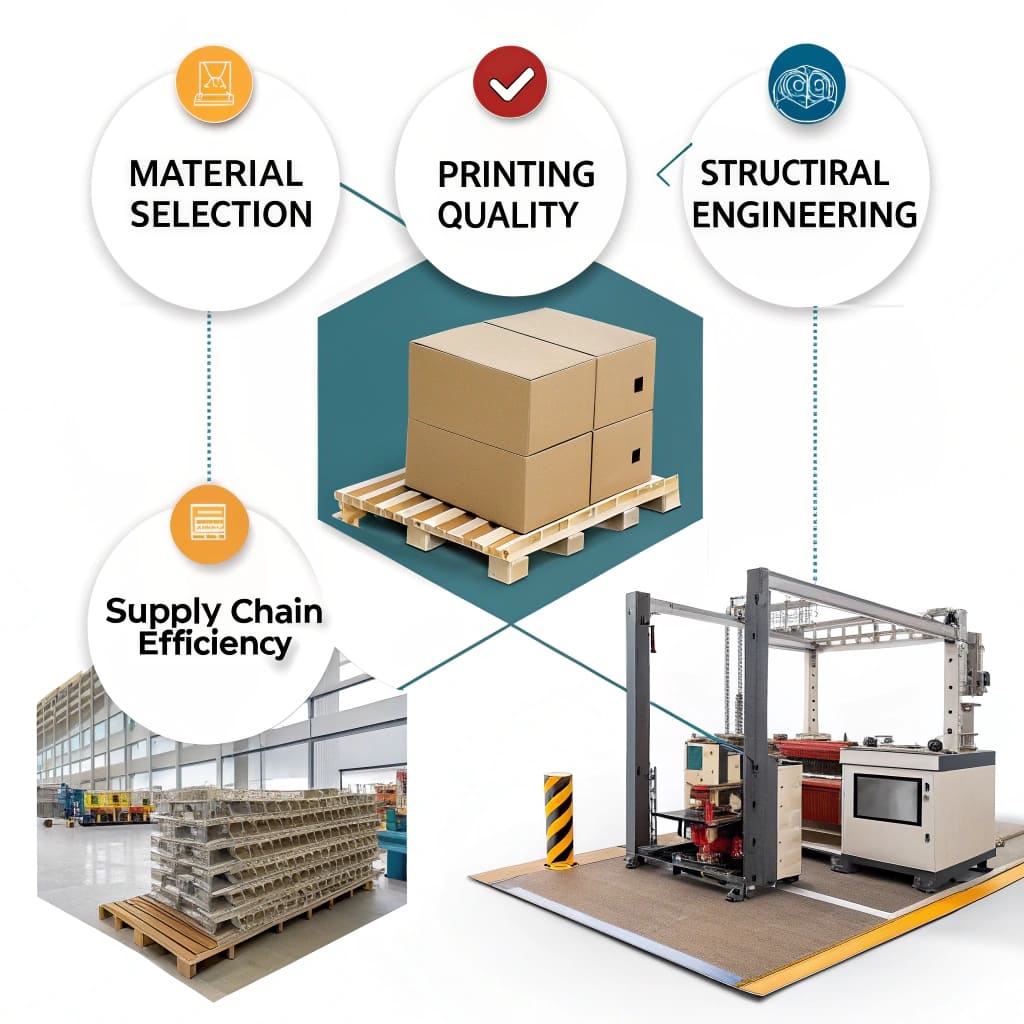
Part 12
Cardboard Displays, Tray, and Shelf Comparison
At Popdisplay, we understand that selecting the right cardboard displays solution is key for effectively showcasing your products. Below is a comparison of our cardboard displays, cardboard trays, and cardboard shelves, highlighting their key characteristics and common applications to help you make an informed decision.
| Product | Definition | Production Characteristics | Applications |
|---|---|---|---|
| Cardboard Displays | Custom-designed display units made from high-quality cardboard, designed to attract attention and promote products. | Crafted to meet specific product dimensions and branding needs, using durable materials with high-quality printing finishes. | Used in retail marketing, product promotions, point-of-sale displays, and trade shows. Ideal for eye-catching showcases and product launches. |
| Cardboard Tray | Flat, shallow containers made from corrugated cardboard, typically used for holding multiple items together. | Produced for efficient stacking and easy handling, often with custom shapes and sizes. | Commonly used in supermarkets, retail stores, and warehouse environments for multi-product displays, bulk product storage, and organized displays. |
| Cardboard Shelf | Shelf-style cardboard structures designed to hold products in a tiered or upright format. | Built for easy assembly and reusability, available in various sizes to accommodate a wide range of products. | Used in retail environments, trade shows, and promotional events to display multiple products in an organized and accessible way. |
Part 13
Benefits of Using Custom Cardboard Displays
Custom cardboard displays provide a powerful and cost-effective solution to showcase products and boost brand presence in retail and promotional environments. These displays are designed with the specific needs of businesses in mind, offering a variety of key benefits:
- Increased Product Visibility: Custom cardboard displays are designed to attract attention and highlight key products, ensuring that they stand out in busy retail spaces and at events.
- Enhanced Brand Awareness: With custom graphics and branding, these displays reinforce the brand identity and message, helping to create a lasting impression with customers.
- Cost-Effective Marketing: Compared to other display options, cardboard displays offer a budget-friendly solution for businesses looking to maximize their promotional efforts without a hefty investment.
- Eco-Friendly Solution: Made from recyclable materials, custom cardboard displays provide an environmentally responsible alternative to other promotional displays, contributing to sustainability goals.
- Easy to Assemble and Transport: These displays are lightweight, flat-packed for easy transportation, and quick to assemble, making them an ideal choice for businesses with limited space or resources.
- Flexible Customization: Custom cardboard displays can be tailored to suit a wide range of product types, from small items to larger products, and can be designed in various shapes and sizes to meet specific promotional needs.
- Boosted Impulse Purchases: Positioned strategically in high-traffic areas, these displays can encourage impulse buys by making products more accessible and appealing to customers.
- Durability and Strength: With strong, reinforced cardboard, these displays are designed to hold products securely, ensuring they last throughout the duration of the campaign without compromising on their appearance.
- Professional Appearance: Custom designs ensure that displays maintain a high-quality and professional look, aligning with the brand's image and enhancing the overall shopping experience.
- Versatility: Suitable for various industries, including electronics, cosmetics, food, and beverages, ensuring broad application.
- Space Optimization: Custom-built to fit specific retail spaces, maximizing product display efficiency without taking up unnecessary room.
- Scalability: Whether for seasonal promotions, product launches, or long-term displays, cardboard solutions can be easily adjusted for different campaigns.
In summary, custom cardboard displays offer a versatile, effective, and environmentally friendly solution to elevate product presentation and boost brand visibility while keeping costs low and ensuring ease of use.
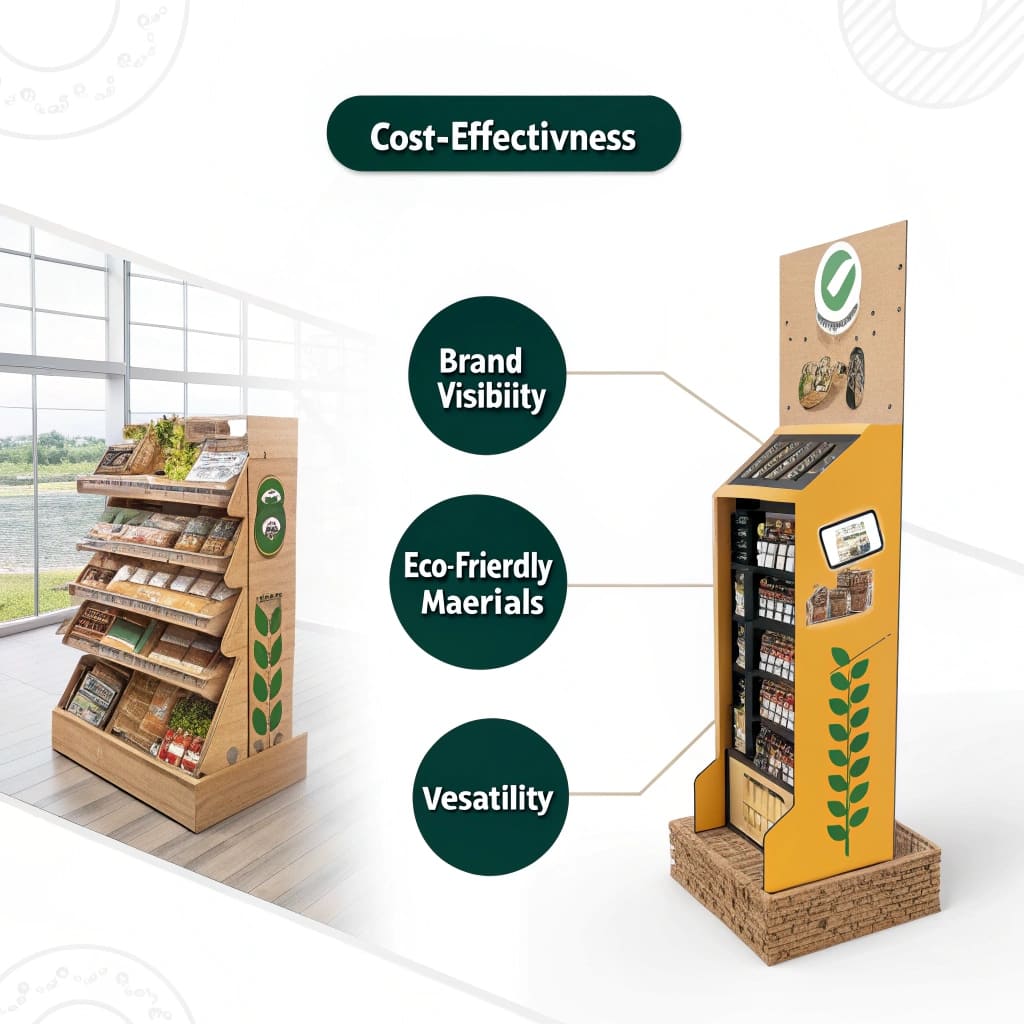
Part 14
Considerations When Purchasing Cardboard Displays
When selecting cardboard displays for your retail or marketing needs, it’s important to make an informed decision. To ensure you choose the right display for your specific requirements, here are several key factors to consider:
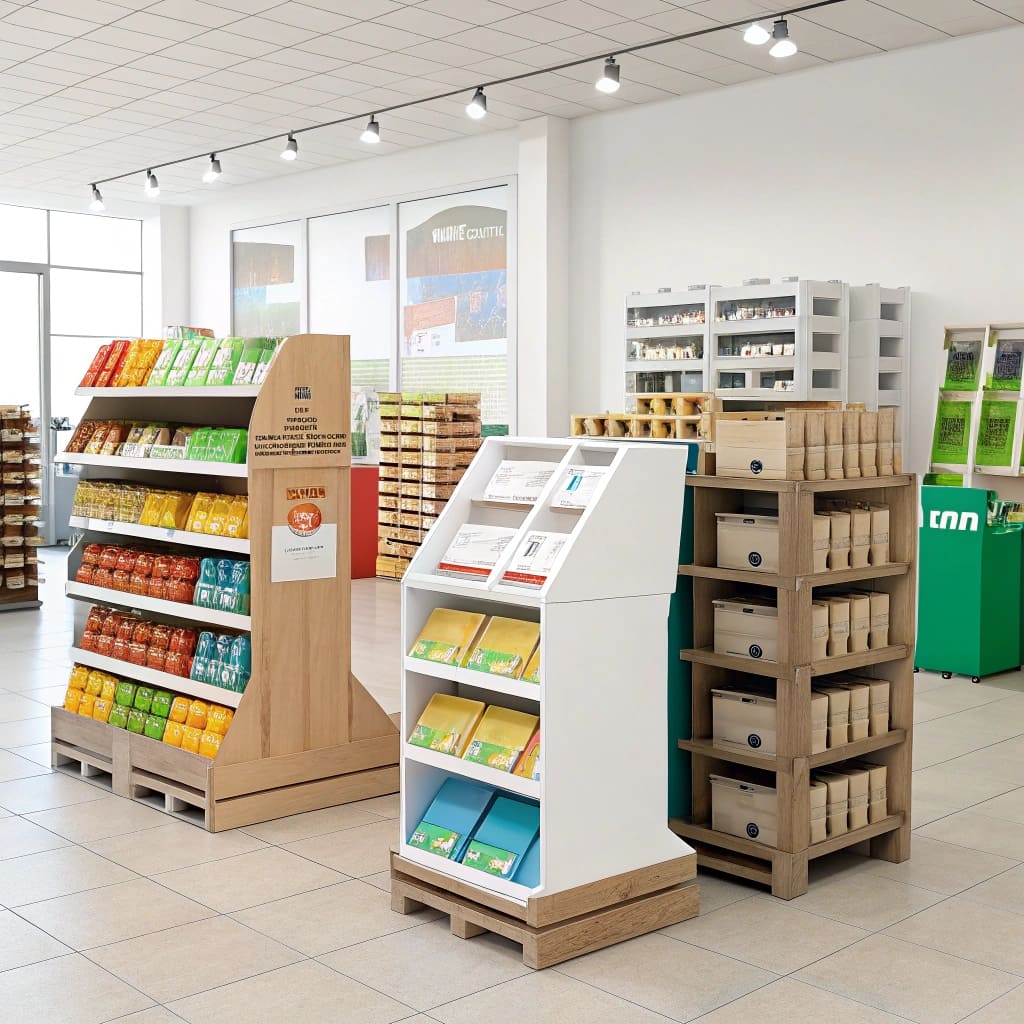
- Display Type & Size: Depending on your product and promotional goals, select the appropriate display type (e.g., counter, floor, endcap) and size. Ensure the display’s dimensions match the space available and accommodate your products effectively.
- Material Strength: The sturdiness of the cardboard is critical, especially for heavier products. Choose between standard, heavy-duty, or reinforced cardboard based on the weight and size of the items to be displayed.
- Customization: Customization can make your display stand out. Whether you need custom graphics, unique shapes, or brand-specific colors, make sure the display can be tailored to align with your marketing message and aesthetic.
- Surface Finish: The finish of your cardboard displays affects both its durability and visual appeal. Options like glossy, matte, or lamination will influence how well your display looks in-store and how long it lasts under various conditions.
- Production Time & Lead Time: Check the lead time for the production and delivery of your display. A quick turnaround is crucial, especially if you have tight marketing campaigns or product launch timelines.
- Cost vs. Quality: While it’s tempting to choose the least expensive option, it’s important to balance cost with the durability and visual appeal of the display. Investing in a higher-quality display often leads to better long-term results.
- Environmental Impact: If sustainability is important to your brand, consider eco-friendly cardboard displays made from recycled materials or biodegradable options.
- Supplier Reliability: Select a supplier with a strong reputation for delivering quality displays on time. A reliable partner will not only provide excellent products but also offer design advice and ensure your displays meet your marketing needs. Work with trusted manufacturers like Popdisplay who have experience in delivering high-quality, reliable cardboard displays.
- Size & Dimensions: Verify that the display dimensions align with your product size and the available retail space.
- Printing & Graphics Quality: The print quality of your display is crucial. Choose a supplier that offers high-quality graphics to make your products stand out.
- Certifications: Ensure the manufacturer adheres to relevant certifications, such as ISO standards or sustainability certifications, to guarantee product quality and eco-friendliness.
- Display Purpose: Consider where and how the display will be used, whether in-store, trade shows, or promotional events, to select the right materials and design.
- Customer Support: Evaluate the level of customer service offered by the supplier to handle your inquiries and any issues that may arise.
- After-Sales Service: Check if the supplier provides post-purchase support, including assistance with assembly or handling returns.
- Product Reviews: Look for customer testimonials and case studies to gauge the supplier's reliability and product quality.
- Packaging and Transport: Ensure the supplier’s packaging is robust enough to prevent damage during shipping, ensuring your displays arrive in perfect condition.
By considering these factors, you’ll be equipped to choose a cardboard displays that suits your promotional objectives, enhances your branding, and performs effectively in a retail or marketing environment.
Module 1
Cardboard Displays vs. Other Materials: A Simple Comparison
Custom cardboard displays offer unique advantages, but how do they compare to other materials like wood, plastic, and metal? Below is a detailed breakdown to help you choose the right display solution for your business:
| Feature | Cardboard | Wood | Plastic | Metal |
|---|---|---|---|---|
| Cost | Low | Higher due to material and labor | Moderate to high depending on type | High due to material and manufacturing costs |
| Durability | Moderate (can be less durable in wet conditions) | High (long-lasting) | High (resistant to weather) | Very high (can withstand harsh conditions) |
| Weight | Lightweight | Heavy | Varies (can be lightweight or heavy) | Heavy |
| Eco-Friendliness | Highly recyclable and eco-friendly | Not typically recyclable | Depends on type, some plastics are recyclable | Often recyclable, but can be energy-intensive to produce |
| Design Flexibility | Highly customizable (easy to print and shape) | Limited by wood structure, difficult to print on | Easy to mold into different shapes, but harder to print | Limited in terms of customization and printing |
| Strength | Sufficient for most retail applications | Very strong, ideal for heavy products | Varies (can be very strong or fragile) | Extremely strong, ideal for heavy-duty use |
| Customization | Fully customizable with printing and die-cutting | Limited due to rigid material | Can be shaped but harder to print on | Limited, mostly requires engraving or decals |
| Portability | Easy to move due to lightweight material | Heavy and difficult to transport | Varies depending on material thickness | Heavy and not easily portable |
| Setup Time | Quick and tool-free assembly | Requires tools and manual labor | Moderate, may require assembly tools | Time-consuming, often needs screws or welding |
| Storage & Shipping | Flat-packed for cost-efficient shipping | Bulky and expensive to store and transport | Depends on type, some can be stackable | Requires significant space and high shipping costs |
| Production Time | Fast production with quick turnaround | Longer due to cutting, sanding, and finishing | Moderate, requires molding and curing | Long production time due to complex fabrication |
| Temperature Resistance | Low (can warp in high humidity) | High (resistant to temperature changes) | Varies by material (some plastics can handle heat) | Excellent (withstand extreme heat and cold) |
| Applications | Retail, trade shows, promotional use | High-end displays, furniture, long-term installations | Retail, packaging, high-performance displays | Industrial, heavy-duty retail applications |
This comparison helps highlight how cardboard displays are often the best option for businesses seeking a balance of cost, customization, and eco-friendliness, especially when compared to more expensive and heavier materials.
By considering the unique strengths of cardboard displays, you can make an informed choice that fits both your budget and marketing goals.
Module 2
Understanding Cardboard Displays Pricing
When considering cardboard displays pricing, it's important to understand the factors that influence its cost. As a trusted manufacturer of cardboard displays, Popdisplay is committed to explaining each factor that affects the price of your customized display solutions.

- Material Quality: The cost of the cardboard material is one of the most significant factors in pricing. Higher quality materials ensure durability, strength, and a longer lifespan for your display. Prices may vary depending on whether you choose standard or premium cardboard, and as market demand changes, material prices can fluctuate accordingly.
- Custom Design and Printing: The complexity of your design and the printing process will also impact the final price. Displays with intricate designs, multiple colors, or high-quality printing require more time, effort, and advanced equipment. As a manufacturer, Popdisplay provides fully customized design services that can be adapted to your branding needs.
- Production Volume: Larger orders tend to reduce the per-unit cost, as economies of scale kick in. Bulk orders may come with discounts, while smaller orders may come at a higher per-unit cost due to setup and material usage.
- Design Complexity: More complex display designs that require detailed prototyping, special folding techniques, or additional features (e.g., removable sections, integrated lighting) will affect pricing.
- Shipping and Handling: Shipping costs vary depending on the size of the order and delivery location. Packaging and logistics are also factored into the final price to ensure the displays arrive in perfect condition. We offer reliable and efficient shipping options to ensure timely deliveries at competitive rates.
Popdisplay believes in transparent and competitive pricing. Once we understand your specific needs, we will provide a detailed quote tailored to your project requirements. Get in touch with us to find the best cardboard displays solutions at a price that works for you.
Module 3
5 Mistakes That Destroy Your Cardboard Displays (And How to Avoid Them)
Proper maintenance and care of your cardboard displays are crucial to ensure they remain in excellent condition and continue to represent your brand effectively. Here are some key tips to help you maintain the longevity and appearance of your displays:
Regular Cleaning
Clean your cardboard displays regularly to remove dust, dirt, and stains. Use a soft, dry cloth to wipe down the surface. For more stubborn marks, a slightly damp cloth with mild soap can be used—just ensure the display is completely dry afterward. Avoid harsh chemicals or abrasive cleaning tools that could damage the printed graphics.Check for Wear and Tear
Periodically inspect your displays for any signs of damage, such as bent edges, torn corners, or fading prints. If you notice any wear, address it immediately to prevent further deterioration. Small repairs can often be made quickly to keep your display in top condition.Avoid Moisture and Humidity
While cardboard displays are designed to be durable, prolonged exposure to moisture can weaken the material. Keep displays in dry environments, especially in areas with high humidity. If your display is exposed to moisture, ensure it is dried out thoroughly before reusing it.Proper Storage
When not in use, store your cardboard displays in a clean, dry area to prevent them from being exposed to dust, moisture, or extreme temperatures. Storing displays upright and flat helps to preserve their shape and avoid warping.- Avoid Direct Sunlight
While cardboard displays are designed to be durable, prolonged exposure to direct sunlight can cause colors to fade and weaken the material. Position your displays in shaded areas to maintain vibrant colors and ensure the material lasts longer.
By following these simple care and maintenance steps, you can ensure that your cardboard displays stay in great shape, keeping your branding fresh and professional for longer periods, and maintaining their impact in any retail setting.
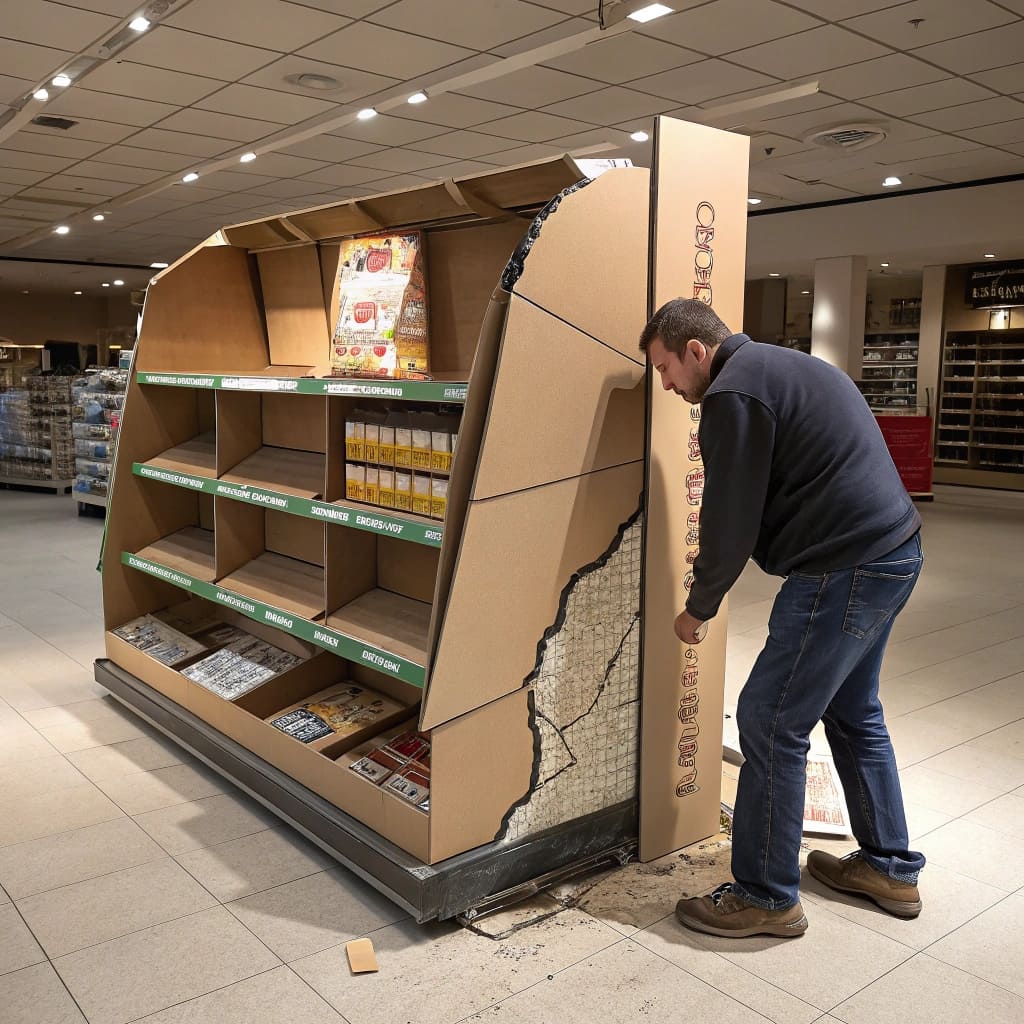
Module 4
Comparison: Cardboard Displays vs. Acrylic Displays
Cardboard and acrylic displays are both popular choices for retail marketing, each offering unique features suited to different needs. While cardboard displays are known for their flexibility, affordability, and eco-friendliness, acrylic displays are prized for their modern look, durability, and premium feel. Here's a comparison to help you understand the key differences between cardboard displays and acrylic displays:
| Property | Cardboard Displays | Acrylic Displays |
|---|---|---|
| Strength | Strong enough for most promotional purposes, but can be prone to damage from heavy items | Very durable, resistant to impact and breakage |
| Weight | Lightweight, easy to transport and set up | Heavier, may require more effort for transportation |
| Cost | More affordable, budget-friendly option | Generally more expensive due to material and manufacturing |
| Customization | Highly customizable in design, size, and print options | Limited customization in terms of design, but offers high-quality finishes |
| Eco-Friendliness | Eco-friendly, often made from recycled materials, 100% recyclable, sustainable | Non-biodegradable, Less eco-friendly, harder to recycle compared to cardboard |
| Durability | Suitable for short-term or seasonal promotions | Ideal for long-term use with a sleek, professional look |
| Appearance | Can be creatively designed with full-color graphics | Offers a polished, clear, and modern aesthetic |
| Transparency | Opaque or printed designs, not see-through | Transparent, ideal for showcasing products with clear visibility |
| Setup/Assembly | Quick and easy to assemble, requires no tools | Requires tools and more time for setup |
| Transportability | Space-efficient, can be flat-packed for easy storage | Bulkier and requires more storage space |
The choice between cardboard and acrylic displays depends on your display's purpose, budget, and the level of visual impact you want to achieve. Cardboard displays offer a cost-effective and eco-friendly option with high customization, making them perfect for temporary or promotional displays. On the other hand, acrylic displays are ideal for businesses seeking a durable, premium display with a modern look for longer-term use.
→ Back to Table of Contents
Module 5
Comparison: Cardboard Displays vs. Plastic Displays
Cardboard and plastic displays are two widely used options for retail and promotional setups, each bringing different advantages. Cardboard displays are well-known for their cost-effectiveness, flexibility, and sustainability, while plastic displays offer sturdiness, a sleek appearance, and resistance to wear and tear. Here's a detailed comparison of cardboard displays and plastic displays to help you determine which best fits your needs:
| Property | Cardboard Displays | Plastic Displays |
|---|---|---|
| Strength | Strong enough for most retail needs but can be prone to bending or breaking under heavy use | Very durable and resilient, able to withstand long-term use |
| Weight | Lightweight and easy to transport | Heavier than cardboard, may require more effort for setup and transportation |
| Cost | Generally more affordable, a budget-friendly choice | Typically more expensive due to material and manufacturing |
| Customization | Highly customizable in design, size, and printed graphics | Limited customization compared to cardboard, more focused on structure |
| Environmental Impact | Eco-friendly, often made from recycled materials, 100% recyclable, biodegradable | Less eco-friendly, Non-biodegradable, difficult to recycle compared to cardboard |
| Durability | Best suited for short-term or temporary use, can get damaged easily | Built for long-term durability and more resistant to wear and tear |
| Appearance | Can be printed with vibrant, eye-catching designs | Offers a sleek, glossy finish and modern look |
| Transparency | Typically opaque or printed with custom graphics | Can be clear or opaque, allowing better product visibility |
| Setup/Assembly | Quick and easy to assemble with no tools required | Requires tools for assembly, may take more time to set up |
| Transportability | Space-efficient, can be flat-packed for easy storage | Bulkier and takes up more space, harder to store |
Choosing between cardboard and plastic displays will depend on your display's purpose, durability needs, and budget. Cardboard displays are ideal for cost-effective, temporary promotions and creative custom branding, while plastic displays are a stronger, more durable choice for businesses needing a long-lasting, professional display solution. Choosing the right material depends on your budget, sustainability goals, and display duration.
→ Back to Table of Contents
Module 6
Comparison: Cardboard Displays vs. Metal Displays
Cardboard and metal displays are two widely utilized options in retail and promotional environments, each offering distinct benefits based on durability, design, and cost. While cardboard displays are valued for their affordability, eco-friendliness, and ease of customization, metal displays are known for their strength, long-term durability, and sleek, professional appearance. Below is a comparison of these two display types to help you make an informed decision for your needs:
| Property | Cardboard Displays | Metal Displays |
|---|---|---|
| Strength | Strong enough for most retail applications, but may not be suitable for heavy products | Extremely durable, able to hold heavy items without bending or breaking |
| Weight | Lightweight, easy to transport and move | Heavier, may require more effort and equipment for transport |
| Cost | More affordable, a budget-friendly option | Generally more expensive due to the material and manufacturing process |
| Customization | Highly customizable in terms of design, size, and graphics | Limited customization options, primarily focused on structural design |
| Environmental Impact | Eco-friendly, often made from recycled materials | Less eco-friendly, more difficult to recycle than cardboard |
| Durability | Best suited for short-term or seasonal promotions | Ideal for long-term, high-durability uses, and heavy-duty applications |
| Appearance | Can be printed with full-color, eye-catching graphics | Offers a sleek, industrial look with a more premium appearance |
| Maintenance | Can wear down quickly due to moisture, handling, or wear | Requires less maintenance, but may show signs of rust or scratches over time |
| Setup/Assembly | Quick and easy to assemble with no tools required | More complex assembly process, usually requires tools |
| Transportability | Space-efficient, flat-packed for easy storage | Bulkier and harder to store, takes up more space during shipping and storage |
The choice between cardboard and metal displays largely depends on your business needs and budget. Cardboard displays are a perfect option for short-term, cost-effective, and eco-friendly promotions with high customization. Metal displays, however, are a superior choice when durability, strength, and a premium, long-lasting solution are required for showcasing heavy or valuable products.
→ Back to Table of Contents
Module 7
Comparison: Cardboard Displays vs. Wood Displays
Cardboard and wood displays are both popular choices for showcasing products in retail settings, each offering unique advantages depending on the needs of the business. While cardboard displays are cost-effective, customizable, and eco-friendly, wood displays are known for their premium feel, durability, and classic appeal. Below is a detailed comparison to help you decide which option suits your business best:
| Property | Cardboard Displays | Wood Displays |
|---|---|---|
| Strength | Strong enough for most retail purposes but may not hold up under heavy weight or extended use | Extremely durable and sturdy, ideal for heavy products and long-term use |
| Weight | Lightweight, easy to transport and set up | Heavier, requires more effort for setup and transportation |
| Cost | Generally more affordable, budget-friendly option | More expensive due to material and manufacturing costs |
| Customization | Highly customizable in design, size, and print options | Limited customization in design, but can be stained or painted for different finishes |
| Environmental Impact | Eco-friendly, often made from recycled materials | Less eco-friendly than cardboard, though wood can be sustainable if sourced responsibly |
| Durability | Best for short-term use or temporary promotions | Built to last for years, resistant to wear and tear |
| Appearance | Can be printed with vibrant graphics for eye-catching designs | Offers a classic, premium look that enhances the aesthetic of high-end products |
| Maintenance | Can wear out quickly, especially if exposed to moisture or rough handling | Easy to clean, but may require maintenance to prevent wear or discoloration over time |
| Setup/Assembly | Quick and simple to assemble without tools | Requires more time and tools for assembly, especially for larger displays |
| Transportability | Easy to store and transport, often flat-packed | Bulkier and takes up more space, harder to transport and store |
Choosing between cardboard and wood displays depends on your product needs, budget, and the type of customer experience you want to create. Cardboard displays are perfect for cost-effective, customizable, and eco-friendly solutions for short-term or seasonal promotions. On the other hand, wood displays are ideal for businesses seeking a durable, elegant, and long-lasting display with a premium look for high-end or luxury products.
→ Back to Table of Contents
Module 8
Comparison: Cardboard Displays vs. Steel Displays
Cardboard displays and steel displays are both popular choices for retail and promotional use, each offering distinct features and benefits. While cardboard displays are known for their versatility, cost-effectiveness, and ease of customization, steel displays stand out for their durability and sturdiness. To help you decide which option is best for your business, here’s a side-by-side comparison of cardboard displays and steel displays:
| Property | Cardboard Displays | Steel Displays |
|---|---|---|
| Strength | Strong enough for most retail applications | Extremely durable and sturdy |
| Weight | Lightweight and easy to transport | Heavier, may require more effort for transport |
| Cost | Generally more affordable and budget-friendly | Typically more expensive due to material and manufacturing |
| Customization | Highly customizable in design, size, and branding | Limited customization options, mainly structural changes |
| Environmental Impact | Eco-friendly, often made from recycled materials | Less eco-friendly, harder to recycle |
| Durability | Suitable for short-term or temporary promotions | Built for long-term use and heavy-duty displays |
| Setup/Assembly | Quick and easy to assemble without tools | Requires tools and more time for setup |
| Appearance | Can be creatively designed with high-quality print | Sleek and professional but may lack the creative flexibility of cardboard |
| Transportability | Easy to store and transport, space-efficient | Bulkier and takes up more storage space |
Choosing between cardboard and steel displays depends on factors such as your display’s intended use, longevity, and budget. Cardboard displays are an ideal option for temporary promotions and custom branding, while steel displays are better suited for more permanent, heavy-duty needs.
→ Back to Table of Contents
Unit 1
Cardboard Displays Manufacturing Process
The process of creating a custom cardboard displays involves several essential stages to ensure quality, design, and durability:
- Design & Concept Development: The first step is working with our design team to create a custom display that fits your branding and product requirements. We provide 3D renderings for approval before moving forward.
- Material Selection: We choose high-quality, durable cardboard materials based on the display's size, load-bearing capacity, and intended use.
- Cutting & Shaping: The selected cardboard is cut and shaped using precise machinery, creating the basic structure of the display.
- Printing & Branding: Your custom graphics, logos, and designs are printed onto the cardboard using high-quality printing techniques to ensure vivid, accurate colors that align with your brand.
- Assembly: The display is assembled, with any additional features like shelves, hooks, or dividers added to enhance functionality and presentation.
- Quality Control: Each display is thoroughly inspected to ensure the design, print, and structural integrity meet your specifications before it’s approved for production.
- Packaging & Shipping: Once the displays are ready, they are carefully packed to prevent any damage during shipping, ensuring they arrive in perfect condition.
This process guarantees the creation of high-quality, eye-catching cardboard displays that perfectly suit your retail or promotional needs.
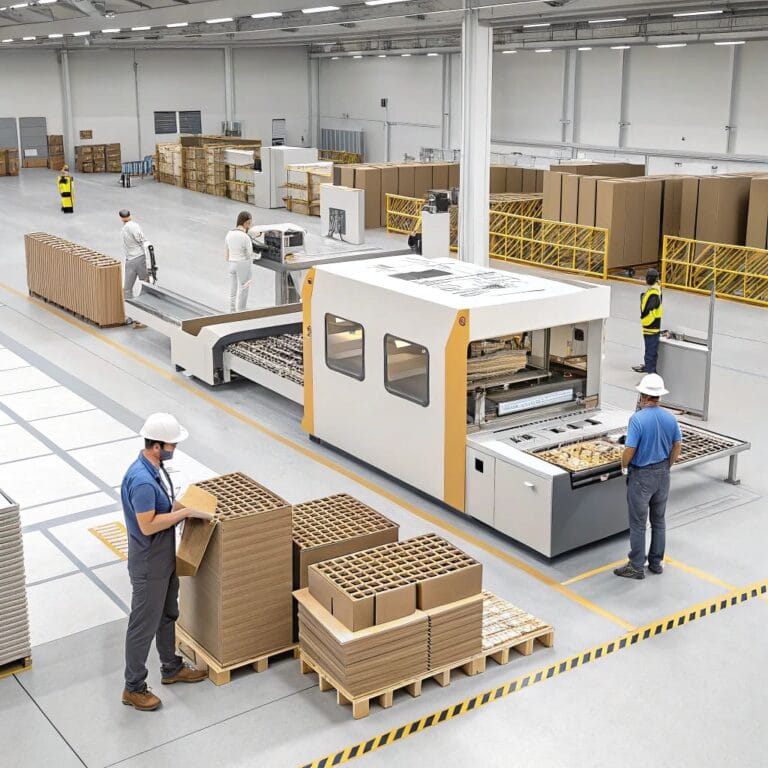
Unit 2
Physical Properties of Cardboard Displays Compared to Other Materials
Cardboard displays are highly valued for their versatility and practicality, but it's helpful to compare their physical properties with those of other common display materials. Here's a breakdown:
| Material | Density (g/cm³) | Strength | Flexibility | Durability | Water Resistance | Cost | Environmental Impact | Print Quality |
|---|---|---|---|---|---|---|---|---|
| Cardboard Displays | 0.8 - 1.2 | Moderate to High | High | Moderate | Low (absorbs moisture) | Low | High (recyclable material) | High (vivid, full-color) |
| Acrylic | 1.18 | High | Low | High | Medium | High | Medium (recyclable but non-biodegradable) | High (smooth finish) |
| Plastic | 1.2 - 1.4 | Moderate | Moderate | Moderate | Medium | Medium | Low (non-biodegradable) | High (durable print) |
| Wood | 0.6 - 0.9 | High | Low | High | High | Medium | Medium (sustainable if sourced responsibly) | Moderate (natural look) |
| Metal (e.g., Steel) | 7.85 | Very High | Very Low | Very High | High | Very High | Low (energy-intensive production) | Moderate (less vibrant) |
| Fabric | 0.4 - 0.9 | Low to Moderate | High | Low | Low | Low to Medium | High (biodegradable options) | Moderate (fabric texture) |
Key Differences
- Cost: Cardboard displays are far more budget-friendly compared to acrylic, plastic, or metal alternatives, making them an ideal solution for businesses needing an economical option for in-store promotions or events.
- Durability: While cardboard displays are sturdy for short-term use, materials like acrylic, wood, or metal offer greater durability and longevity, especially in high-traffic environments.
- Environmental Impact: Cardboard leads in environmental friendliness due to its recyclability and biodegradability. Materials like plastic and metal, though functional, have higher environmental costs in production and disposal.
- Print Quality: Cardboard displays offer excellent print quality, allowing for vibrant, eye-catching designs, which is a major advantage in retail marketing. While acrylic and plastic can also provide high-quality prints, their appearance may lack the same visual appeal in some cases.
Cardboard displays offer a great balance of flexibility, cost-effectiveness, and eco-friendliness, making them the top choice for short-term or promotional use, especially for businesses seeking an efficient way to showcase their products.
Unit 3
The Production of Cardboard Displays: A Step-by-Step Guide
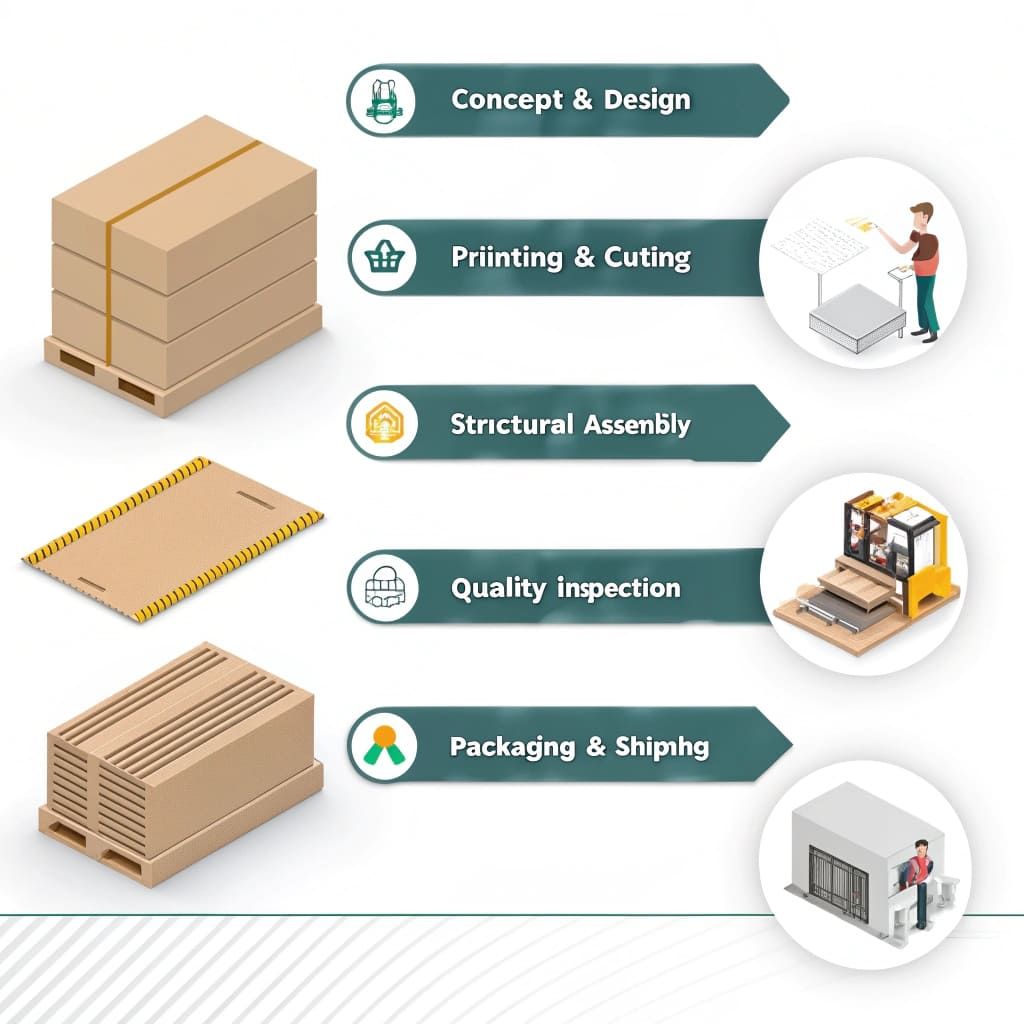
Cardboard displays are created through a carefully controlled process that involves several steps to ensure both quality and design flexibility. Here's an overview of how cardboard displays are made, from concept to finished product:
- Custom Design Services: Our design team will work with you to create unique cardboard displays tailored to your brand. From initial concepts to detailed design, we ensure every aspect aligns with your vision.
- 3D Rendering & Prototyping: Before production, we provide high-quality 3D renderings and prototypes to help you visualize your display. We offer free revisions until you are completely satisfied with the design.
- Material Selection: The process starts with choosing the right type of cardboard, often made from recycled materials for sustainability. The cardboard is typically corrugated to provide strength and durability for displaying products.
- Design and Prototyping: The design phase involves creating a custom layout for the display. This includes choosing the dimensions, shape, and graphic elements. 3D renderings are created to visualize the final design and to ensure it meets the client's branding needs.
- Printing: Once the design is finalized, high-quality printing is applied to the cardboard, usually using offset or digital printing techniques. This is where the display comes to life with vibrant colors, logos, and promotional messages.
- Surface Finishing & Coating: Surface treatments such as lamination or varnishing can be applied to enhance durability, improve the appearance, and protect your displays from damage. These options ensure your displays are not only visually appealing but long-lasting as well.
- Die-Cutting: After printing, the cardboard is cut into the desired shape using die-cutting machines. This process allows for precise cuts and folds, creating the structure of the display.
- Assembly: The die-cut pieces are then folded, glued, or locked into place to form the final display. This step may involve additional reinforcement for heavier products to ensure stability.
- Quality Check: Each display undergoes a thorough quality inspection to ensure that it meets the required standards for strength, appearance, and durability. This includes checking print quality, structural integrity, and overall design accuracy.
Packaging and Shipping: After the display has passed all quality checks, it is carefully packaged for shipping. The packaging protects the displays from damage during transit. The displays are then sent to the customer’s location, ready for use in stores or events.
Emerging innovations in cardboard displays production are focused on enhancing sustainability, improving printing technologies, and reducing manufacturing costs, all while maintaining the high level of customization that makes cardboard displays an ideal choice for businesses across various industries.
Unit 4
Cardboard Displays: Standard vs. Custom Designs
Both standard cardboard displays and custom-designed displays serve distinct purposes in retail and promotional environments. The choice between the two largely depends on the specific needs and goals of the business.
| Feature/Property | Standard Cardboard Displays | Custom Cardboard Displays |
|---|---|---|
| Design | Pre-designed templates available for quick use | Tailored to specific branding, product, and marketing needs |
| Customization | Limited to size and simple design changes | Fully customizable in shape, color, graphics, and messaging |
| Cost | Generally more affordable due to mass production | Higher cost due to design work and tailored production |
| Durability | Suitable for light to moderate usage | Can be reinforced for high durability depending on the material choice |
| Lead Time | Quick turnaround with standard designs | Longer production times due to design and prototyping stages |
| Branding | Limited opportunity for unique brand identity | High potential for aligning the display with brand identity and marketing strategies |
| Visual Impact | Simple, effective for short-term promotions | Highly eye-catching and memorable, perfect for long-term campaigns or high-visibility locations |
| Applications | Best for general retail, short-term promotions, or temporary setups | Ideal for flagship stores, special events, or trade shows |
| Sustainability | Often made from recyclable materials, but customization options may be limited | Can also be eco-friendly, with options for sustainable materials and practices |
This comparison highlights the advantages and trade-offs between standard and custom cardboard displays, helping businesses make an informed decision based on their promotional goals, budget, and branding needs.
→ Back to Table of Contents
Unit 5
Cardboard Displays Geometry Design Guide
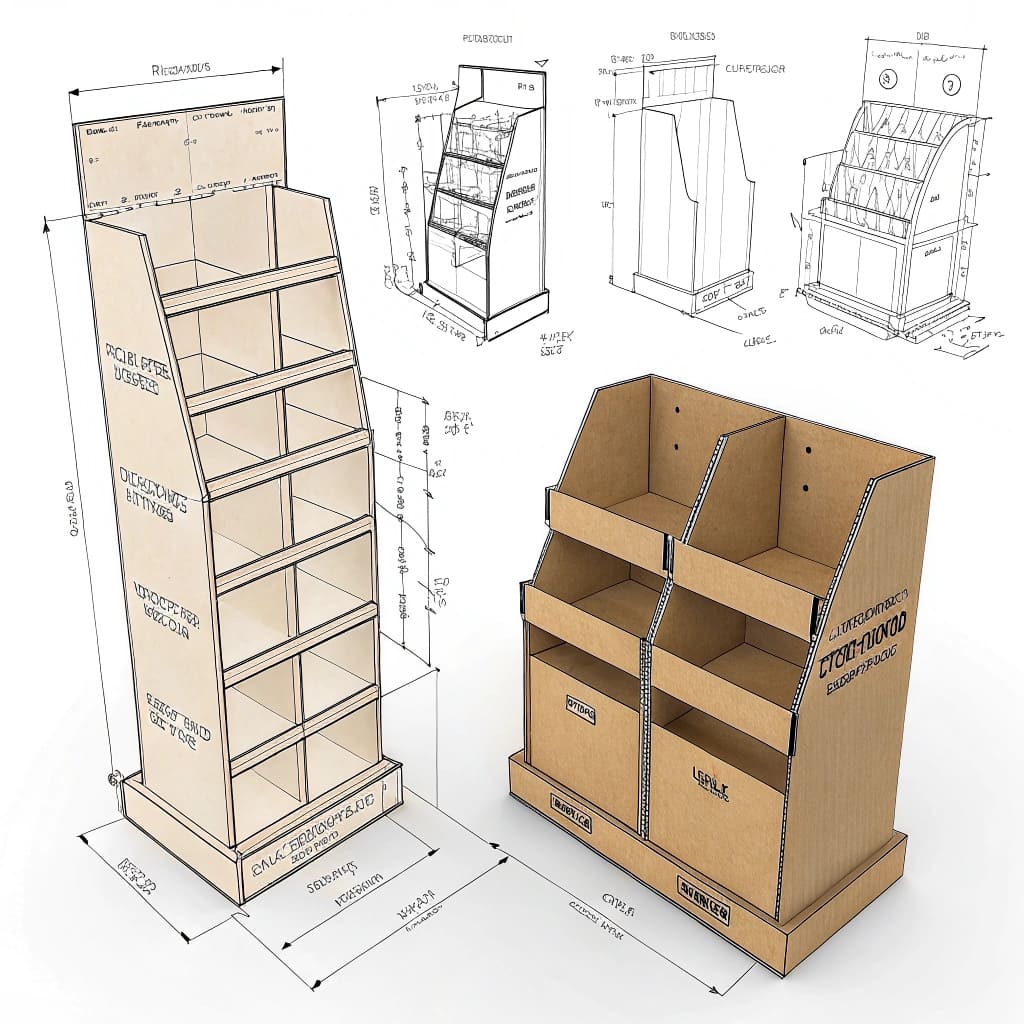
At Popdisplay, we specialize in creating custom-designed cardboard displays tailored to meet the unique needs of our clients. Working closely with retailers and brand owners, we are committed to delivering high-quality displays in a variety of configurations, including:
- Freestanding Displays: Available in different sizes and shapes to best fit your store’s layout and product presentation.
- Countertop Displays: Compact designs for easy placement in retail environments or on point-of-sale counters.
- Shelf Displays: Designed to integrate seamlessly with existing shelving units for optimal space usage and product visibility.
- Floor Stands: Sturdy designs engineered to support larger products while ensuring durability and easy setup.
- Pop-Up Displays: Lightweight, portable displays ideal for trade shows, events, or seasonal promotions.
Our design philosophy focuses on creating displays that are both functional and visually striking. By maximizing the use of space and emphasizing product branding, we ensure that each display enhances customer engagement and boosts sales. This efficient design approach leads to improved brand visibility and cost-effective marketing solutions for our clients.
If you’re looking for a creative, customizable, and cost-effective way to showcase your products, we’re here to help bring your vision to life.
→ Back to Table of Contents
Unit 6
Customizable Surface Finishing Options for Cardboard Displays
At Popdisplay, we know that every display project is unique, and the surface finish of your cardboard displays plays a key role in making it stand out. That's why we offer a variety of customizable surface finishing options to help you create the perfect display that aligns with your brand's needs and vision.
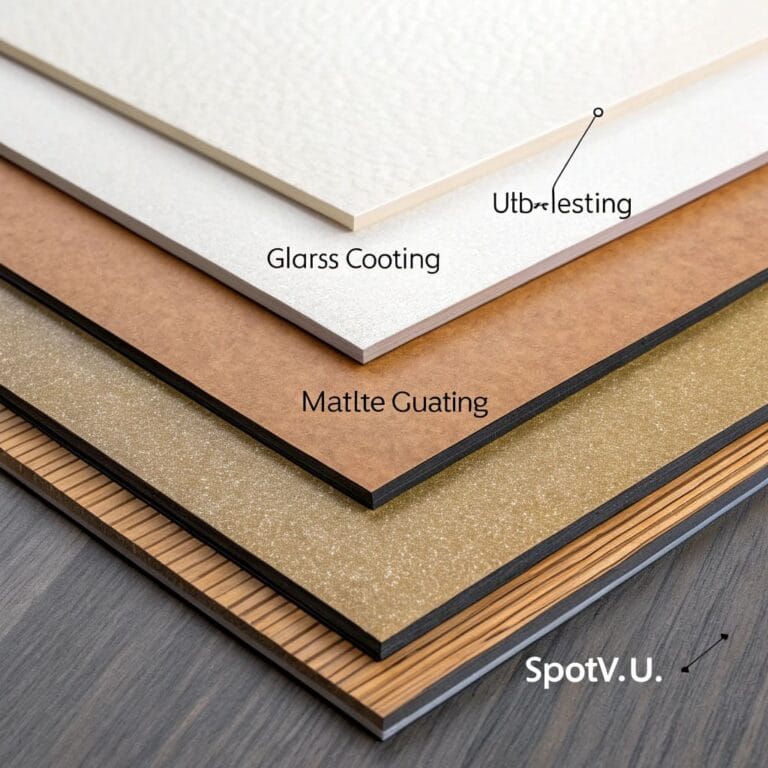
Glossy Finishing
For a sleek, modern look, we offer a glossy finish option. This high-shine coating enhances the visual appeal of your cardboard displays and gives it a polished, vibrant appearance. Ideal for making your brand colors pop, glossy finishes are perfect for attracting attention on retail shelves.
Matte Finishing
If you prefer a more sophisticated and subtle look, our matte finish is a great option. This non-reflective surface gives your display a smooth, elegant appearance while ensuring that your printed graphics are easy to read and capture attention. Matte finishes are perfect for high-end brands looking to create a premium feel.
Lamination Finishing
Our lamination option provides an added layer of protection to your cardboard displays. This finish helps to preserve your display from moisture, dirt, and scratches, ensuring a longer-lasting and durable product. With lamination, your display will look great for longer periods, even in high-traffic retail environments.
Spot UV Coating
Spot UV coating is a selective glossy coating applied to specific areas of your display. This technique can highlight your brand’s logo, key message, or important product features, creating a striking contrast between matte and gloss areas.
Foil Stamping
For a luxury feel, foil stamping applies metallic foil to specific parts of your display. Available in gold, silver, or other colors, it adds a premium touch to your branding and makes your displays stand out on the shelf.
Embossed Foil Stamping
Take your branding to the next level with embossed foil stamping. This technique combines metallic foil with a raised texture, giving your design a three-dimensional effect. Perfect for highlighting logos, product names, or special design elements, embossed foil stamping adds a sophisticated and eye-catching touch to your display.
Custom Coating Finishing
If you want something completely unique, we offer custom coatings to suit your specific requirements. Whether it’s a soft-touch finish for a premium feel or a high-durability coating for heavy use, we can tailor the surface treatment to ensure your display is both visually stunning and functional.
With our wide range of surface finishing options, we can help you design a cardboard displays that not only meets your functional needs but also enhances your branding and stands out in a crowded market. Whether you're launching a new product or rebranding, these customizable options ensure that your display leaves a lasting impression.
Unit 7
Composition of Custom Cardboard Displays
Custom cardboard displays are designed with durability, functionality, and visual appeal in mind. Each display is crafted with a combination of materials and design elements to ensure it performs optimally in various retail settings. Here's a breakdown of the key components that make up a high-quality custom cardboard displays:
Core Material
The core of the cardboard displays is made from high-quality, sustainable corrugated cardboard. This material offers an ideal balance of strength, lightness, and flexibility, allowing for easy transportation while providing sufficient durability for showcasing products in retail environments.
Graphics & Branding
One of the standout features of custom cardboard displays is their ability to showcase high-quality, full-color graphics. The outer surface of the cardboard is often printed with your brand's logo, product information, and promotional designs using high-resolution printing techniques. This ensures that your products stand out and attract attention.
Structural Design
The design of a custom cardboard displays is engineered to maximize space and enhance visual appeal. This may include multi-tier shelving, peg hooks, and other design features that are tailored to the products being displayed. A well-structured display ensures products are securely held and easy to access.
Protective Coating
Many custom displays include a protective coating to enhance the durability of the cardboard. This coating is typically applied to the surface to improve resistance to water, dirt, and wear, ensuring that the display maintains its appearance even in high-traffic retail environments.
Reinforced Corners and Edges
The edges and corners of the display may be reinforced with additional layers of cardboard or a special protective material. This provides extra strength where the display is most vulnerable to damage, ensuring long-term stability and integrity.
Assembly Components
Custom cardboard displays are designed for easy assembly and disassembly, often featuring interlocking tabs and slots that don’t require any tools. These components ensure that the display is quick and easy to set up while maintaining the necessary strength and stability once assembled.
Eco-friendly Materials
An important consideration in the composition of custom cardboard displays is the use of sustainable materials. Many manufacturers opt for eco-friendly paper and recycled content in their cardboard to reduce the environmental impact. This is a great selling point for companies looking to align with sustainability goals.
By combining these materials and design elements, custom cardboard displays offer a flexible, cost-effective, and visually striking solution for retail environments. Whether you're looking to highlight specific products, promote seasonal offers, or reinforce brand messaging, custom cardboard displays provide an ideal platform for achieving these goals.

Unit 8
Key Factors Influencing the Effectiveness of Cardboard Displays Designs
Creating a standout cardboard displays involves more than just a strong design; several key factors influence the overall effectiveness and success of the display in retail settings. Here are the top aspects to consider when designing a cardboard displays:
- Material Quality and Strength: The strength and durability of the cardboard material directly impact the overall effectiveness of the display. High-quality materials ensure the display remains sturdy, preventing sagging or collapse during use, which is crucial for maintaining a professional image.
- Design and Branding: Customizing the design to align with your brand’s identity is crucial. The color scheme, graphics, and overall design should be visually appealing and consistent with your marketing goals to attract customer attention.
- Display Size and Structure: The size and structure of the display should fit the retail environment while making the products easy to view and access. It’s important to balance visibility with practicality.
- Product Fit: The design should be tailored to accommodate the product's size, shape, and weight, ensuring a stable display that doesn’t risk damage to the items being showcased.
- Printing Quality: High-quality printing ensures that graphics, text, and logos appear sharp and vibrant. Poor print quality can negatively affect the perception of the brand and product.
- Ease of Assembly: The display should be easy to set up and move around if needed. Clear assembly instructions and simple design help save time and effort for retailers.
- Eco-Friendliness: With growing environmental concerns, using recyclable or biodegradable materials for the display adds an eco-friendly dimension to your marketing, appealing to environmentally conscious customers.
- Durability and Longevity: A well-designed cardboard displays should be sturdy enough to last through the campaign or promotion period without deterioration, even in high-traffic retail areas.
- Product Accessibility: Smart shelving and open-front designs make it easy for customers to grab products, improving the shopping experience.
- Customization & Branding: Tailored shapes, die-cuts, and modular designs allow brands to create a unique and attention-grabbing presence in stores.
Placement and Positioning: Where and how the cardboard displays is placed in the retail environment greatly impacts its visibility. Strategic placement in high-traffic areas ensures maximum exposure, attracting the attention of customers and driving product sales.
Weight and Load Capacity: The ability of the cardboard displays to support the weight of the products is crucial for maintaining its functionality. Proper load-bearing designs ensure that the display can hold the products securely without risk of collapse, maintaining the integrity of both the display and the items it holds.
By considering these factors, you can create a cardboard displays that not only catches the eye but also functions effectively to promote your products. The right balance of design, material, and quality ensures that your display works to its fullest potential, driving product visibility and boosting sales.
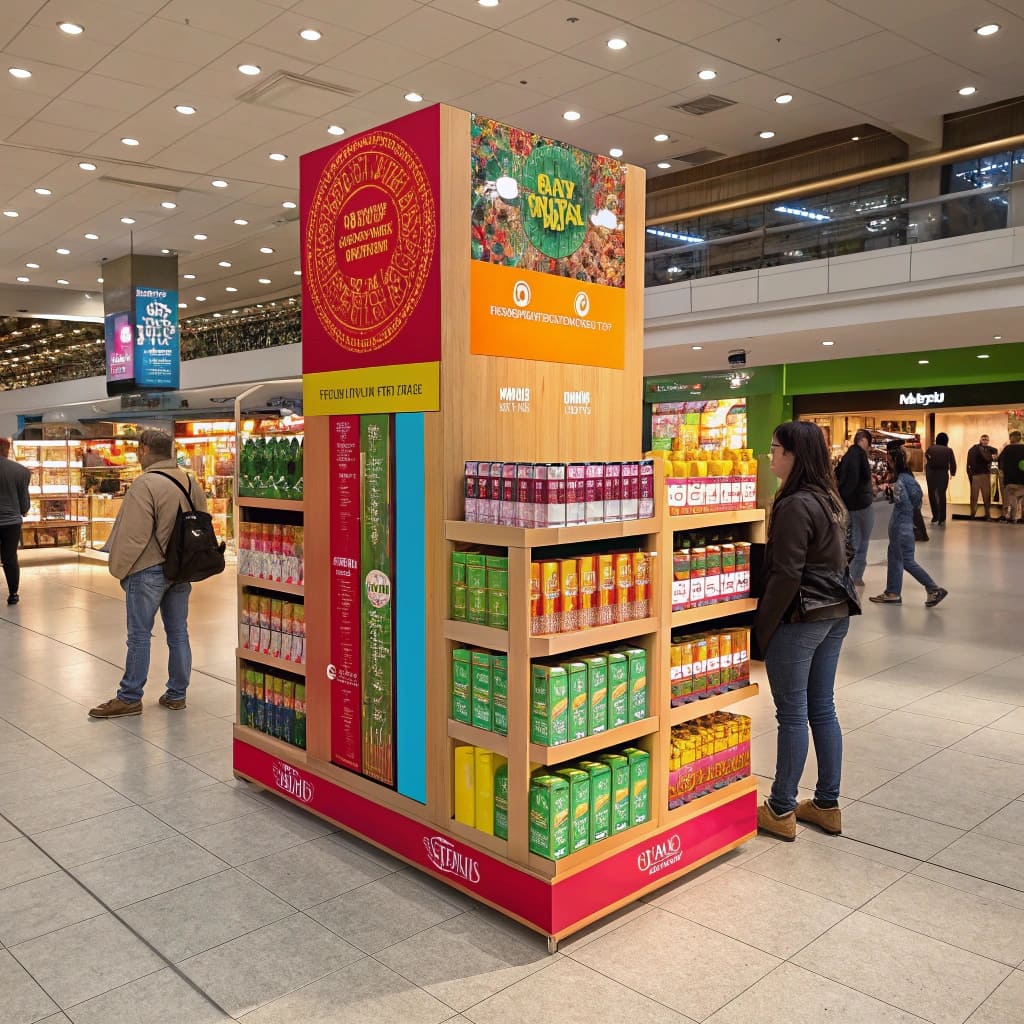
Unit 9
Cardboard Displays: Components and Construction
At Popdisplay, we specialize in designing and manufacturing high-quality, durable cardboard displays stacks that meet the demands of retail environments. Each display stack is carefully crafted with attention to detail, ensuring that it serves its purpose in promoting products efficiently while being sturdy and visually appealing. Our displays are made with premium materials and designed for ease of assembly and transport.
Key Components of Our Cardboard Displays
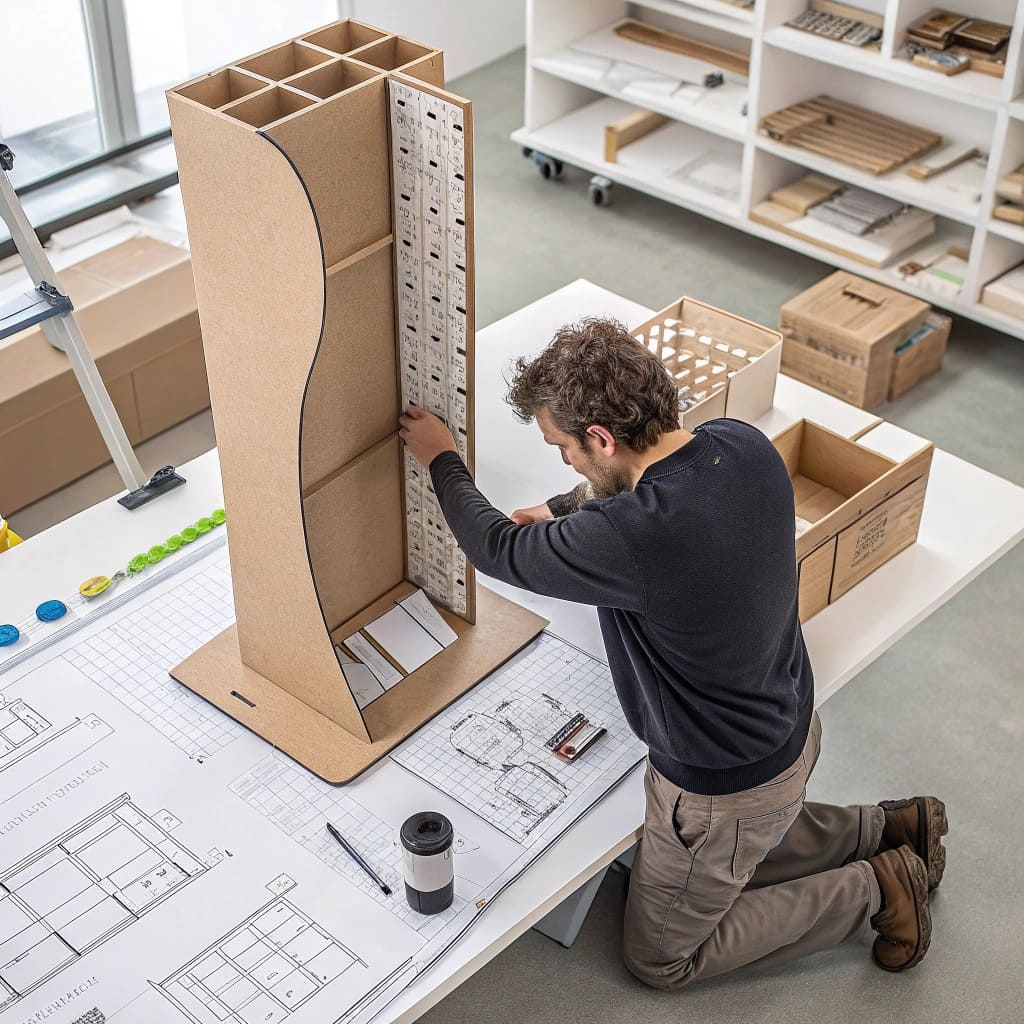
- Base Panel: Forms the foundation of the display stack, providing stability and support for the entire structure. It ensures that the display holds products securely while remaining stable.
- Side Panels: These panels provide structural integrity and contribute to the display’s overall strength. They are designed to support the weight of products while being visually aligned with the brand's design.
- Shelving Units: These are the main sections of the display, where products are placed. Each shelf is designed to bear a certain weight, and they are strategically positioned for optimal product visibility and ease of access.
- Graphics Panels: These panels are printed with high-quality graphics, logos, and product information. They ensure that the display catches customers' attention and communicates branding effectively.
- Reinforcement Layers: These layers add extra support to the structure, preventing sagging and ensuring the display holds up under pressure. Reinforcement is key for maintaining display quality during shipping and in-store use.
- Cardboard Inserts: Inserts are used to create custom shapes and compartments within the display, organizing products neatly and ensuring easy access. They enhance the overall aesthetic and functionality.
- Assembly Tabs: Special folding and locking tabs make the assembly process easy, ensuring quick setup without the need for additional tools. These tabs help hold the display together securely during use.
- End Panels: These side panels often carry branding and decorative elements, enhancing the display’s visual appeal from all angles and drawing attention from the consumer.
- Packaging: Proper packaging ensures the display arrives in perfect condition, ready to be assembled. The packaging protects all components from damage during transport.
Design and Durability
The overall design of our cardboard displays stacks is aimed at both functionality and sustainability. Using eco-friendly materials, our displays not only reduce environmental impact but also ensure reliable, long-term use in retail settings. Each component is carefully crafted to ensure that the display remains sturdy even during heavy-duty usage.
By focusing on material strength, precision cutting, and high-quality printing, we provide cardboard displays that stand out on retail shelves, effectively promoting products and elevating your brand image.
Our display stacks are designed for durability and can be reused multiple times, making them a cost-effective solution for in-store marketing campaigns. With a lifespan that lasts through numerous product cycles, these displays are an essential tool for showcasing products in a professional and organized manner.
Unit 10
The Role of Protective Coatings: A Superior Solution for Cardboard Displays Durability
Cardboard displays are a highly effective marketing tool, but moisture, humidity, and wear and tear can compromise their durability over time. To enhance their lifespan and maintain their structural integrity, businesses can utilize protective coatings and specialized treatments that shield the material from environmental damage.
A well-protected cardboard displays typically includes:
- Moisture-Resistant Coatings – Special finishes that prevent warping and softening when exposed to humidity or spills.
- Lamination Films – A protective layer that enhances surface durability and preserves printed graphics against scratches and fading.
- Reinforced Corrugated Board – High-strength cardboard designed to support heavier products and withstand extended use.
- UV Coatings – A protective barrier that shields printed designs from fading due to prolonged exposure to light.
By incorporating these protective solutions, cardboard displays can maintain their functionality, visual appeal, and structural stability, ensuring they continue to enhance product visibility and drive sales in retail environments.

Unit 11
Guidelines for Maximizing the Performance of Your Cardboard Displays
Maximizing the functional lifespan and ensuring the operational efficiency of your cardboard displays requires adherence to specific handling and care practices. Cardboard displays are highly effective marketing tools, offering customizability, durability, and an eco-friendly design. To maintain their optimal performance and ensure they continue to showcase your products effectively throughout their service life, following best practices in their handling, storage, and use is essential.
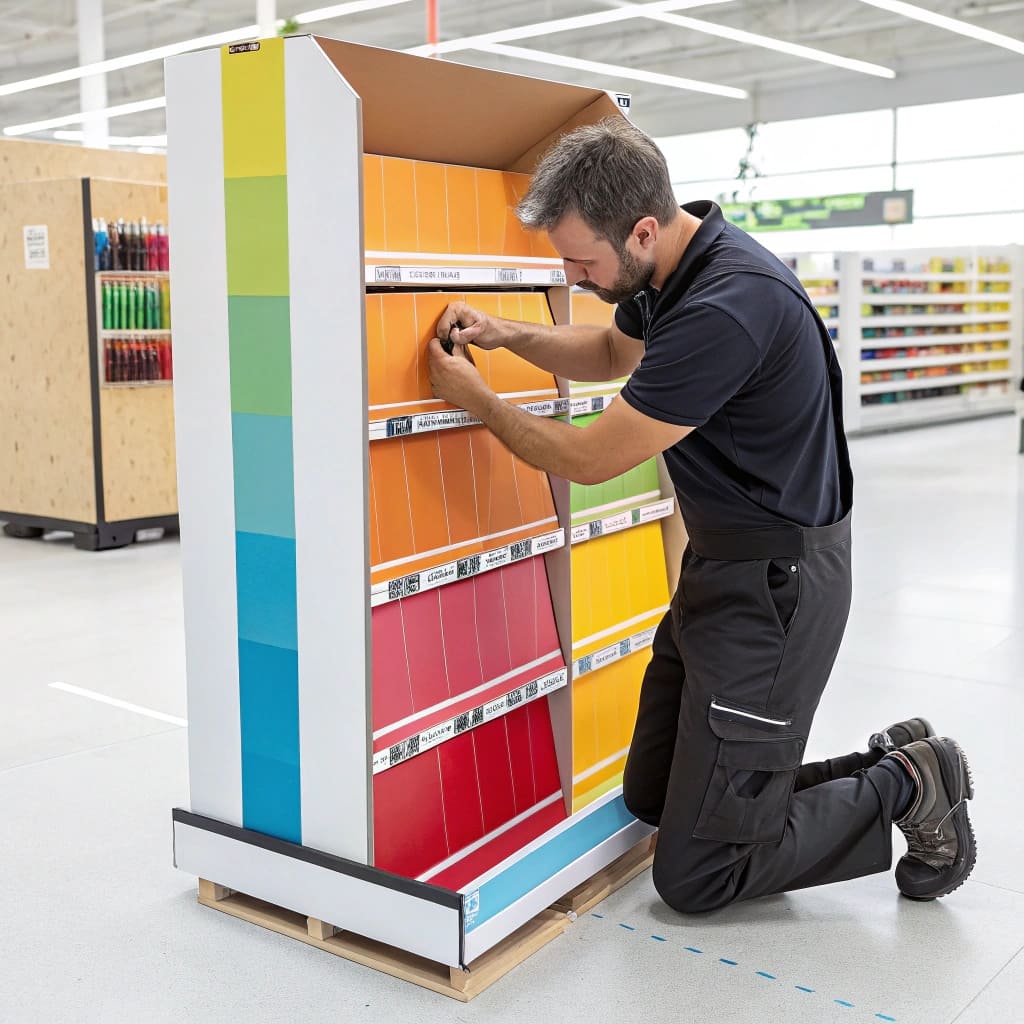
- Avoid Scratching: To preserve the appearance and functionality of your cardboard displays, avoid damaging the surface by scratching it with hard objects.
- Avoid Excessive Weight: Ensure that the display is not overloaded with heavy items, as this could cause the cardboard structure to collapse or lose its shape.
- Proper Setup and Adjustment: Set up your cardboard displays according to the provided instructions to avoid misalignment and ensure its stability.
- Store in a Dry Place: Keep displays away from moisture and store them in a dry, cool environment to prevent any material degradation.
- Avoid Direct Sunlight: Prolonged exposure to direct sunlight can cause the colors to fade and weaken the cardboard, shortening its lifespan.
- Handle with Care: Gently handle the display to avoid bending, warping, or tearing, ensuring its long-lasting use.
- Gradually Increase Load: When placing items on the display, gradually increase the load to avoid sudden stress that may damage the structure.
- Ensure Stability: Place the display on a flat, stable surface to ensure it stands firm throughout the display period.
- Clean and Maintain Properly: Regularly clean the display with a dry cloth to maintain its appearance and integrity. Avoid using water or harsh chemicals that could damage the material.
- Easy Disassembly & Recycling: When no longer needed, disassemble the display properly and dispose of it in recycling bins to support sustainability efforts.
By adhering to these guidelines, your custom cardboard displays will maintain their effectiveness, durability, and aesthetic appeal, ensuring they continue to enhance your brand’s visibility and impact in retail environments.
Unit 12
How to Optimize Your Custom Cardboard Displays Selection?
To select the perfect custom cardboard displays for your retail or promotional needs, follow these key steps:
Define Display Objectives: Clarify your display goals, whether it’s product visibility, brand promotion, or driving customer engagement. Knowing what you want to achieve helps determine the right design style, size, and placement.
Conduct Product and Environment Assessment: Analyze the type of products to be displayed (size, weight, shape) and the environment (indoor vs. outdoor, lighting conditions, etc.). This will ensure the display is both functional and visually appealing.
Set Durability Expectations: Specify how long the display will be used. Temporary promotional displays may require lighter materials, while long-term retail displays need more durable cardboard and a sturdy design for longevity.
Consider Branding and Design Elements: Provide clear branding guidelines, including logo placement, color schemes, and artwork for an eye-catching and cohesive design. High-quality printing options and customization will enhance brand recognition.
Installability and Space Requirements: Ensure that the display fits the physical space where it will be placed. Specify whether it needs to be freestanding, wall-mounted, or a countertop display, and how easy it is to assemble.
Consider Assembly and Portability: Ensure the display design is easy to assemble without requiring special tools. Flat-pack designs offer cost-efficient shipping and easy setup for retailers.
By clearly defining these criteria, you ensure that your custom cardboard displays perfectly meets your needs, stands out in-store, and provides lasting value to your marketing efforts.
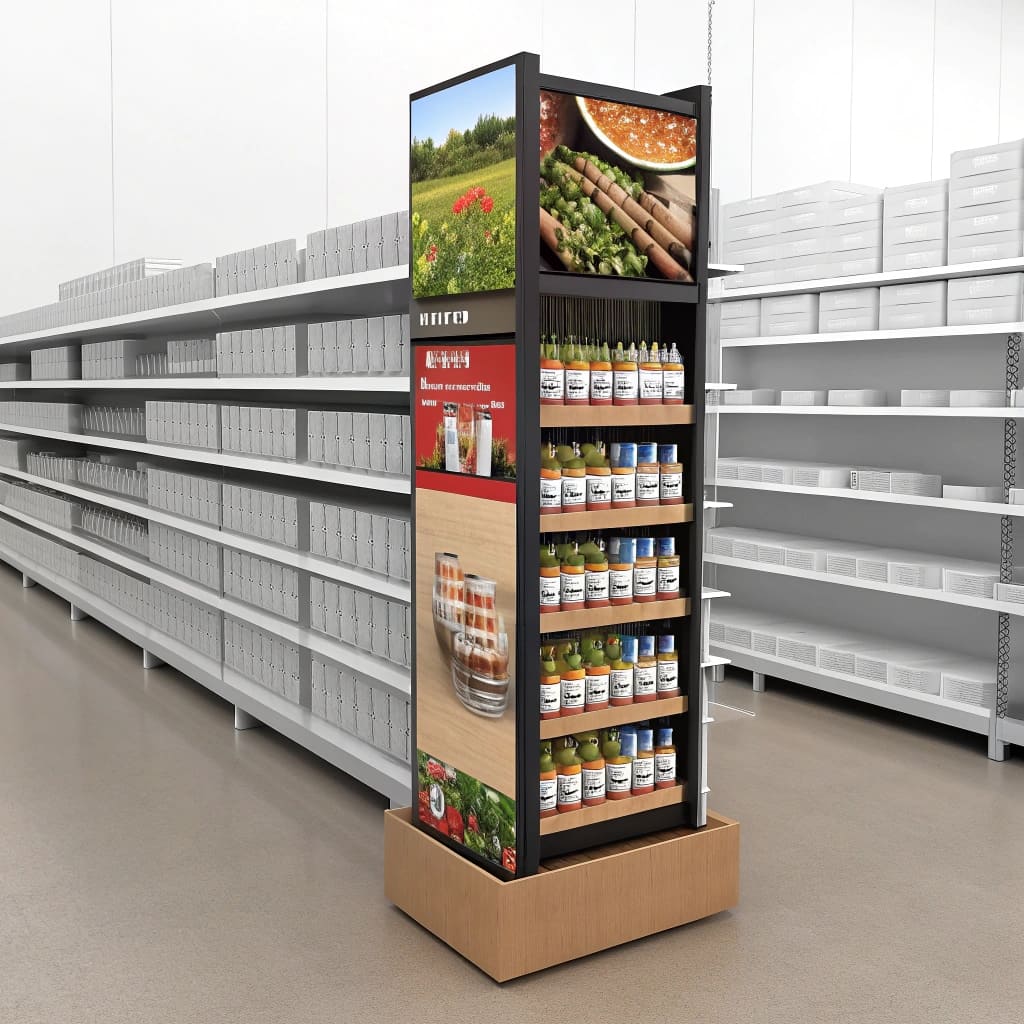
Unit 13
How to Choose the Right Custom Cardboard Displays for Retail Promotions?
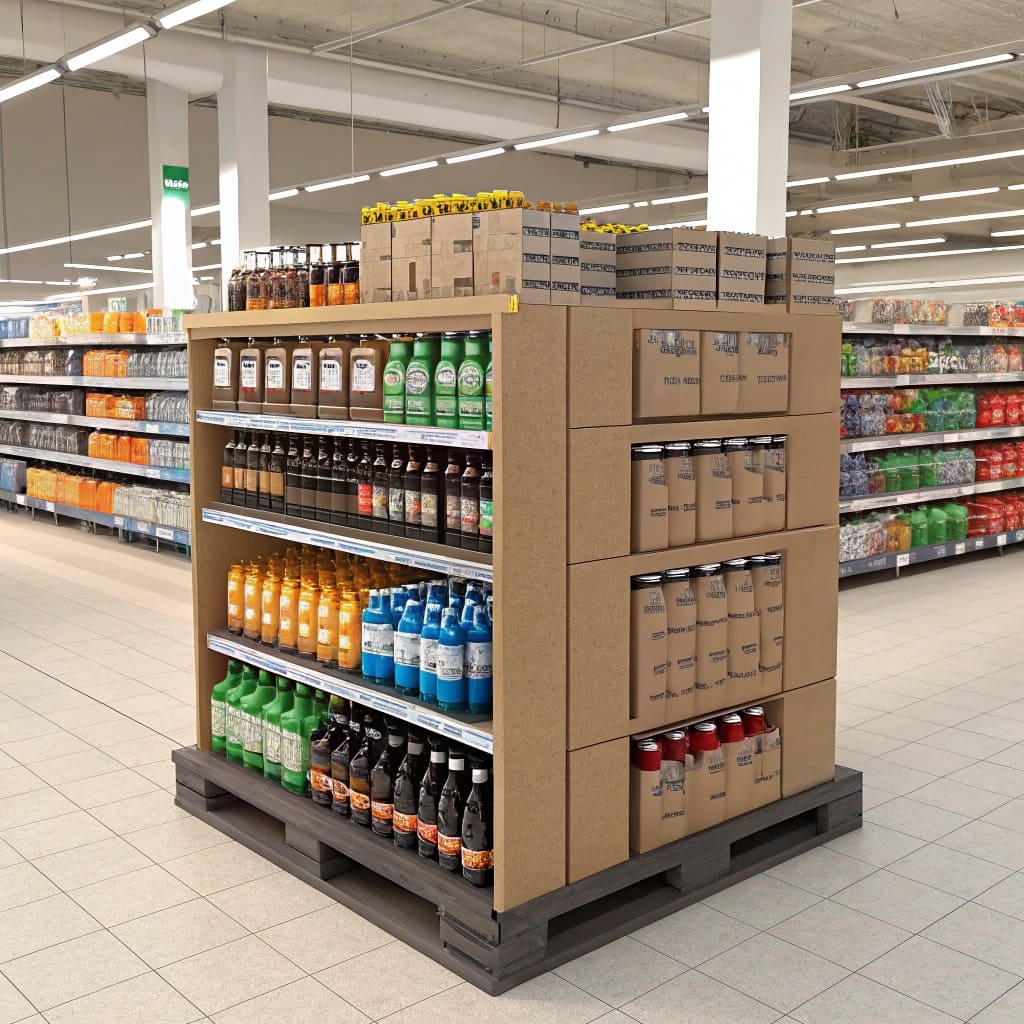
When selecting custom cardboard displays for your retail promotions, several key factors should be considered to ensure you’re getting the most effective solution for your brand and customers:
Purpose of the Display: Consider the specific goal of your display, whether it’s to promote new products, highlight a sale, or create an eye-catching seasonal display. This will guide the design, size, and placement of the display.
Design and Branding: Custom cardboard displays should align with your brand’s identity, including color schemes, logos, and messaging. Ensure the display design is visually appealing and clearly communicates your brand’s values.
Size & Structure: Depending on your product and the retail space, the size and structure of your cardboard displays may vary. Ensure it fits comfortably in your space without cluttering or overwhelming the store environment.
Durability & Quality: High-quality materials are crucial for durability, especially if the display will be placed in high-traffic areas. Opt for displays that can withstand handling and will not lose their form over time.
Ease of Assembly: One of the advantages of cardboard displays is their ease of installation. Choose a design that’s simple to assemble and install with minimal effort and tools, ensuring a smooth setup in your retail space.
Cost Efficiency: Cardboard displays are a cost-effective solution for promoting your products. Be sure to consider your budget, factoring in both initial costs and potential reordering for long-term campaigns.
Environmental Impact: Many retailers are now focusing on eco-friendly practices. Choose displays made from recyclable materials to align with sustainability goals and appeal to environmentally conscious customers.
By carefully considering these factors, you can select the right custom cardboard displays that not only enhance your product presentation but also improve customer engagement and drive sales.
Unit 14
Cardboard Displays vs. Other Display Solutions: Key Differences
Creating a successful cardboard displays requires careful attention to several essential design factors. These elements directly impact stability, branding impact, and overall effectiveness in retail environments. Here are the key aspects to consider:
| Aspect | Cardboard Displays | Other Display Solutions (Plastic/Metal) |
|---|---|---|
| Purpose | Showcasing and promoting products | Displaying products with added durability |
| Material | Recyclable cardboard, customizable designs | Plastic, metal, or wood materials |
| Cost | Affordable and cost-effective | Typically more expensive due to materials |
| Eco-Friendliness | Fully recyclable and environmentally friendly | Often less eco-friendly, non-recyclable |
| Customization | Highly customizable in terms of size, design, and branding | Limited customization options, often fixed designs |
| Weight and Mobility | Lightweight and easy to transport and set up | Heavier, requiring more effort to move and set up |
| Durability | Strong and durable for short-term use | More durable for long-term use but may lack flexibility |
| Applications | Perfect for promotions, product launches, and in-store displays | Suitable for permanent or high-durability needs, such as large store fixtures |
| Sustainability | Supports sustainable marketing strategies | Less eco-friendly depending on material used |
Popdisplay offers customizable cardboard displays that are designed to fit the unique needs of your business. With easy setup, cost-efficiency, and sustainability in mind, our displays provide a smart solution for product promotion in any retail environment. Let us help you create the perfect display to elevate your brand and boost sales.
Unit 15
Understanding Corrosion and Its Impact on Cardboard Displays Durability
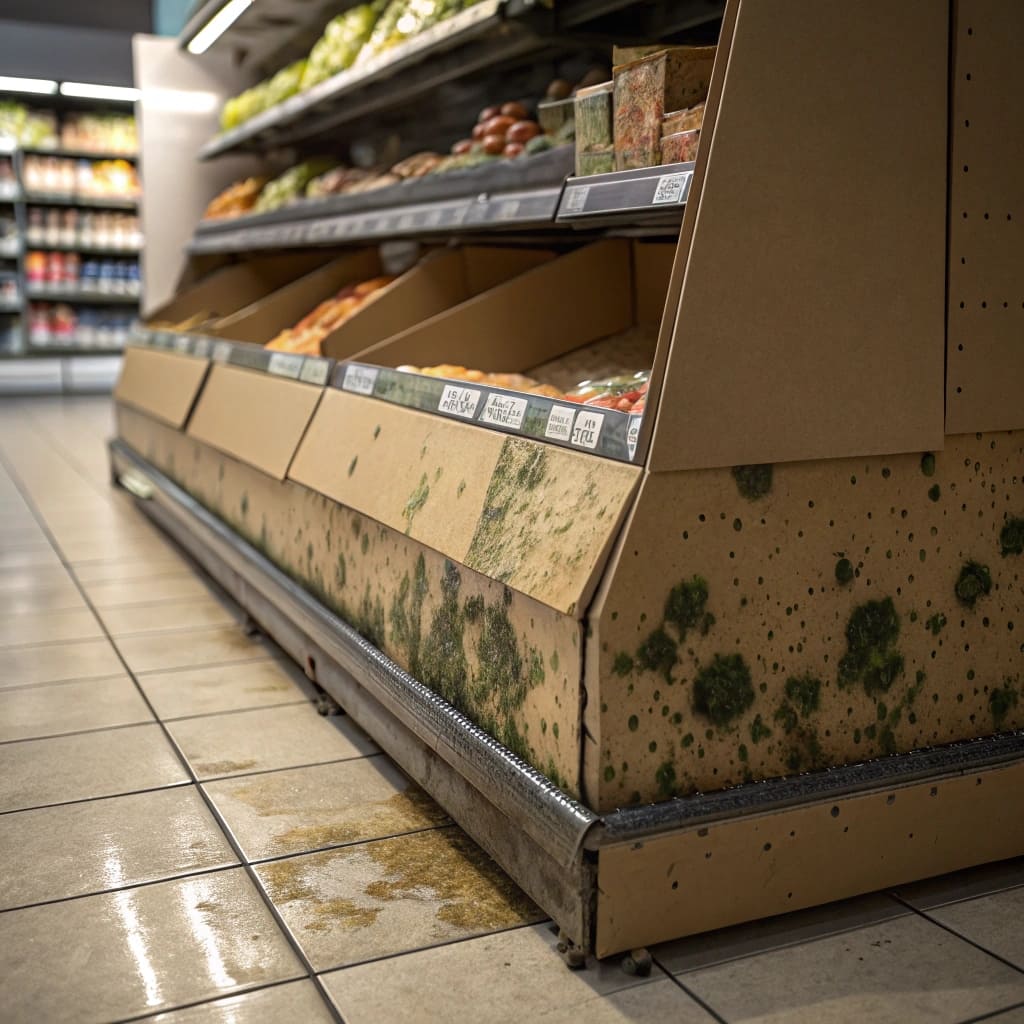
Corrosion is an ongoing process where materials deteriorate due to environmental exposure, and this is not just an issue for metals. Even materials like cardboard can face degradation when exposed to moisture, humidity, and varying temperatures.
For cardboard displays, exposure to these elements can significantly shorten their lifespan, causing the displays to lose their structural integrity, become soggy, or even fall apart. This is especially concerning in retail environments where displays need to maintain their appearance and functionality throughout promotional periods.
To avoid the effects of "corrosion" on cardboard displays, it’s essential to ensure proper handling, storage, and protective packaging. By understanding these potential risks and implementing effective preventative measures, businesses can optimize the performance of their displays, ensuring they maintain their impact and support brand visibility for the entire duration of the campaign.
To ensure maximum durability, businesses should consider:
- Moisture-resistant coatings to prevent warping and softening.
- High-quality corrugated materials designed for added strength.
- Proper placement away from areas prone to spills or excessive humidity.
- Reinforced structures for displays holding heavier products.
By implementing these protective measures, cardboard displays can maintain their visual appeal and stability, ensuring an effective and long-lasting retail presence.
Unit 16
How Does a Cardboard Displays Maintain Stability?
A well-designed cardboard displays maintains stability by incorporating a strong base, reinforced panels, and precise weight distribution to prevent tipping, bending, or collapsing. When a display is used in retail settings, especially for heavy or high-volume products, its structural integrity is essential for ensuring a professional and reliable presentation.
A stable display is achieved through several key design elements:
- Reinforced Base and Support Panels: A wide and sturdy base helps distribute weight evenly, preventing wobbling or tilting.
- Interlocking Tabs and Secure Folding Mechanisms: These features strengthen the connections between panels, ensuring a firm and reliable structure.
- Proper Weight Distribution: Heavy products are placed on the lower shelves, while lighter items are positioned on top, maintaining balance.
- High-Quality Corrugated Cardboard: Double-wall or reinforced cardboard materials add durability and prevent premature wear or sagging.
By optimizing these structural elements, a cardboard displays can securely hold products, maintain visual appeal, and enhance the overall shopping experience. Properly designed displays not only protect the integrity of the setup but also reduce the need for frequent adjustments or replacements, saving costs for retailers.
At Popdisplay, we specialize in custom-engineered cardboard displays that offer exceptional stability, durability, and branding impact. Whether for floor displays, countertop displays, or pallet displays, our solutions ensure a secure and visually appealing retail presence.
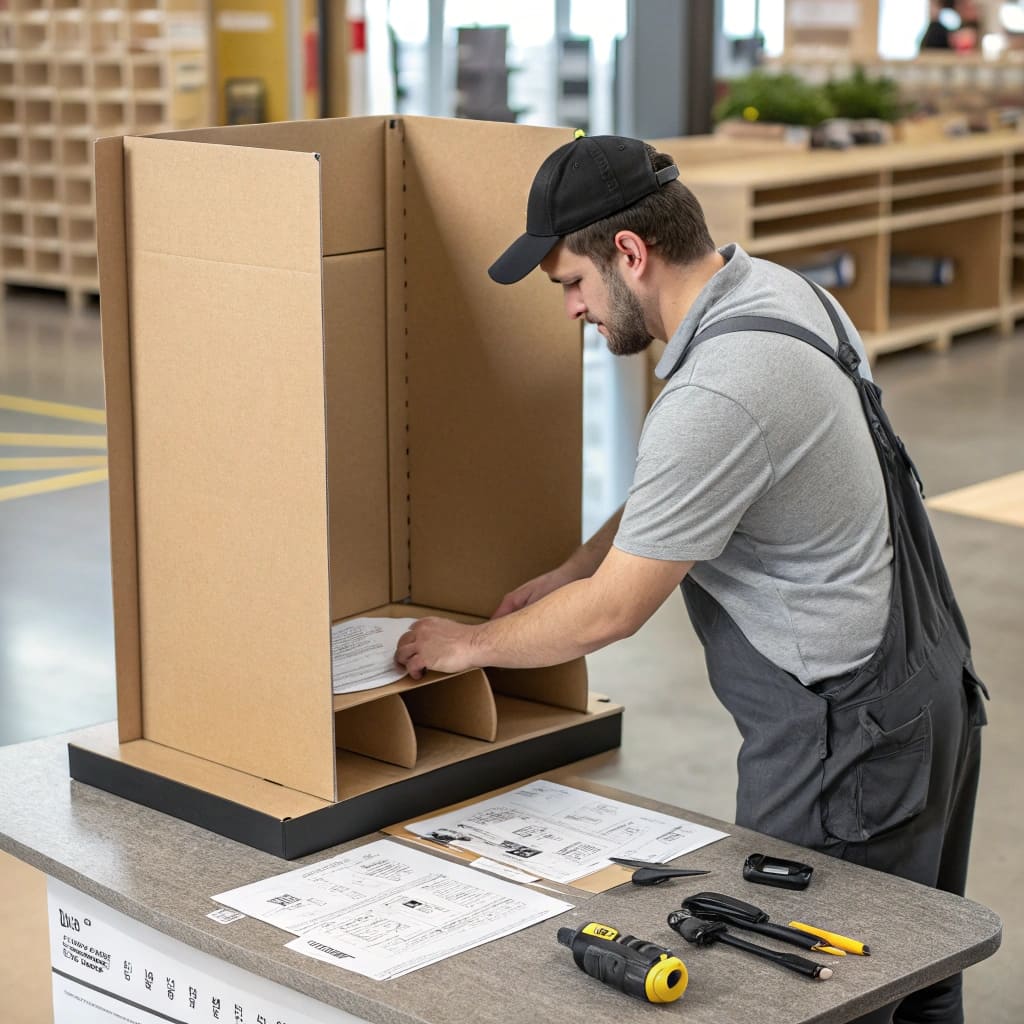
Unit 17
Understanding the Impact of Improper Grounding on Cardboard Displays
What is Grounding in Cardboard Displays?
Grounding in the context of cardboard displays refers to the process of ensuring that the display structure and materials are stable and resistant to environmental factors like humidity, weight distribution, and pressure. While the term "grounding" may typically refer to electrical systems, for cardboard displays, it involves creating a well-balanced, strong foundation to prevent structural weaknesses. A display that lacks proper grounding could lead to instability or deformation, negatively affecting product presentation and customer experience.
The Problems with Improper Grounding in Cardboard Displays
When a cardboard displays is not properly designed or stabilized, several issues may arise:
- Structural Weakness: Without proper reinforcement, cardboard displays may become flimsy and unstable, causing them to collapse or lose their shape under the weight of products.
- Increased Downtime: Display breakdowns or deformation result in time-consuming repairs or replacements, disrupting your sales operations.
- High Costs: Replacing damaged displays and losing out on sales opportunities can lead to increased operational costs.
- Poor Brand Presentation: An unstable or poorly constructed display negatively impacts the visual appeal of your products and could diminish your brand's reputation in the eyes of customers.
- Shortened Display Lifespan: Without reinforcement, the display may wear out quickly, especially in high-traffic environments, shortening its effective life span.
To avoid these problems, it’s crucial to select a cardboard displays that is designed with proper structural support and stability in mind. Ensuring that the display is well-grounded and sturdy will help maintain its functionality and protect your investment.
Popdisplay specializes in high-quality, custom-designed cardboard displays that are built to last. With durable materials and precision design, we ensure that your displays remain stable, visually appealing, and effective in showcasing your products.

Section 1
Side Effects of Cardboard Displays Usage
While cardboard displays are widely used for retail promotions due to their affordability, customization options, and eco-friendliness, some challenges can arise during their use. Though these issues are generally rare, understanding potential side effects is important to ensure the longevity and effectiveness of your display. Below are some possible concerns when using cardboard displays:
- Structural Weakness: In certain conditions, cardboard displays may not be as sturdy as expected, especially when exposed to moisture or heavy products. This can lead to bending, warping, or collapse.
- Damage from Handling: Frequent handling or transportation may result in scuffs, tears, or dents, particularly if the display is not properly packaged or protected.
- Color Fading: Over time, the vibrant prints on cardboard displays can fade due to exposure to sunlight or artificial lighting, affecting the display's visual appeal.
- Environmental Sensitivity: While cardboard is eco-friendly, it is also sensitive to humidity and moisture. In wet environments, cardboard displays may weaken, leading to a loss of structural integrity.
- Wear and Tear: Frequent handling or prolonged use can lead to creases, dents, or tears, affecting the display’s visual appeal.
- Assembly Errors: Improper setup can weaken the display’s structure, making it unstable or ineffective in showcasing products.
Despite these potential issues, the benefits of cardboard displays, such as their versatility, cost-effectiveness, and eco-friendliness, often make them a top choice for short-term retail use. Proper care and handling can minimize these risks, ensuring your displays remain effective and eye-catching.
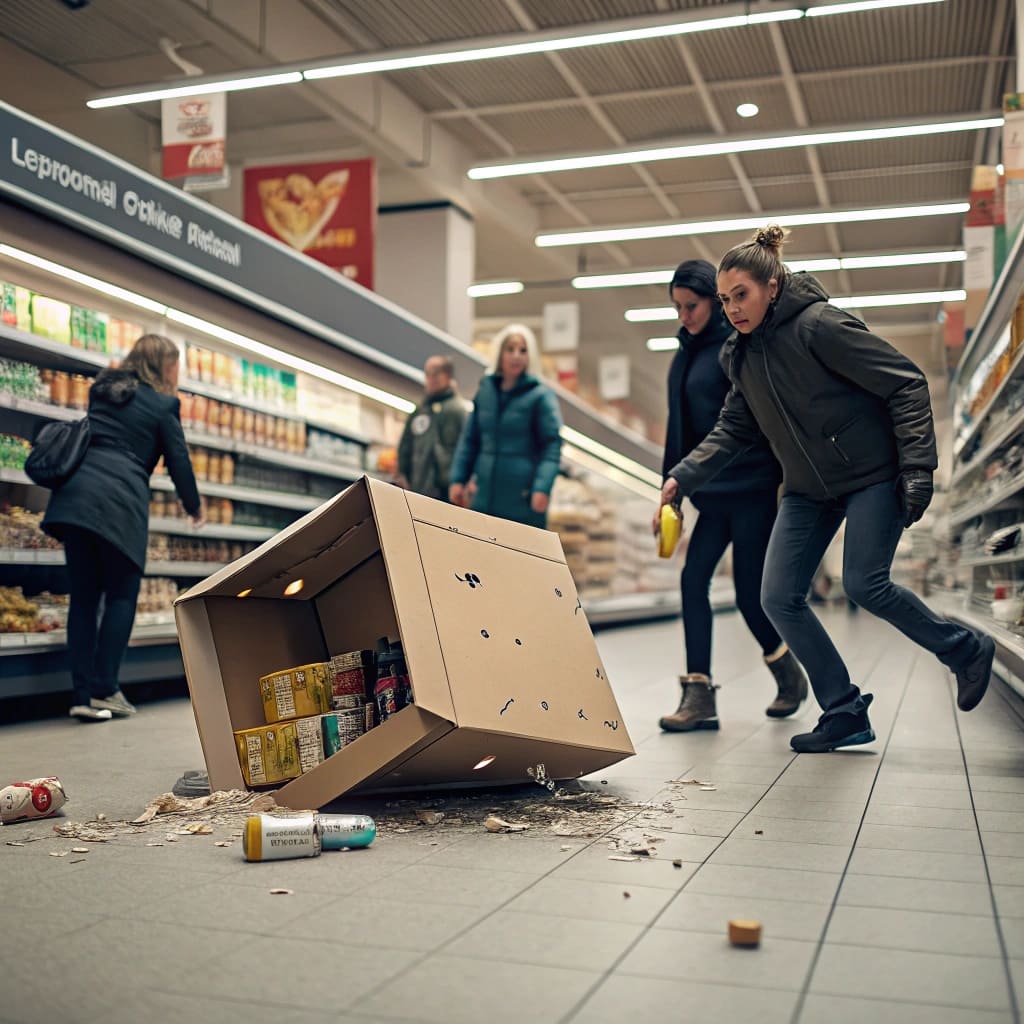
Section 2
Lifespan of Cardboard Displays
Cardboard displays are widely appreciated for their affordability, flexibility, and eco-friendliness. However, their lifespan can vary depending on usage, environment, and handling. Unlike more durable materials, cardboard is designed primarily for short-term or seasonal promotions, making its expected lifespan considerably shorter.
Under ideal conditions, a well-maintained cardboard displays can last for several weeks or even a few months, particularly in dry, controlled environments. The durability of cardboard is largely influenced by factors such as:
- Exposure to Moisture: Cardboard is highly susceptible to water and humidity. If exposed to moisture, it can weaken, warp, or even collapse, significantly shortening its lifespan.
- Weight and Product Load: While cardboard displays can support a reasonable amount of weight, excessive load or heavy products can cause bending or collapse, reducing the display’s overall lifespan.
- Handling and Transportation: Frequent movement, rough handling, or improper storage can cause dents, tears, or creases, affecting the display’s appearance and structural integrity.
- Environmental Factors: Exposure to sunlight or harsh lighting can cause the printed graphics on cardboard displays to fade over time, diminishing the display’s visual impact.
To maximize the lifespan of your cardboard displays, it's important to handle it with care, store it in a dry, climate-controlled environment, and use it for short-term promotional purposes. Regular checks for signs of wear and tear can help ensure the display continues to look fresh and hold up well throughout its intended use period.
Section 3
Cardboard Displays Use Precautions
To ensure the longevity and optimal performance of your custom cardboard displays, it’s essential to follow the proper handling, maintenance, and placement guidelines. These displays are designed for efficiency and durability, but they require specific care to maintain their structural integrity and visual appeal. Adhering to the following best practices will help maximize their lifespan and effectiveness in showcasing your products.
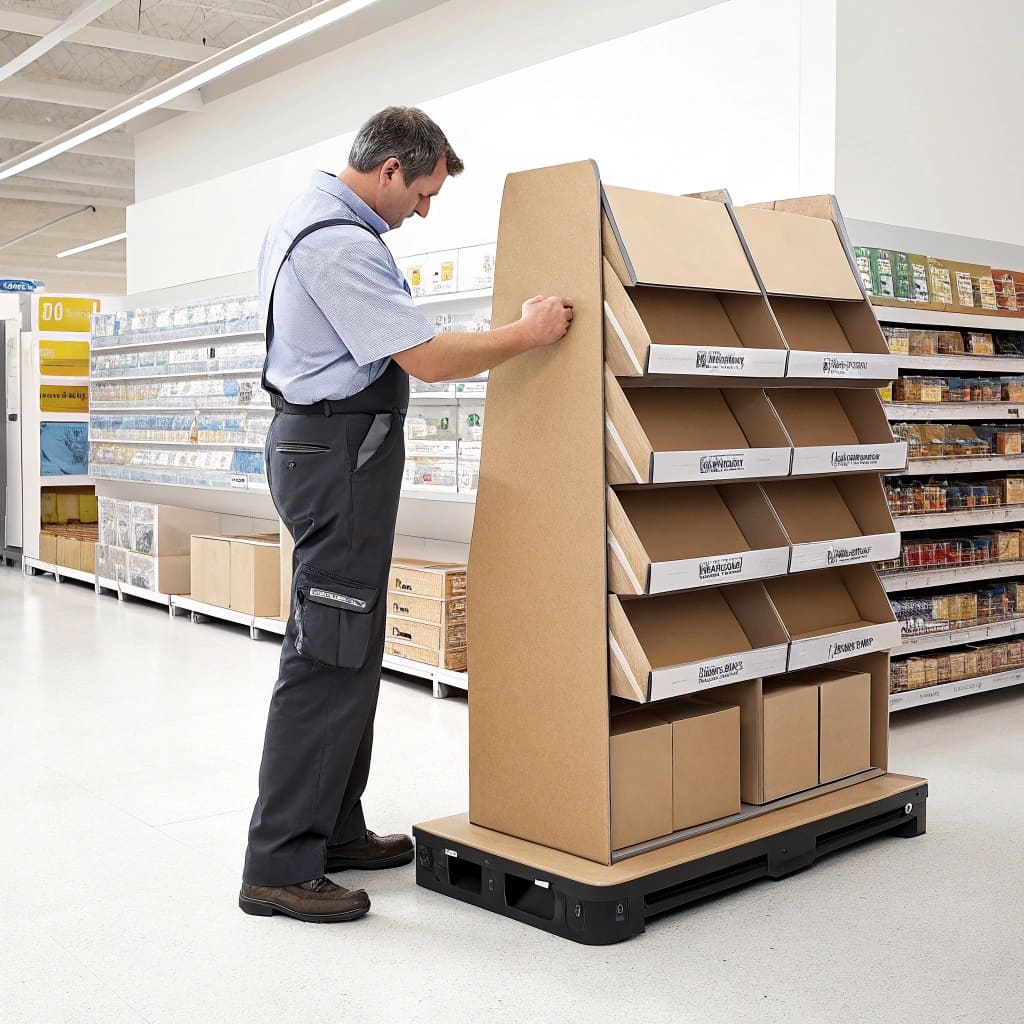
Key Precautions for Maintaining Cardboard Displays
- Avoid Heavy Loads or Excessive Pressure: Do not overload your cardboard displays with excessive weight, as this can cause it to bend or collapse. Ensure your display is used within its designed capacity to maintain its structural integrity and visual appeal.
- Proper Cleaning and Handling: Gently clean the surface of your display using a soft cloth. Avoid using harsh chemicals or abrasive materials that could damage the print or the cardboard. Store your display in a dry, cool place, away from direct sunlight or moisture to prevent warping or fading.
- Mind the Environment: Avoid exposing your display to excessive humidity, heat, or direct sunlight for prolonged periods. These environmental factors can cause the cardboard to lose its shape or cause colors to fade, negatively impacting the overall presentation.
- Proper Setup and Assembly: Follow the assembly instructions carefully to avoid damaging the display during setup. Ensure the display is positioned on a level surface to prevent it from tilting or falling.
- Routine Inspections: Periodically check your display for signs of wear, such as bending, tearing, or fading. Early identification of issues allows for quick repairs or replacements, ensuring your display remains in top condition.
- Follow Manufacturer’s Guidelines: Always follow the recommended guidelines for installation, use, and care provided by the manufacturer. This will help ensure your display remains functional, attractive, and durable for as long as possible.
- Transportation & Handling: When moving the display, handle it gently to avoid tears or dents. If shipping the display pre-assembled, use protective packaging to prevent damage in transit.
By following these simple yet effective precautions, you’ll significantly extend the lifespan of your custom cardboard displays, ensuring they continue to engage customers and effectively showcase your products in a variety of retail or promotional environments.
Section 4
Installation and Maintenance of Cardboard Displays
Proper installation and routine maintenance are key to ensuring your cardboard displays perform effectively and maintain their appearance over time. By following these best practices, you can maximize the impact of your display and ensure it remains in top condition:
- Ensure Proper Setup: For optimal performance, it's important that your cardboard displays is assembled correctly and placed securely. Ensure that all components are tightly fitted and stable to prevent tipping or damage. Proper placement is also crucial for visibility, so position your display in a high-traffic area where it will attract the most attention.
- Regular Inspections: Periodic checks are necessary to ensure the display is in good condition and effectively showcasing your products. Look for any signs of wear, such as bending, fading graphics, or structural weakness, especially in high-traffic areas. Addressing minor issues early will help prolong the display’s lifespan.
- Avoid Common Setup Mistakes: Incorrect assembly, such as improperly folding or failing to reinforce certain sections, can compromise the display’s stability. Follow the assembly instructions carefully to avoid these common errors and ensure your display is durable and functional from the start.
- Routine Maintenance: Regular upkeep of the cardboard displays, such as cleaning and replacing worn-out components, helps maintain its visual appeal and durability. If your display is exposed to heavy foot traffic or environmental factors like humidity, it's important to check for any signs of damage and repair or replace parts as needed.
By adhering to these guidelines, you can ensure that your cardboard displays continue to attract attention and effectively promote your products. Proper installation and maintenance are essential for maximizing the display’s effectiveness and ensuring its long-term success in driving customer engagement.
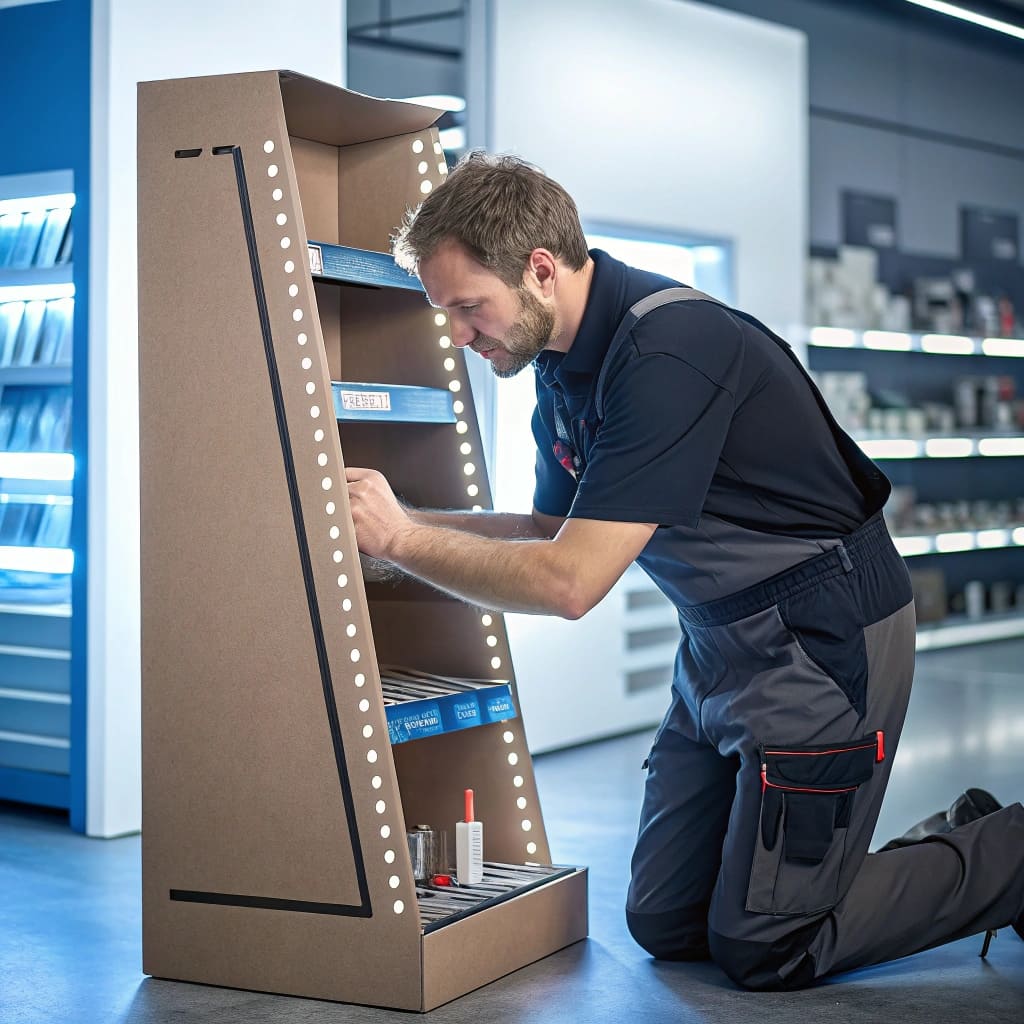
Section 5
How to Install Custom Cardboard Displays
Installing custom cardboard displays is a straightforward process, but ensuring that they are set up correctly will maximize their effectiveness in promoting your products. Follow this step-by-step guide to ensure proper installation.
1. Planning and Preparation
- Assess the Display Area: Evaluate your retail space to determine the most effective placement for your display. Consider foot traffic, visibility, and proximity to complementary products to ensure maximum customer engagement.
- Choose the Right Display Type: Based on the size and weight of your products, select the appropriate style of custom cardboard displays (e.g., floor-standing, countertop, or end-cap displays).
- Prepare the Space: Clean and clear the installation area, ensuring enough space for the display to be set up securely without obstruction.
2. Unboxing and Assembling the Display
- Unbox Carefully: Open the packaging carefully, checking that all parts of the display are present. Review the assembly instructions to make sure you understand the process before starting.
- Assemble the Frame: If your display includes a stand or frame, follow the instructions to assemble it. Ensure that all components fit securely and that the display structure is stable.
- Attach Branding and Graphics: If your display includes printed graphics or logos, ensure they are placed correctly for maximum visibility. Make sure the branding is clear and attractive.
3. Placing the Products on the Display
- Organize Products Neatly: Arrange your products on the display according to the design plan. Ensure that they are easily accessible and attractively displayed. Group similar items together or organize by size or color to guide the customer’s eye.
- Ensure Stability: Ensure that the products are securely placed on the shelves or hooks to prevent them from toppling over or becoming disorganized during customer interaction.
4. Securing the Display
- Check Stability: Make sure the display is stable and level. Adjust any components if necessary to prevent tipping or leaning, especially in high-traffic areas.
- Anchor the Display (If Needed): If your display is particularly large or if you’re setting it up in a busy area, consider using additional support or securing it to prevent accidental falls.
5. Positioning and Placement
- Place the Display in the Optimal Spot: Position the display in a high-traffic area, making sure it is visible from multiple angles. For floor-standing displays, position them at eye-level to attract attention.
- Ensure Accessibility: Ensure that customers can easily interact with the display and that it doesn’t obstruct pathways or other important displays.
6. Final Check
- Inspect the Display: Walk around the display to ensure everything is in place. Check for any loose parts, misaligned graphics, or any issues with the display that could affect its functionality or aesthetics.
- Adjust for Visibility: Ensure that the most eye-catching products or offers are prominently featured on the display for maximum impact.
7. Post-Installation Maintenance
- Regular Monitoring: Regularly check the display to make sure the products remain in place, and the display remains intact. Replace any damaged graphics or products promptly to maintain a fresh look.
- Refill and Update as Needed: Keep the display stocked with your products, and update it with new promotional items or designs to keep it engaging for customers.
By following these steps, your custom cardboard displays will be effectively set up to capture attention, boost sales, and enhance your brand presence in retail spaces. Proper installation ensures that your displays are functional, visually appealing, and ready to drive customer engagement.
Section 6
How We Ensure the Quality of Our Custom Cardboard Displays
At Popdisplay, we prioritize the quality of every cardboard displays we produce. We are committed to providing you with displays that meet the highest standards in terms of durability, design, and functionality. Through a rigorous quality control process, we ensure each display is meticulously crafted and tested to meet your exact requirements. Our goal is to exceed your expectations, delivering exceptional products that elevate your brand and enhance the success of your retail campaigns.
We implement multiple testing procedures to assess material strength, coating durability, weight capacity, stability, and longevity. These stringent quality assurance protocols ensure that every display exceeds expectations and performs effectively in stores.
| Test Items | Test Conditions | Qualification |
|---|---|---|
| Material Integrity | High-pressure testing | No structural damage |
| Material Strength | Compression test with 10-50kg load | No deformation or collapse under recommended load capacity |
| Printing Quality | Full-color, high-resolution print test | No visible color differences, sharp and vibrant printing |
| Coating & Finishing | Scratch & impact resistance test | No peeling, fading, visible dents, or scratches |
| Weight Capacity | Load testing on display samples | Supports up to specified weight |
| Durability Test | Extended exposure to light and heat (72 hours) | No fading, warping, or cracking |
| Structural Integrity | Drop test from 1m height on flat surface | No major dents, bends, or broken parts |
| Moisture Resistance | Exposure to 50-60% humidity for 24 hours | No warping, softening, or print damage |
| Edge Durability | Folding and unfolding multiple times | No tearing, cracking, or weakened structure |
| Assembly Quality | Step-by-step assembly process evaluation | Easy setup with no errors |
| Assembly Efficiency | Setup by an untrained individual | Quick and easy assembly within 2-5 minutes |
| Packaging Durability | Drop testing and shipping simulation | No damage during transit |
| Eco-Friendliness | Recyclability and material certification check | 100% recyclable material, compliant with sustainability standards |
We take great care to ensure that each custom cardboard displays is designed and manufactured to be both functional and visually appealing, with attention to detail at every stage of production. By adhering to these stringent quality checks, we guarantee that your displays will arrive in perfect condition, ready to showcase your products effectively and attractively.
Section 7
Advantages of Custom Cardboard Displays
Custom cardboard displays are versatile and cost-effective promotional tools that enhance brand visibility in retail environments. These displays combine functionality with eye-catching design, making them a perfect solution for businesses looking to showcase their products creatively. Below are the key advantages of using custom cardboard displays:
Highly Customizable for Any Product: Cardboard displays can be fully tailored to your specific brand needs, including size, shape, color, and graphic design. This flexibility ensures that your display aligns perfectly with your brand identity, making it stand out in any retail setting.
Eco-Friendly & Sustainable Solution: Made from recyclable materials, custom cardboard displays offer a sustainable option for businesses focused on reducing their environmental impact. They provide a green solution without sacrificing quality or design.
Cost-Effective & Lightweight Marketing: As an affordable alternative to traditional display methods, cardboard displays allow businesses to execute large-scale marketing campaigns without breaking the budget. They are ideal for businesses of all sizes seeking high-impact advertising at a low cost.
Durable and Strong: Despite being lightweight, custom cardboard displays are designed to hold heavy products securely. With proper design and materials, they can withstand the rigors of transportation and retail environments, ensuring your products are presented professionally.
Easy to Assemble and Transport: One of the key advantages is the simplicity of assembly. Custom cardboard displays are easy to set up and take down, saving time and effort. Their flat-pack design also makes them easy to transport and store, optimizing space and reducing shipping costs.
- Attractive and Eye-Catching: With vibrant colors and creative designs, cardboard displays draw customer attention and effectively highlight products. Their visually appealing nature makes them ideal for point-of-sale displays, trade shows, and in-store promotions.
- Enhanced Brand Visibility: Custom-printed designs allow businesses to showcase their logos, colors, and promotional messages effectively, reinforcing brand recognition and attracting customer attention.
- Efficient Space Utilization: With customizable shelving, hooks, and graphic panels, cardboard displays can be designed to optimize retail space, making them an ideal solution for any environment, from retail stores to exhibitions.
- Increased Customer Engagement: By positioning your product in a visually appealing and accessible way, custom cardboard displays can enhance customer interaction, ultimately boosting sales and product awareness.
Minimal Maintenance Requirements Cardboard displays are low maintenance and easy to set up and transport. Their lightweight nature makes them a practical and hassle-free option for retail setups, saving you time and resources.
- Quick production with low manufacturing costs: Cardboard displays can be produced quickly at a lower cost compared to permanent fixtures, making them an ideal choice for seasonal or promotional campaigns.
- Versatile placement options for better product exposure: Suitable for various retail settings, including checkout counters, aisle displays, and standalone promotions, maximizing product visibility and sales potential.
- Flexible Design Options: Cardboard is highly versatile, allowing for various shapes, sizes, and features (such as hooks, shelves, or trays) to create displays that perfectly fit your product and retail environment.
- Full Product Protection: Keeps products organized, accessible, and well-presented while preventing damage during display and transportation.
- ersatile for All Industries: Perfect for showcasing everything from electronics and cosmetics to food, beverages, and specialty retail products.
In conclusion, custom cardboard displays are an excellent choice for businesses looking to combine design, durability, and cost-efficiency. They offer a smart, eco-friendly way to promote your products and enhance brand presence in retail spaces.
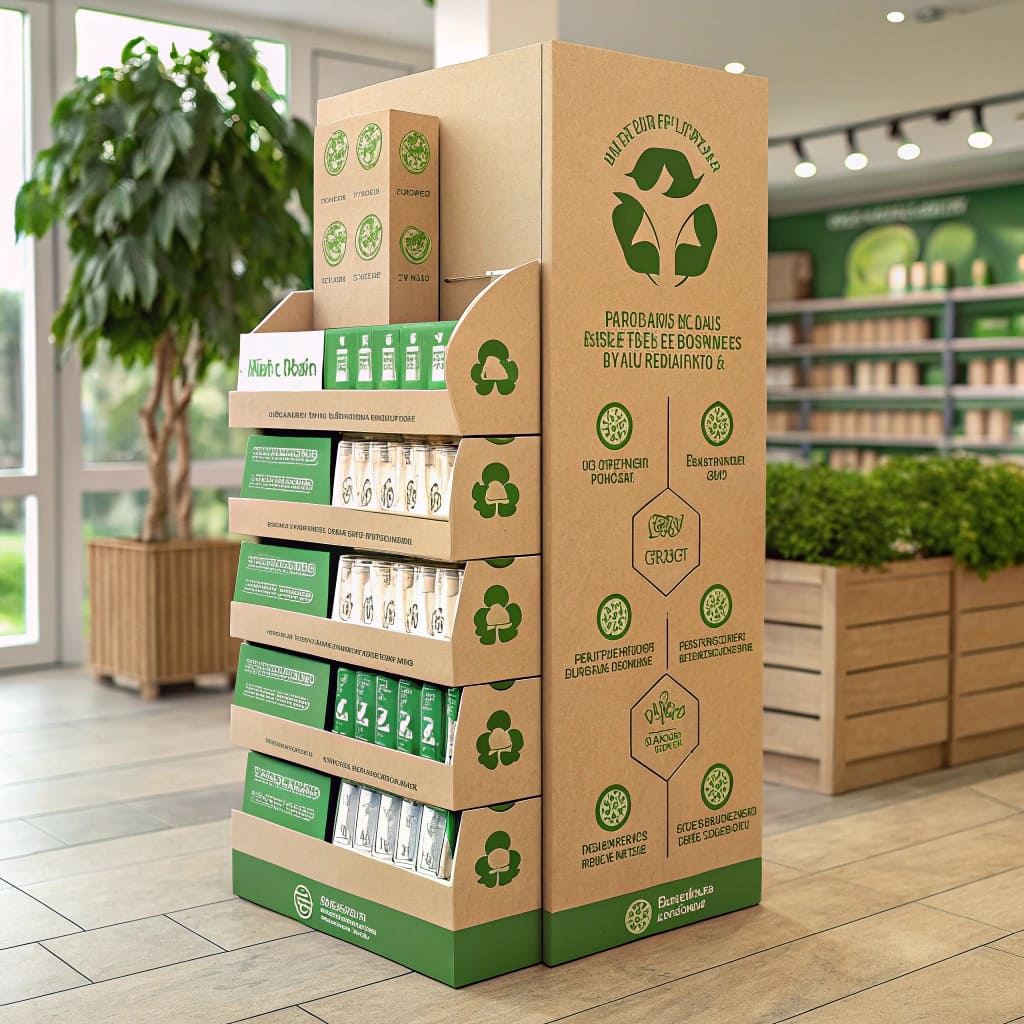
Section 8
Choosing the Best Custom Cardboard Displays for Your Business
At Popdisplay, we prioritize your business needs, ensuring that our custom cardboard displays are not just products, but solutions designed specifically for your requirements. Understanding the important role these displays play in your retail environment, we are committed to offering options that perfectly align with your branding and product presentation needs. Our approach helps you select a display solution that not only meets but exceeds your expectations for quality, performance, and reliability in your unique business setting.
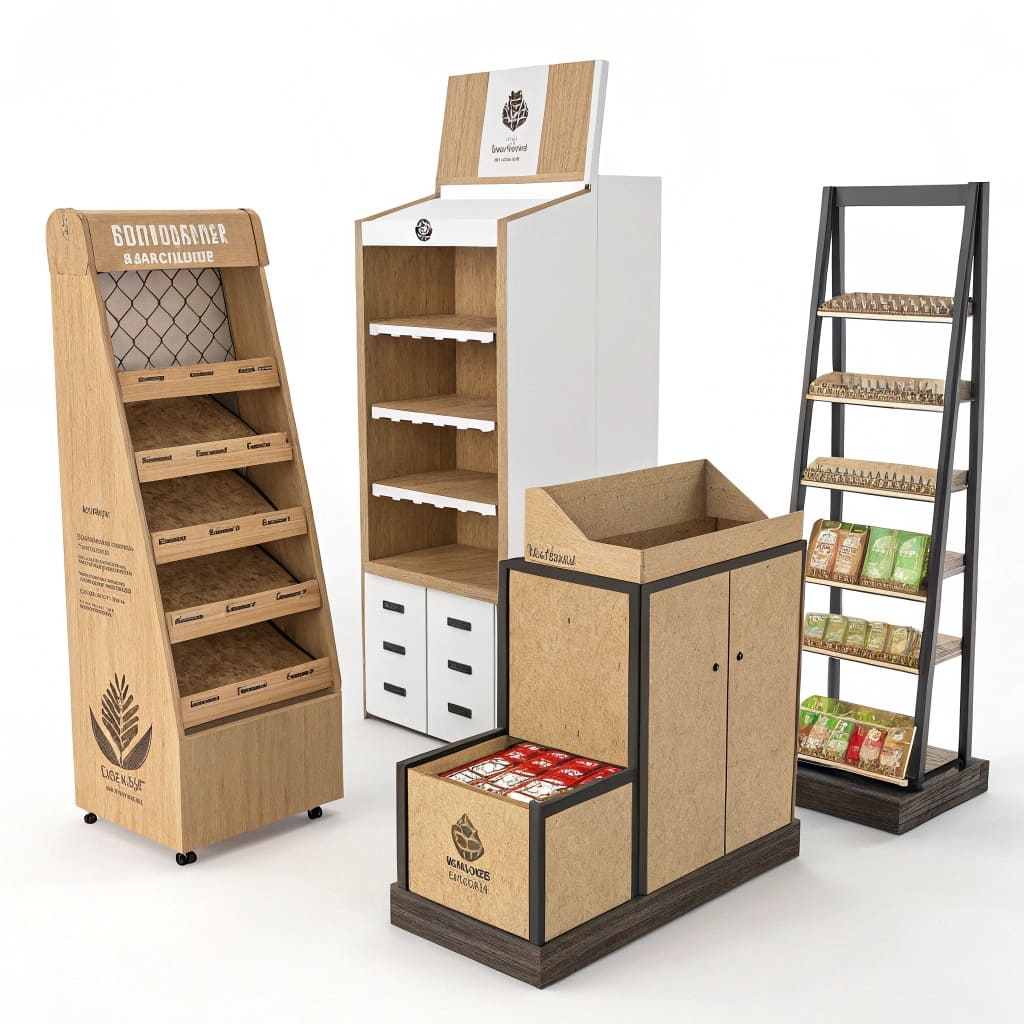
- Evaluate Your Display Environment: Consider the setting where the display will be used—whether it’s a retail store, trade show, or exhibition. Understanding the conditions, such as foot traffic and environmental factors, ensures the display is durable and practical for your specific needs.
- Product Compatibility: Choose a display that complements your product’s size, shape, and packaging. A well-matched display enhances product visibility and increases customer engagement.
- Design Flexibility: Accurately identifying the design features you need—such as color, graphics, and overall aesthetic—will help us create a display that aligns perfectly with your brand and marketing goals.
- Structural Integrity: The display should be able to hold your products securely without bending or collapsing. Selecting the right materials ensures that your display maintains its shape and performance, even during transportation.
- Branding and Customization: Ensure that the display includes your brand’s logo, colors, and other key design elements, allowing it to stand out and communicate your brand’s message effectively.
- Cost-Effectiveness: Opt for a display that fits within your budget while meeting your quality and durability needs. We offer high-quality, affordable solutions that maximize your return on investment.
- Reusability and Sustainability: Choose a display that supports your environmental goals. We offer sustainable cardboard materials that not only meet your display needs but also align with eco-friendly business practices.
- Ease of Assembly & Transportation: Opt for flat-packed or pre-assembled displays based on your logistics and setup requirements, ensuring a hassle-free installation in stores.
At Popdisplay, we’re dedicated to helping you select the custom cardboard displays that enhances your product’s presentation while optimizing space and performance in your retail or marketing environment. Let us help you find the best display solution for your business!
Section 9
How to Customize Your Cardboard Displays?
At Popdisplay, we offer a structured and professional approach to customizing cardboard displays, ensuring they are tailored to your brand’s marketing goals and retail needs. Follow these four detailed steps to turn your vision into a high-impact, custom-designed display solution:
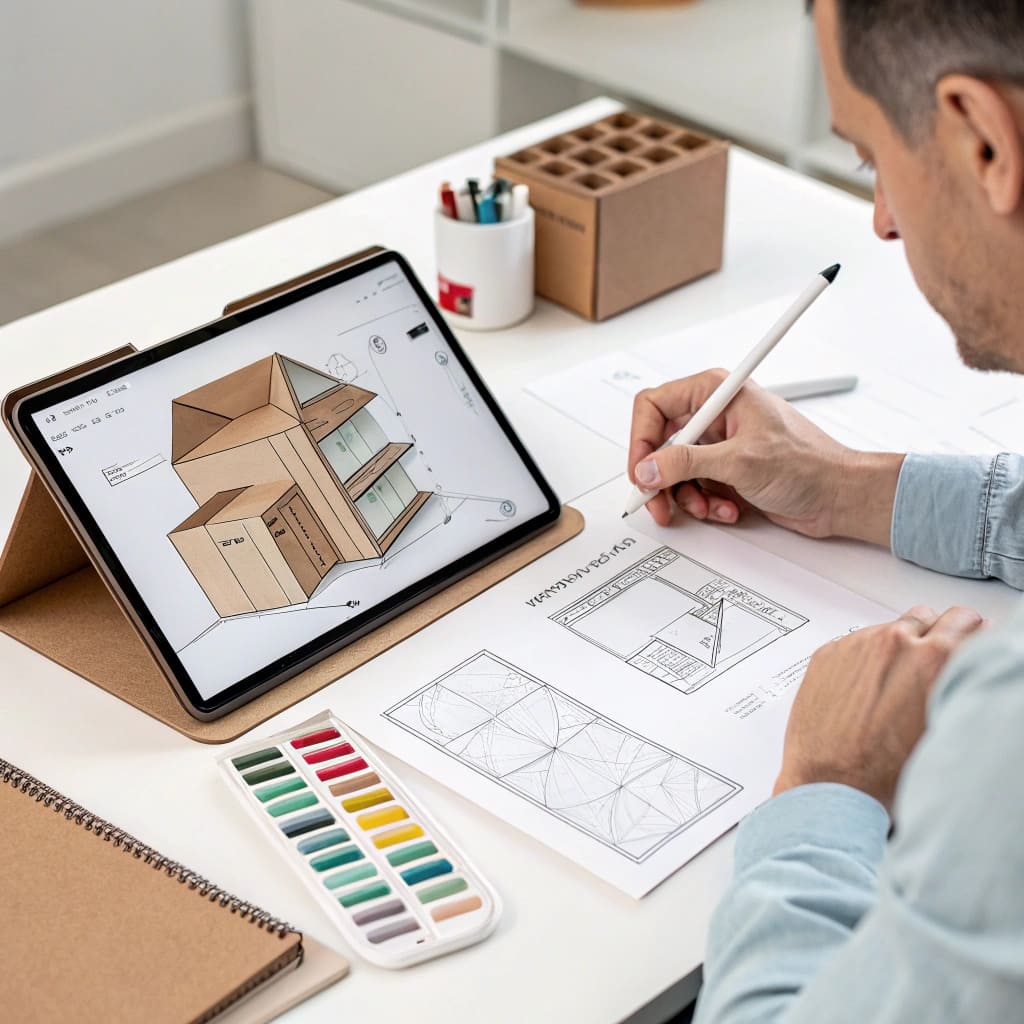
1. Define Your Display Requirements
To create the perfect cardboard displays, please provide key details about its intended use and environment. This includes:
Retail setting: Supermarkets, convenience stores, trade shows, etc.
Product weight & dimensions: Helps us determine the right structural strength.
Placement: Floor, countertop, shelf, or hanging display.
Expected display lifespan: Short-term promotions or long-term retail use.

2. Specify Your Branding & Printing Preferences
Clearly define your branding and design elements to ensure maximum visual impact. Choose from:
🎨 Printing methods: CMYK offset, flexographic, or UV printing.
📦 Finishing options: Gloss/matt lamination, embossing, hot stamping, spot UV.
🖼 Custom graphics & logos: We can help with high-resolution artwork setup.

3. Choose the Display Type & Features
Select the best display type for your marketing needs:
Floor Displays – Ideal for large promotions in retail stores.
Counter Displays – Perfect for impulse purchases at checkout areas.
Pallet Displays – Designed for bulk product showcasing in big-box stores.
Hook & Shelf Displays – Great for hanging or stacked products.
Other features to consider:
✔ Weight capacity – Light (≤5kg), Medium (5-15kg), or Heavy-duty (15kg+).
✔ Flat-packed or pre-assembled – For easier shipping & setup.

4. Submit Your Drawing & Specifications
For precise manufacturing, send us detailed drawings, dimensions, or concept sketches of your ideal cardboard displays. If you need help, our design team can assist with 3D renderings and prototypes to ensure the perfect fit.
By following these steps, Popdisplay ensures that your custom cardboard displays is visually appealing, structurally strong, and retail-ready to boost sales and brand presence!
In Summary
Selecting the perfect cardboard displays for your business can seem challenging, especially if you're new to this type of product. However, understanding the key features of cardboard displays will make the process much simpler.
At Popdisplay, we’ve been a trusted name in the cardboard displays industry for years, offering fully customizable solutions to meet the specific needs of each client. Whether you’re working on a small-scale project or a large-scale retail campaign, our team is here to support you every step of the way. We can create custom prototypes and adjust designs until they meet your exact specifications—ensuring your displays are perfectly suited to your brand’s needs.
Get in touch
Let’s raise your sales to the next level, NOW! →
Fill out the form to download our free product catalogue, and get the can help you inspire new concepts on how to increase sales and profits. Let's make your event memorable!
